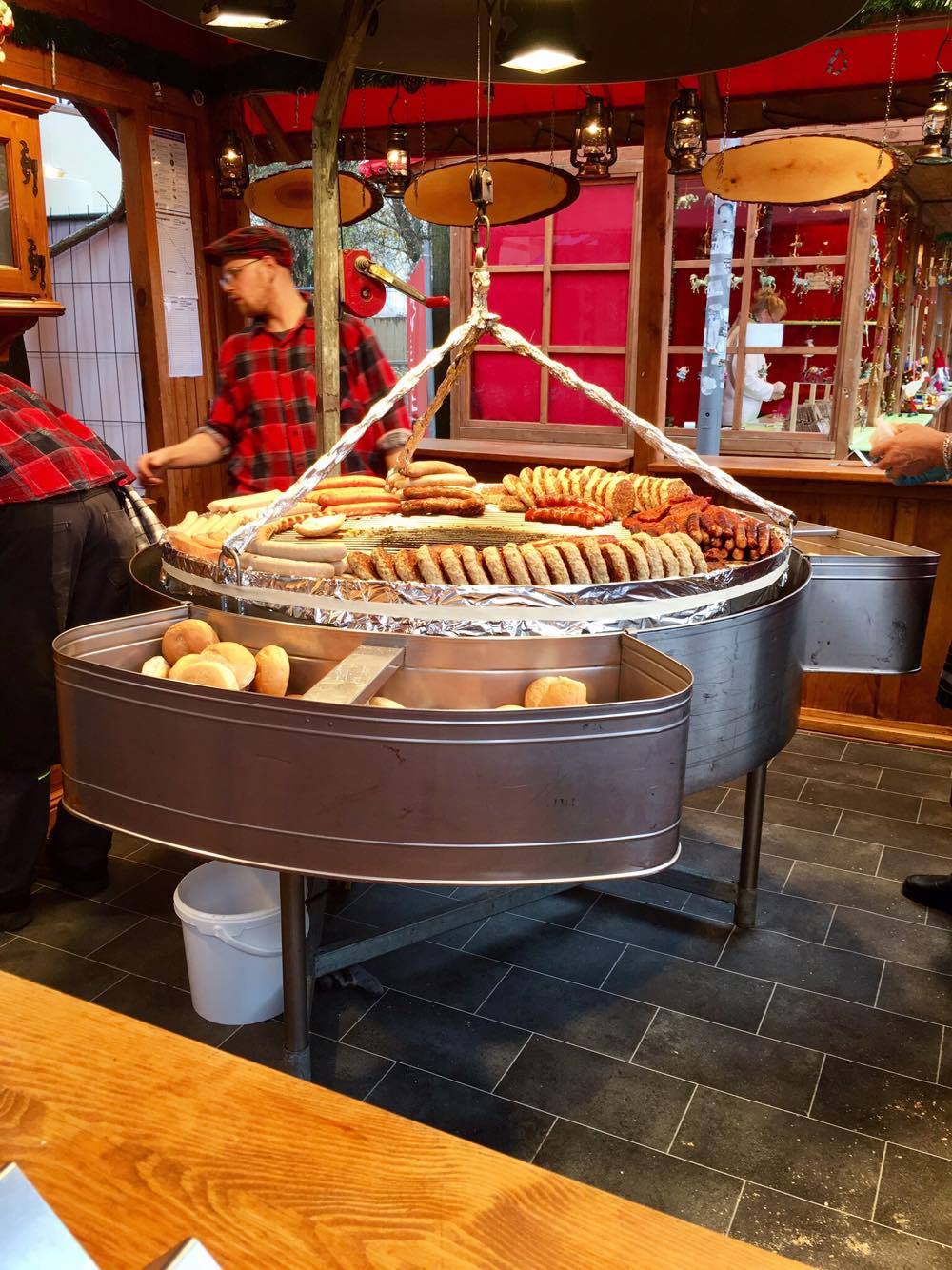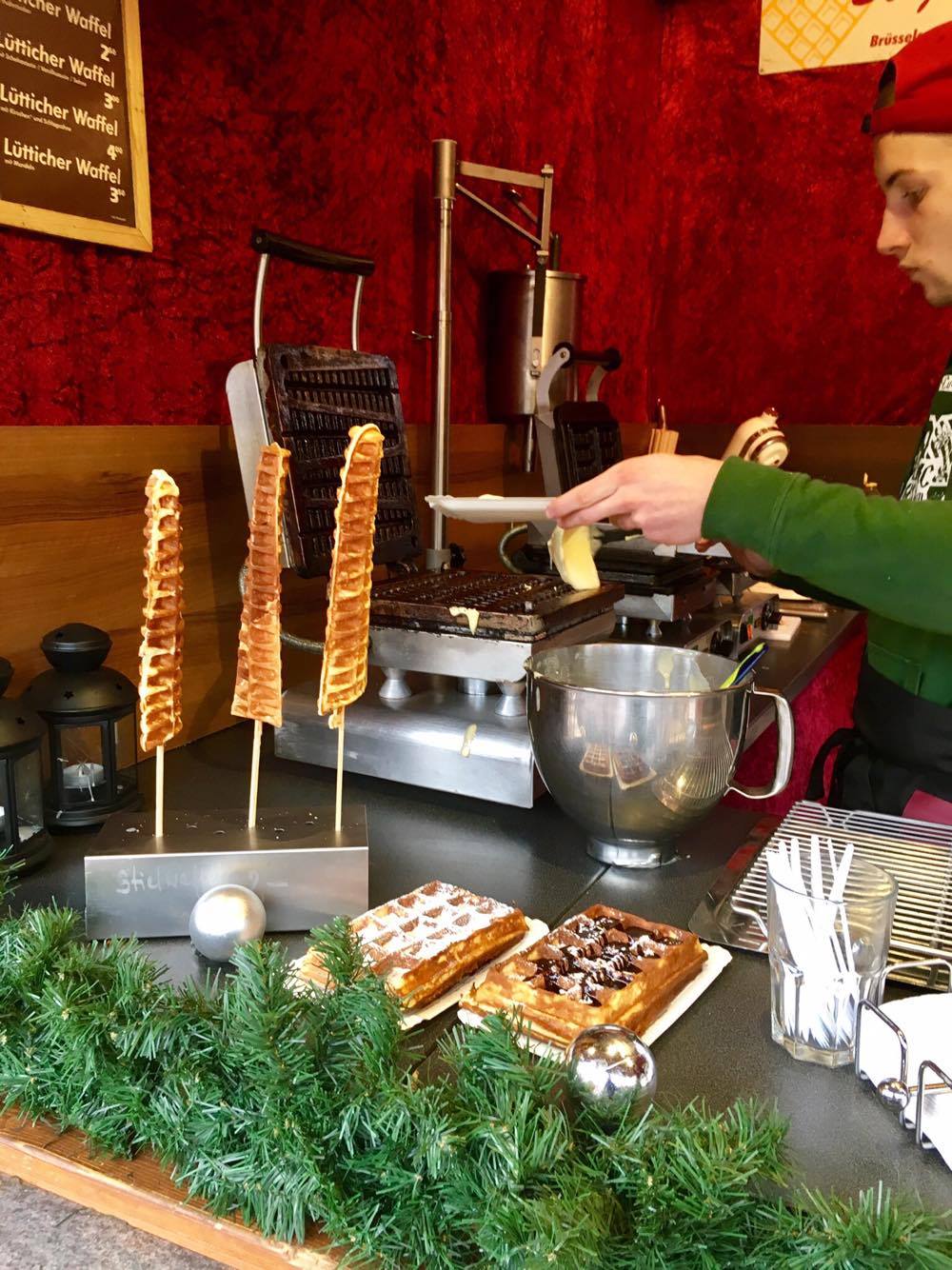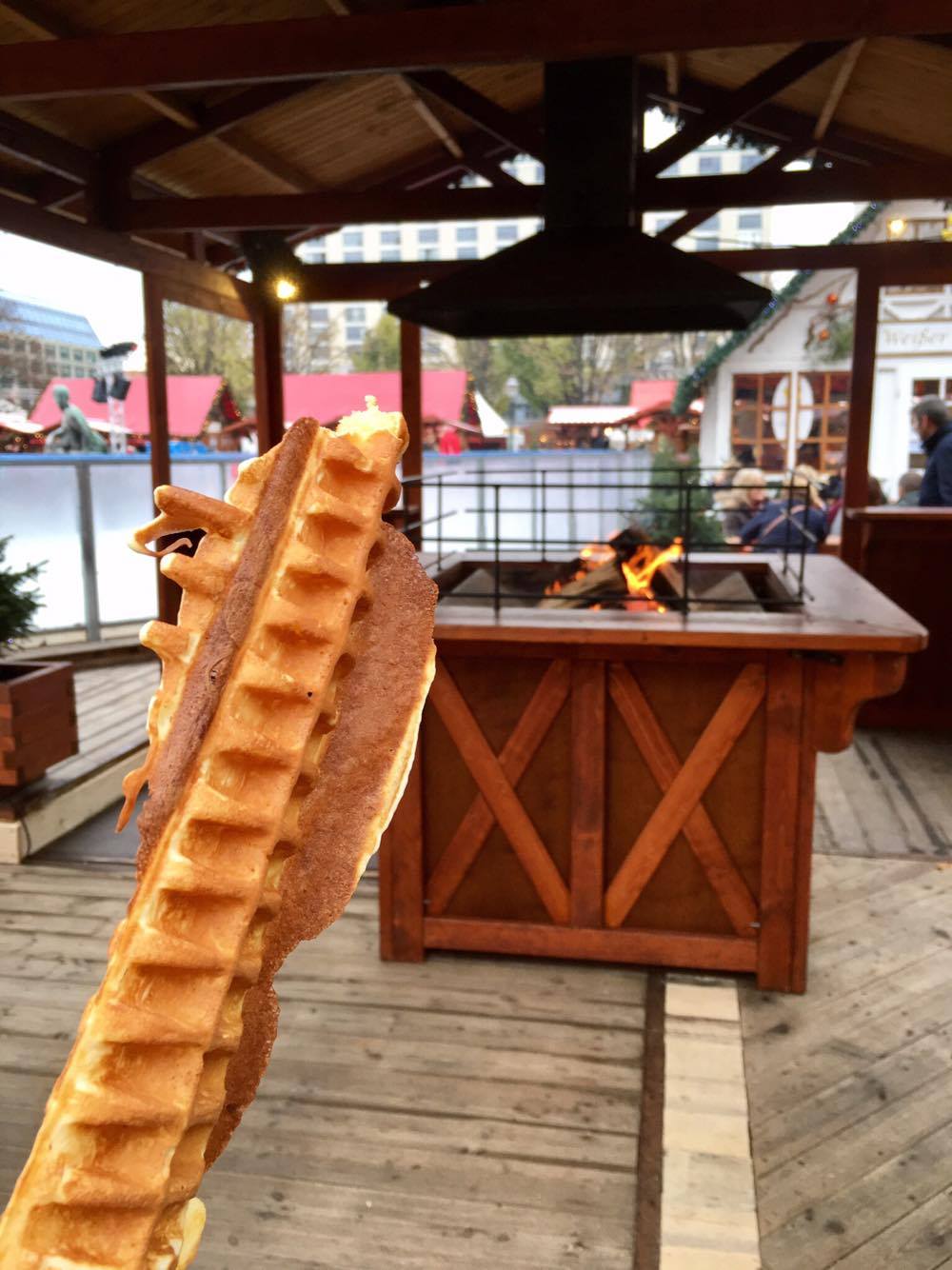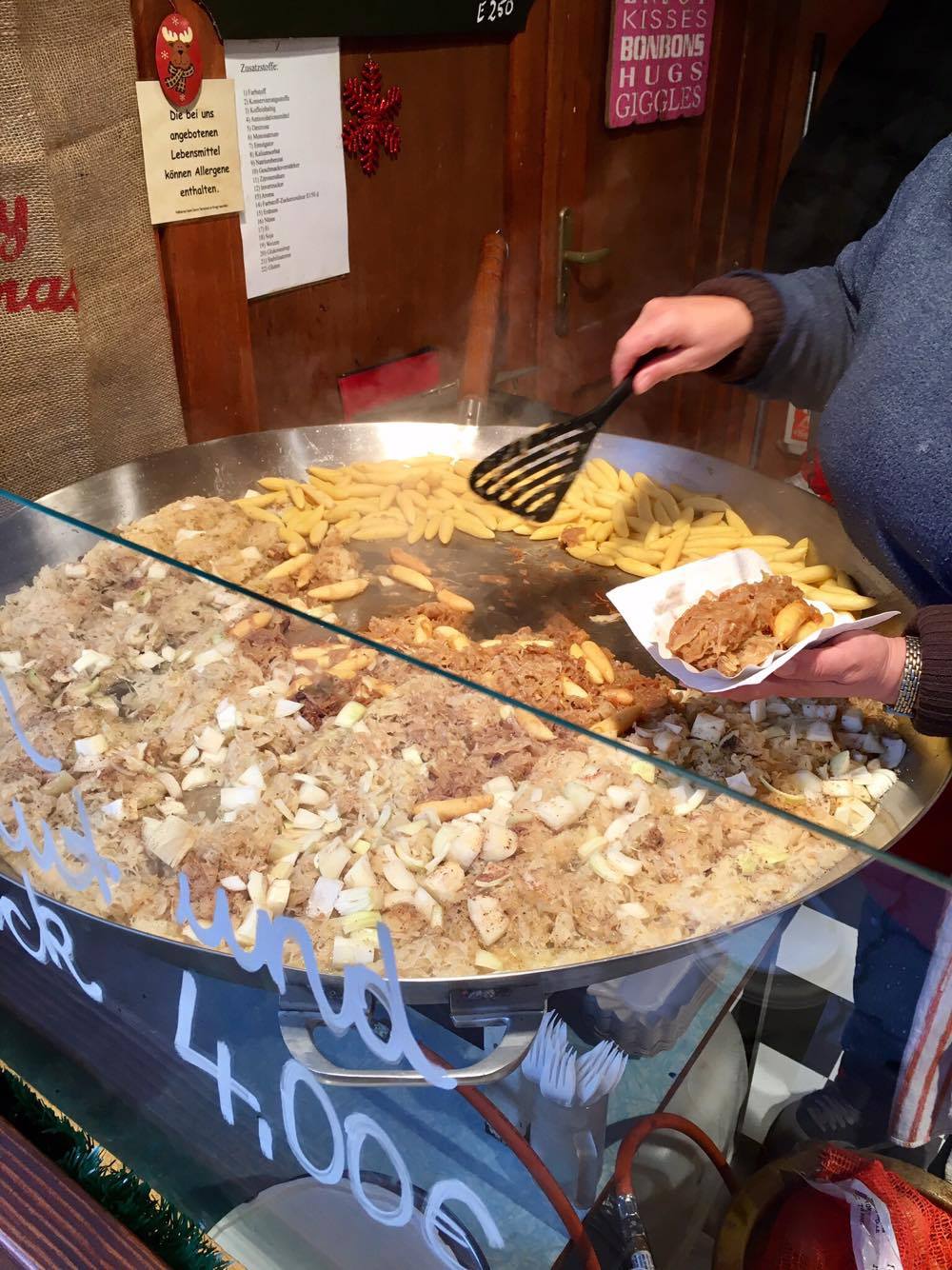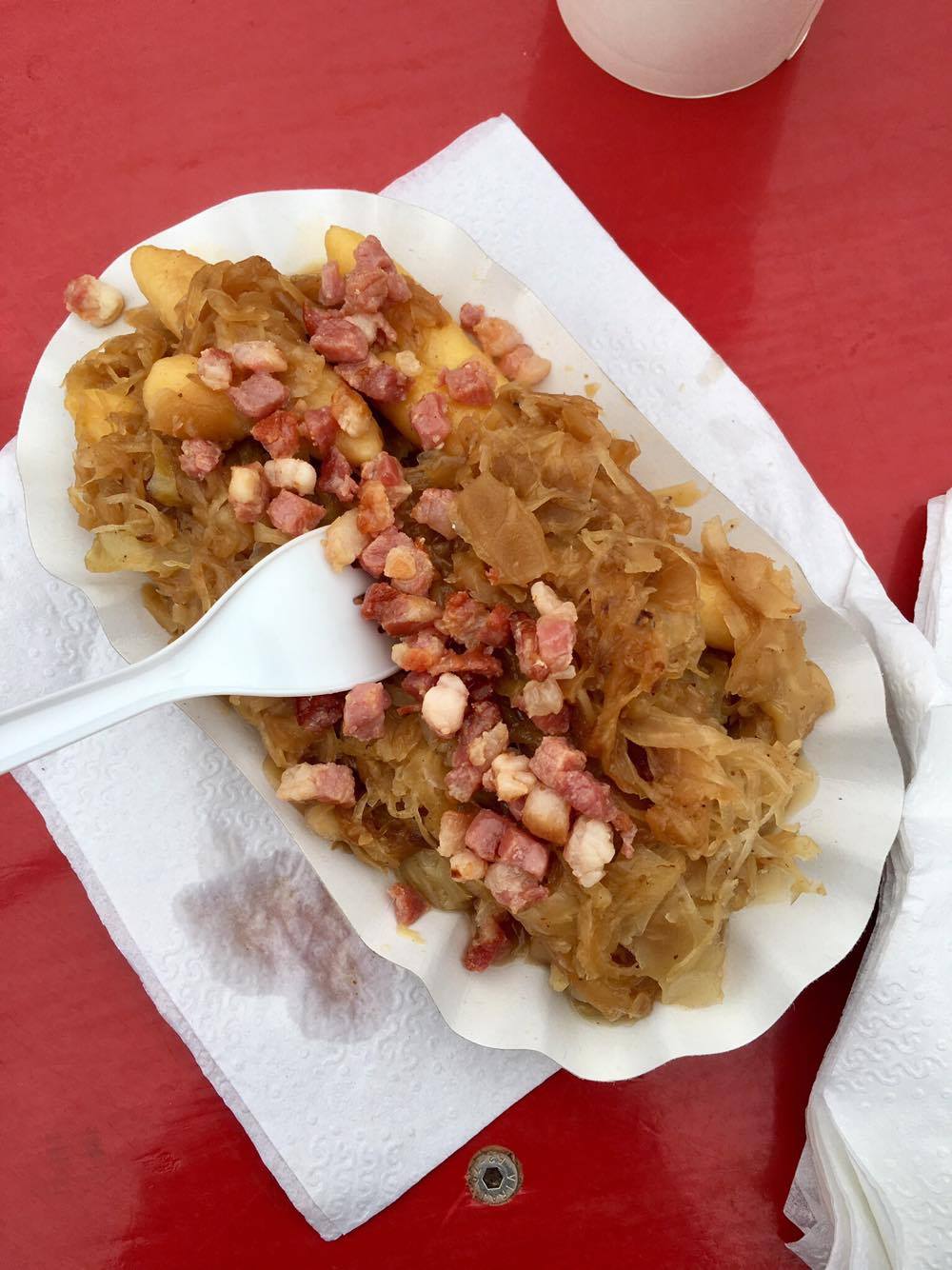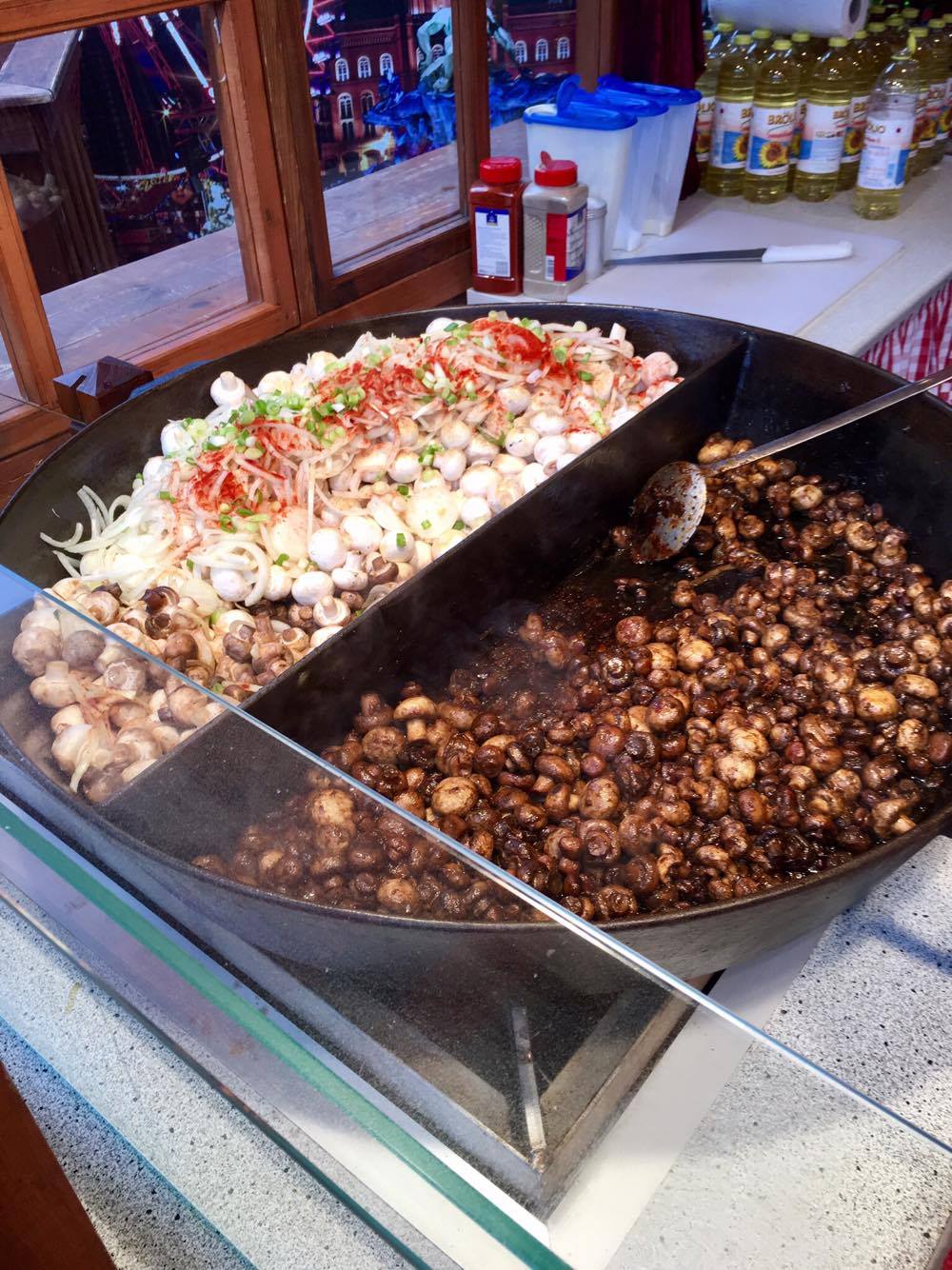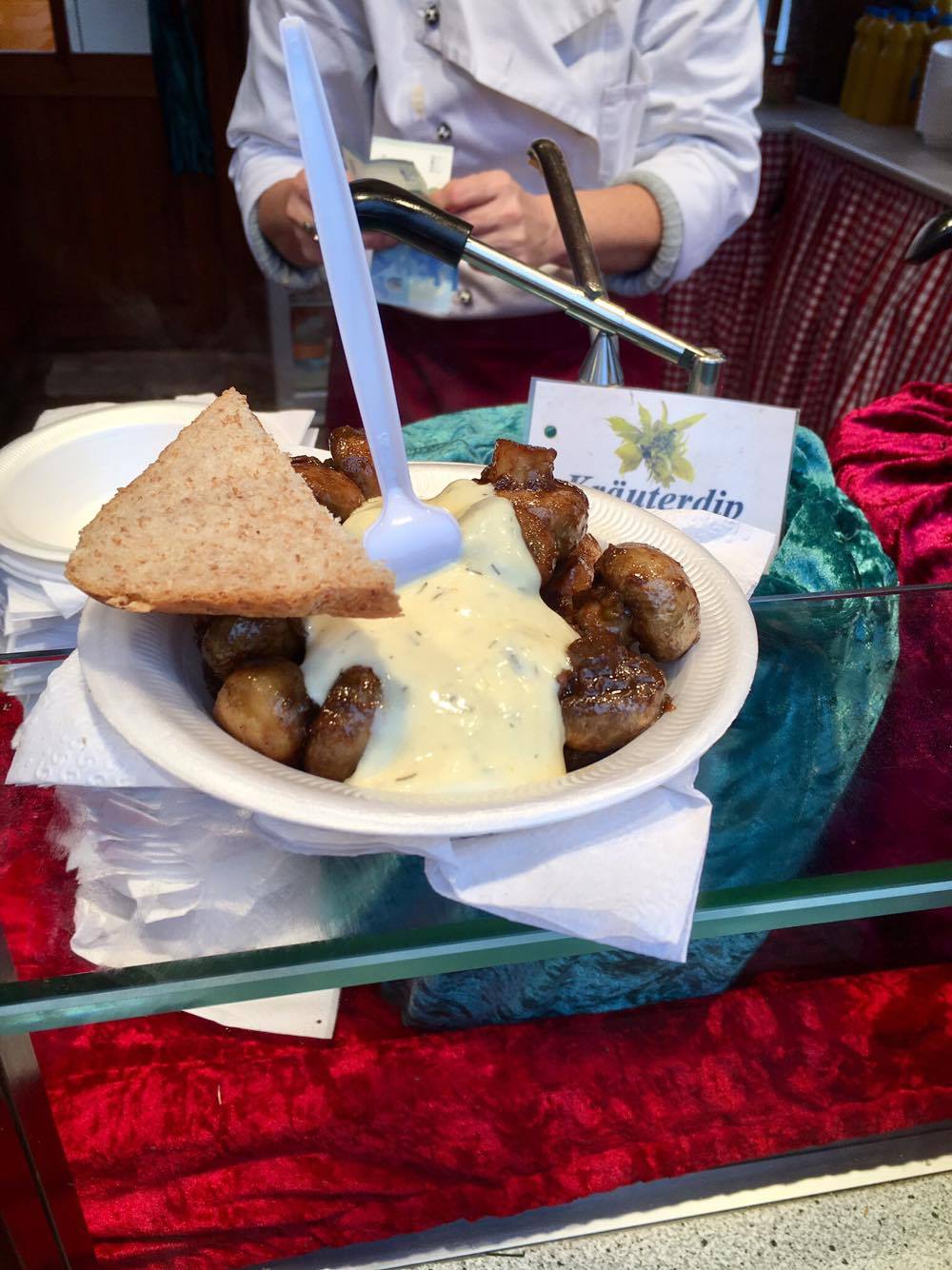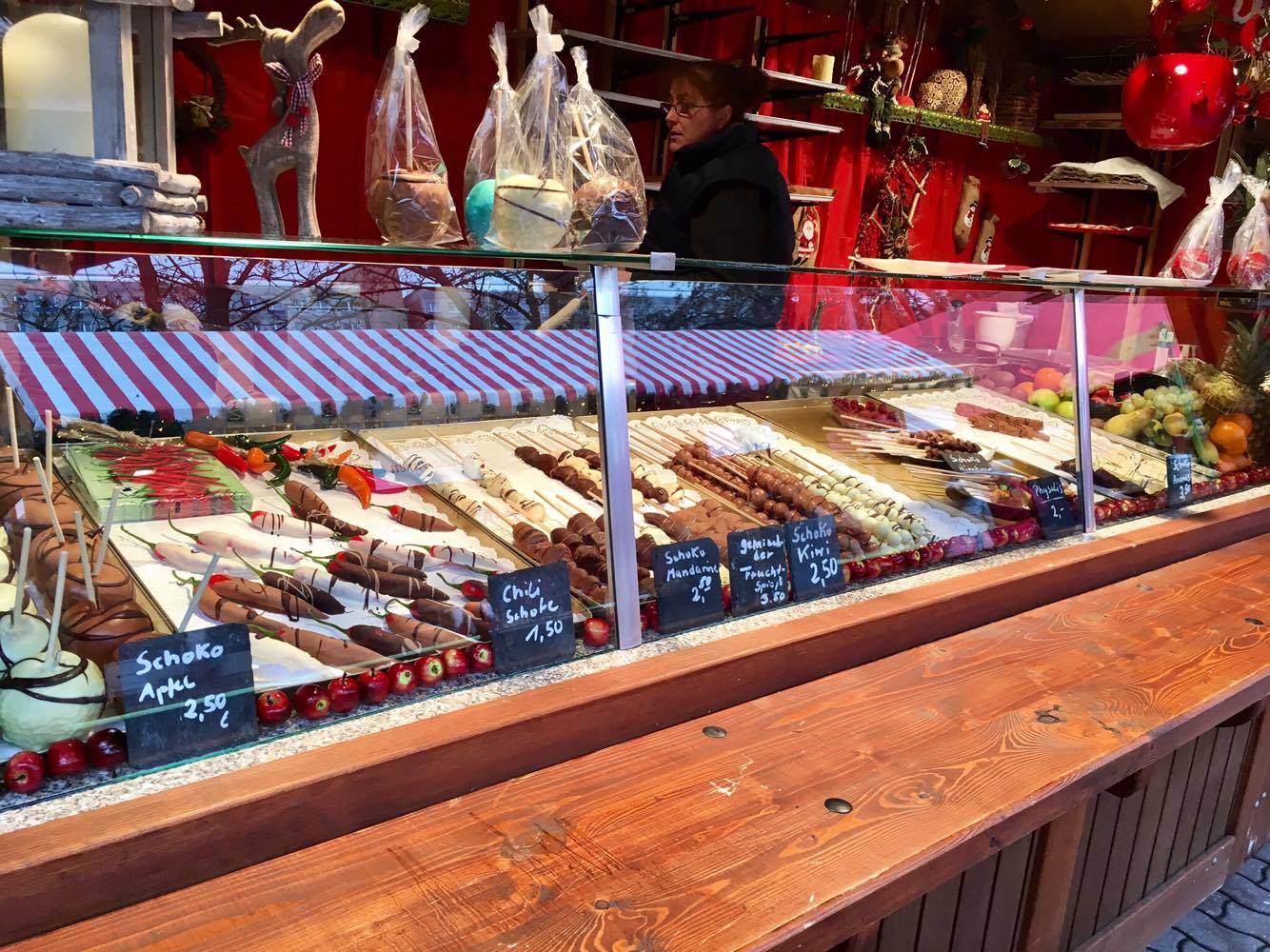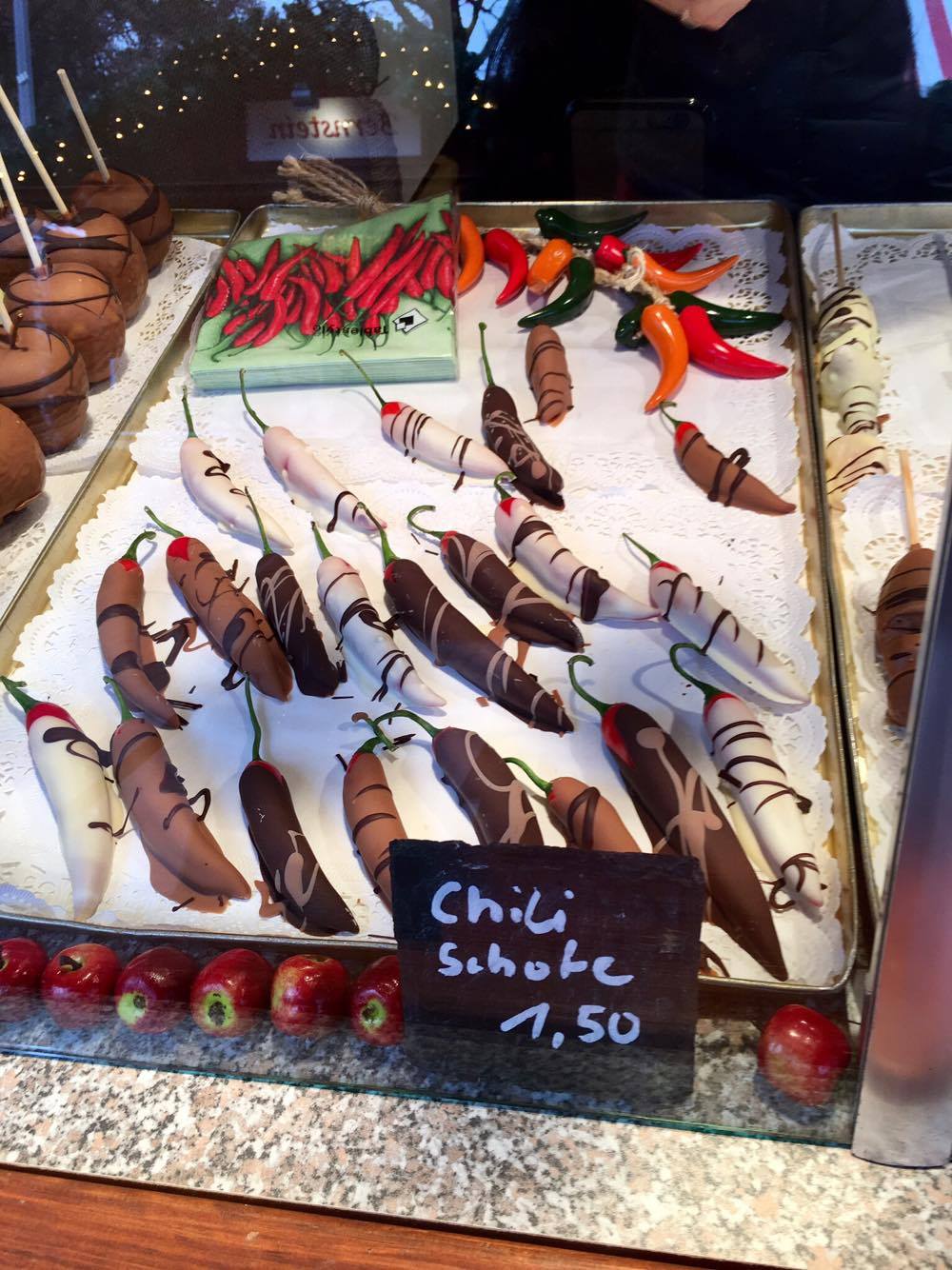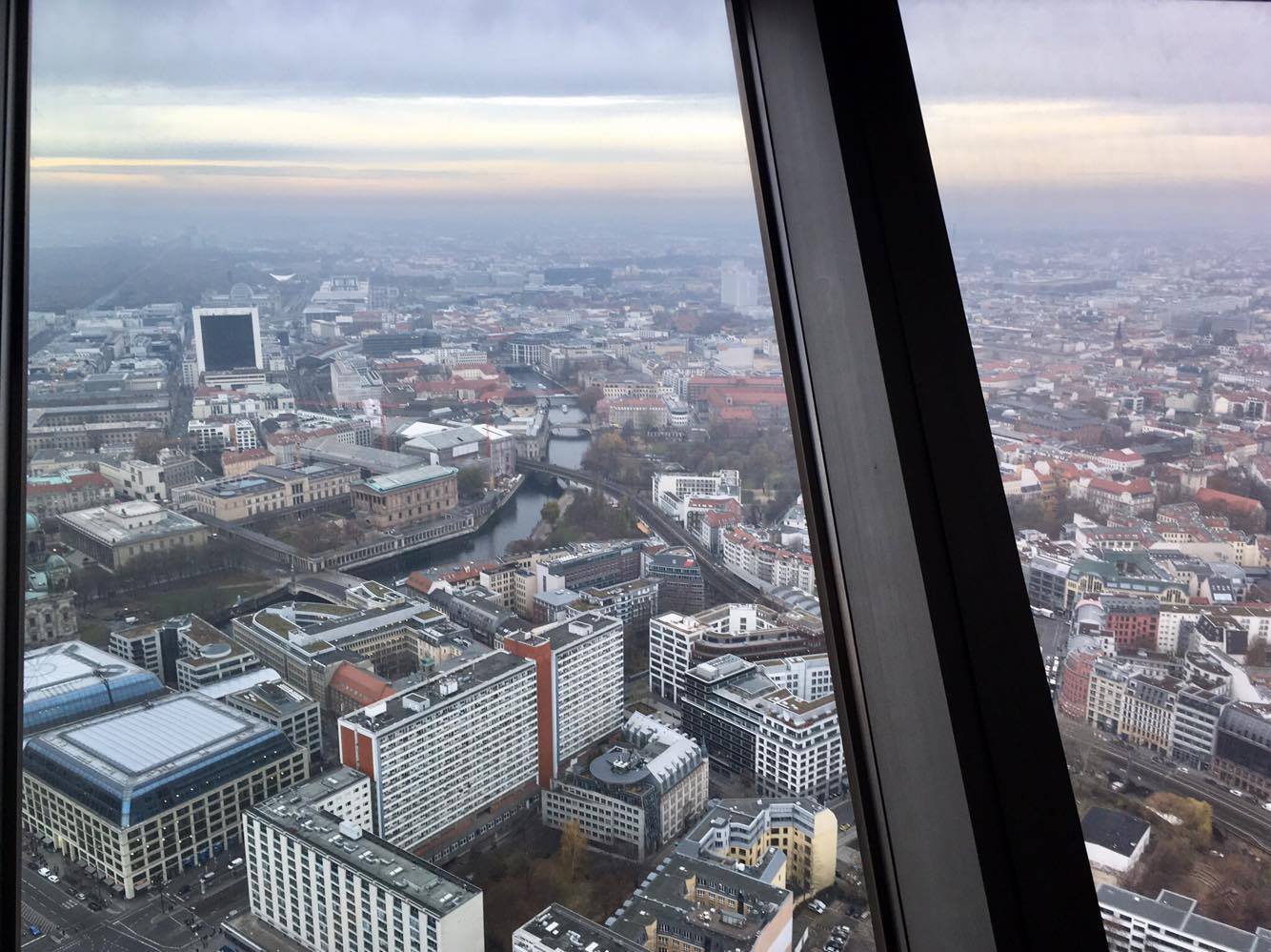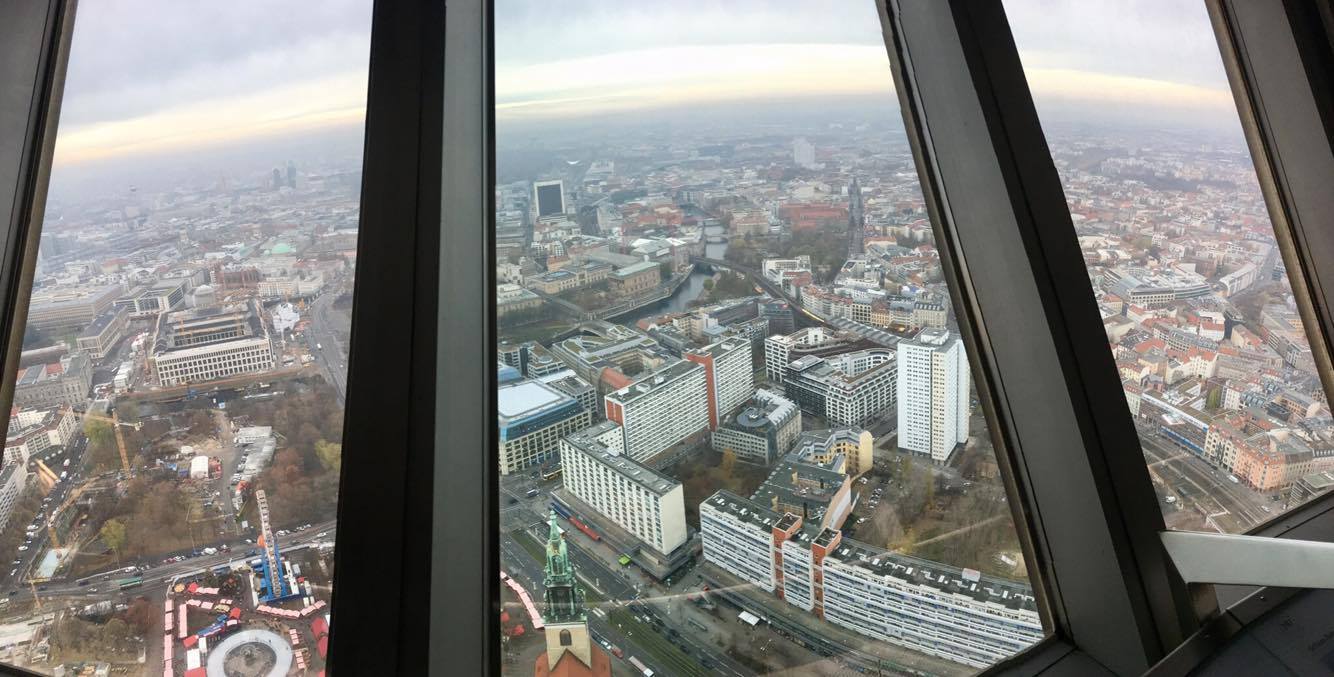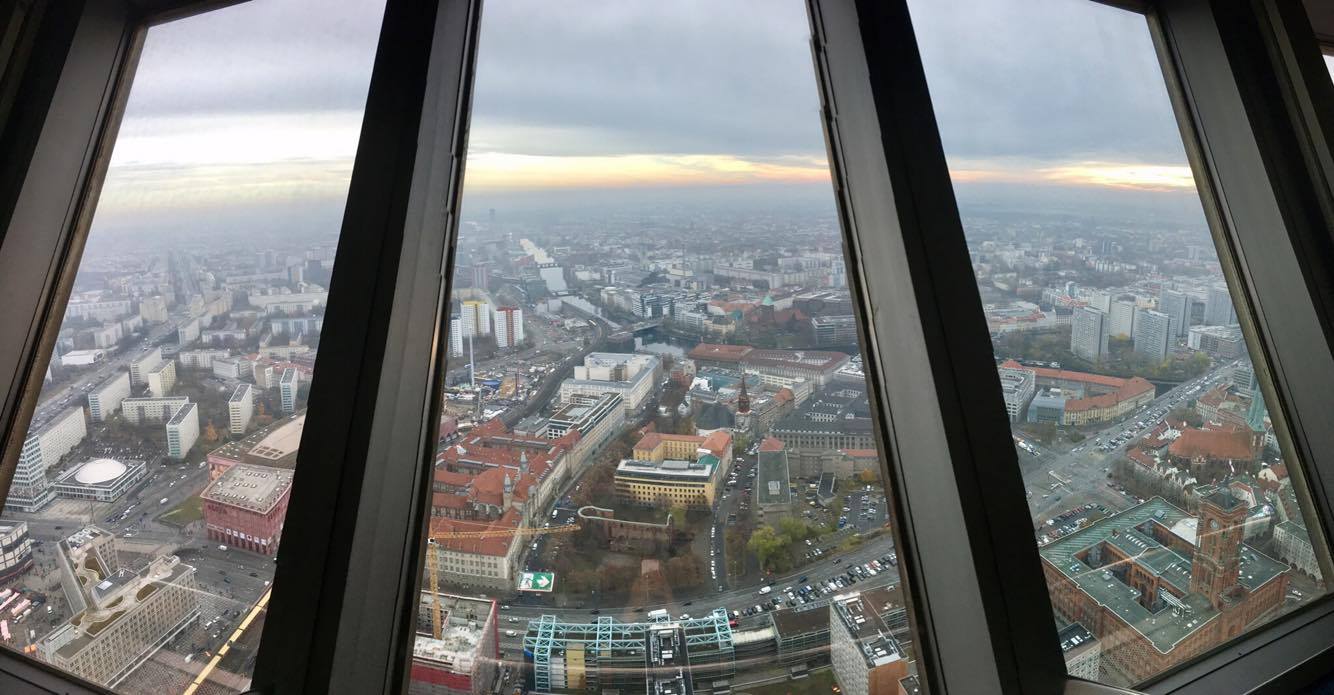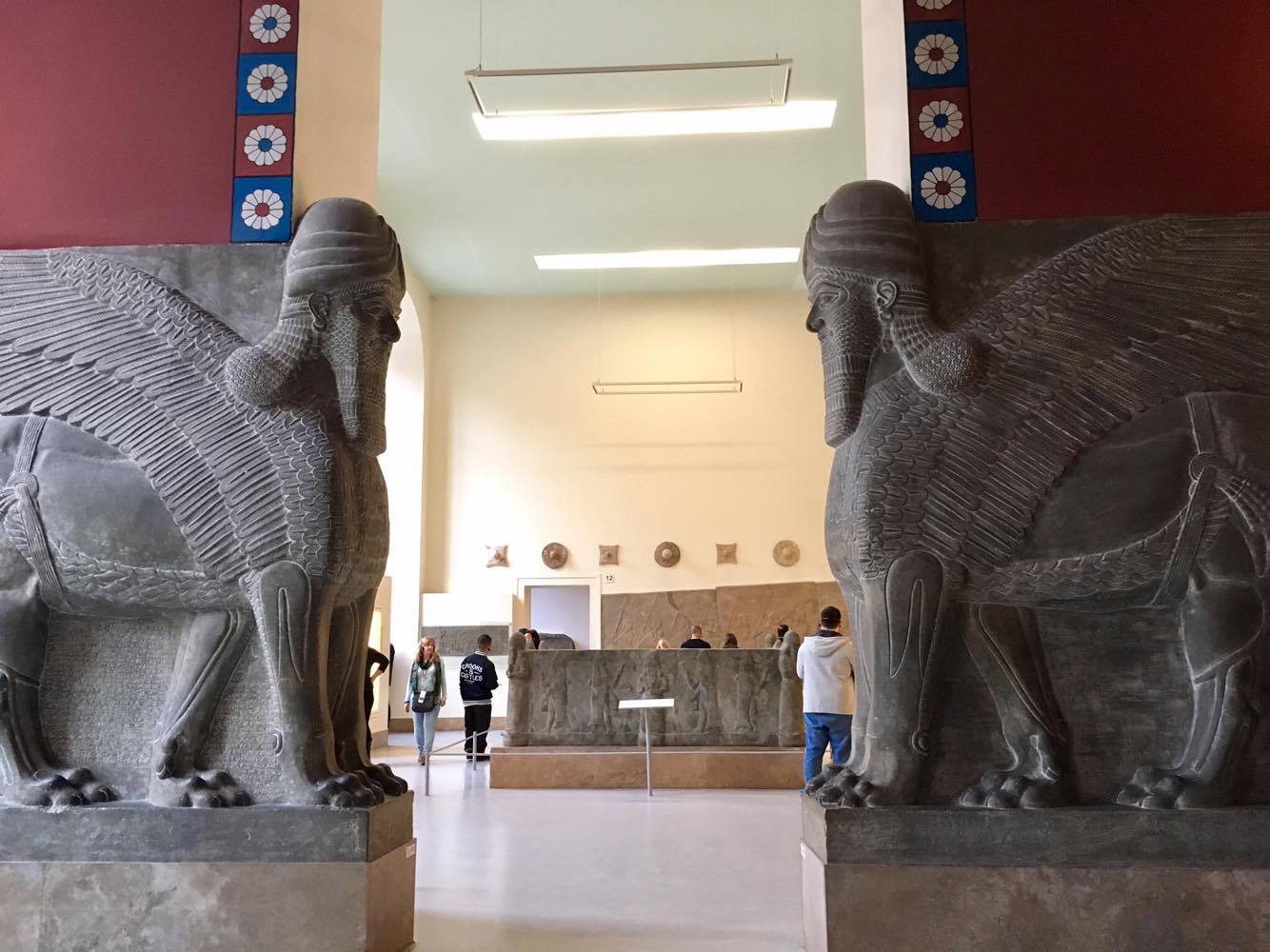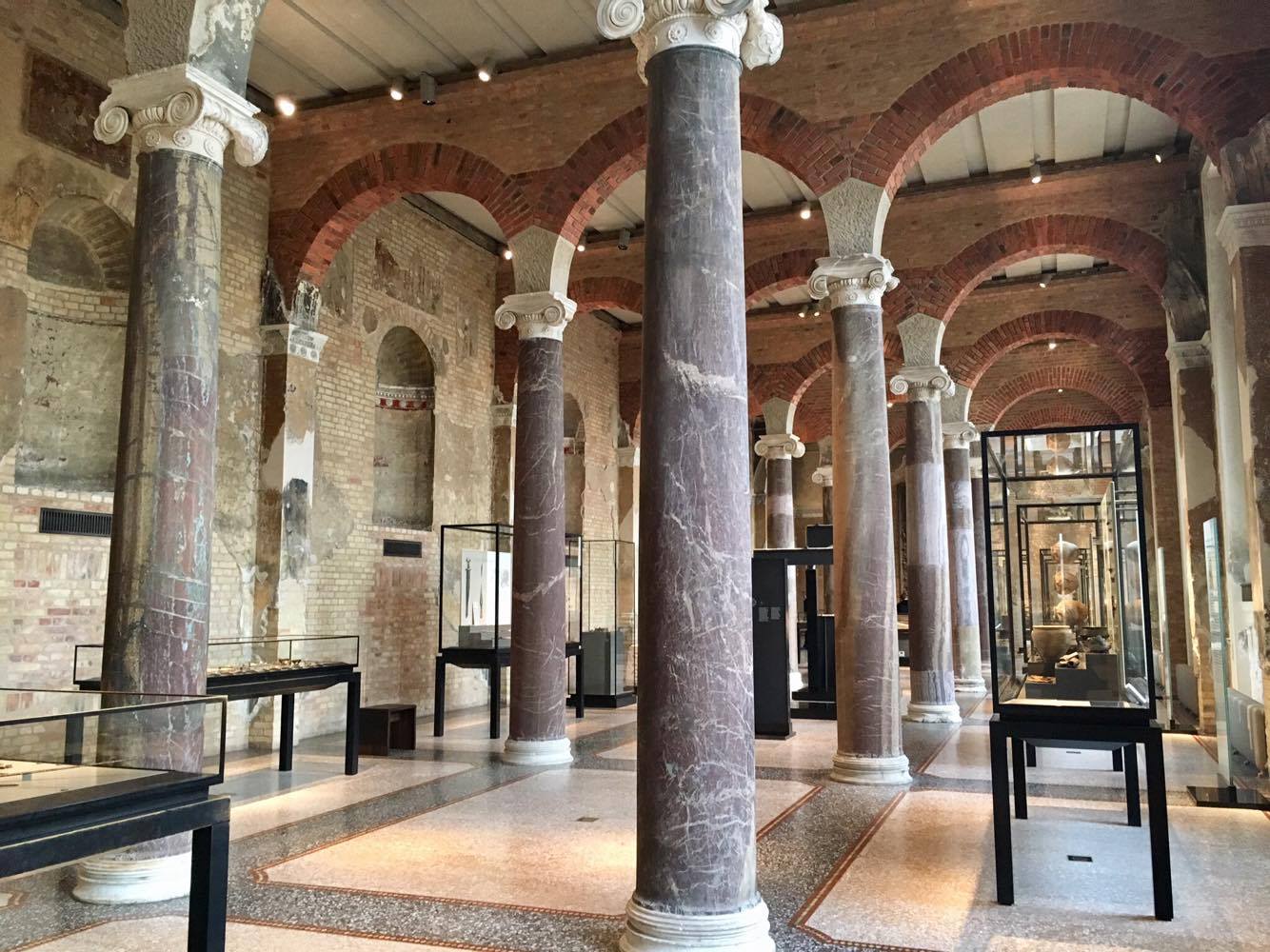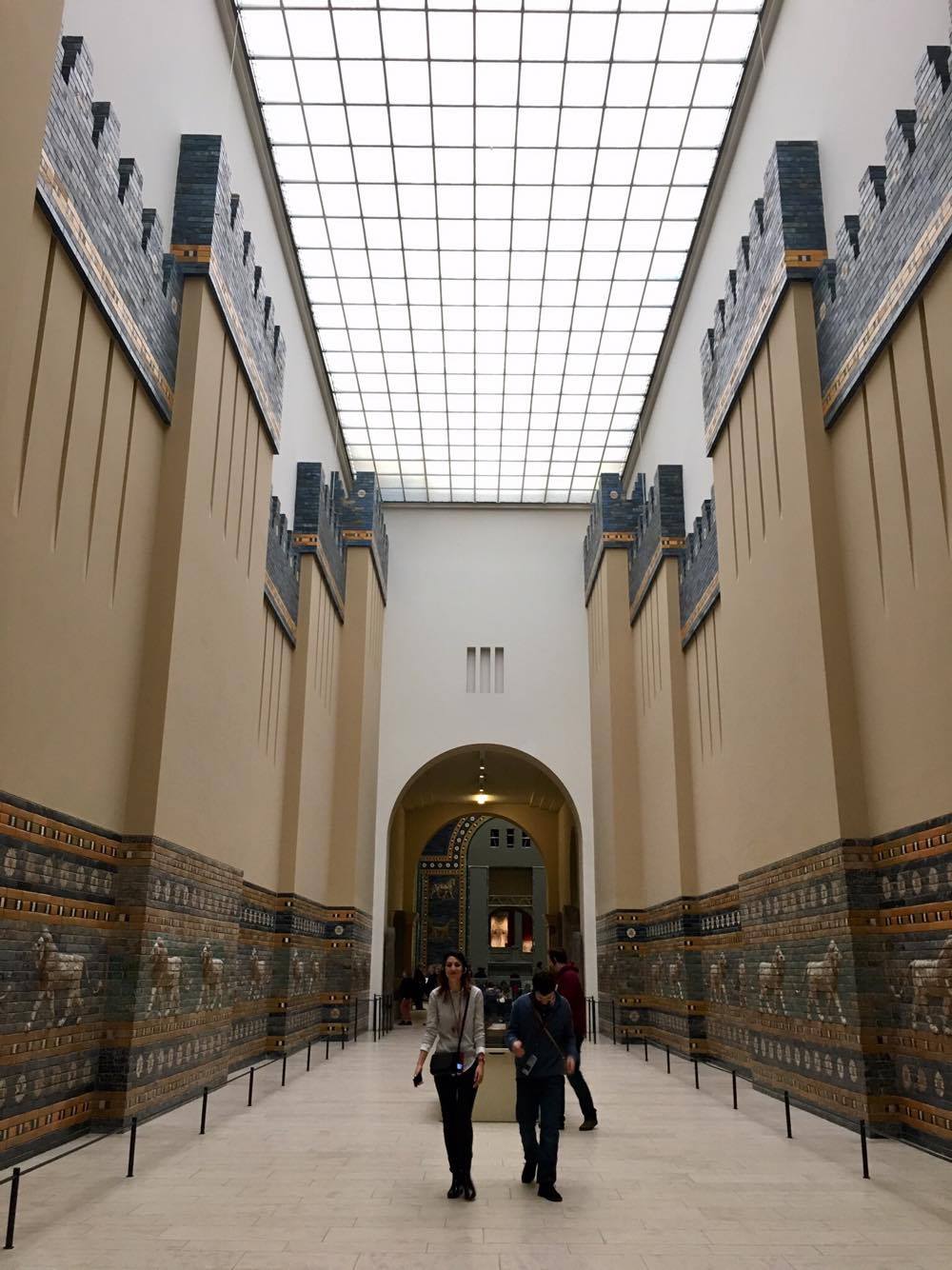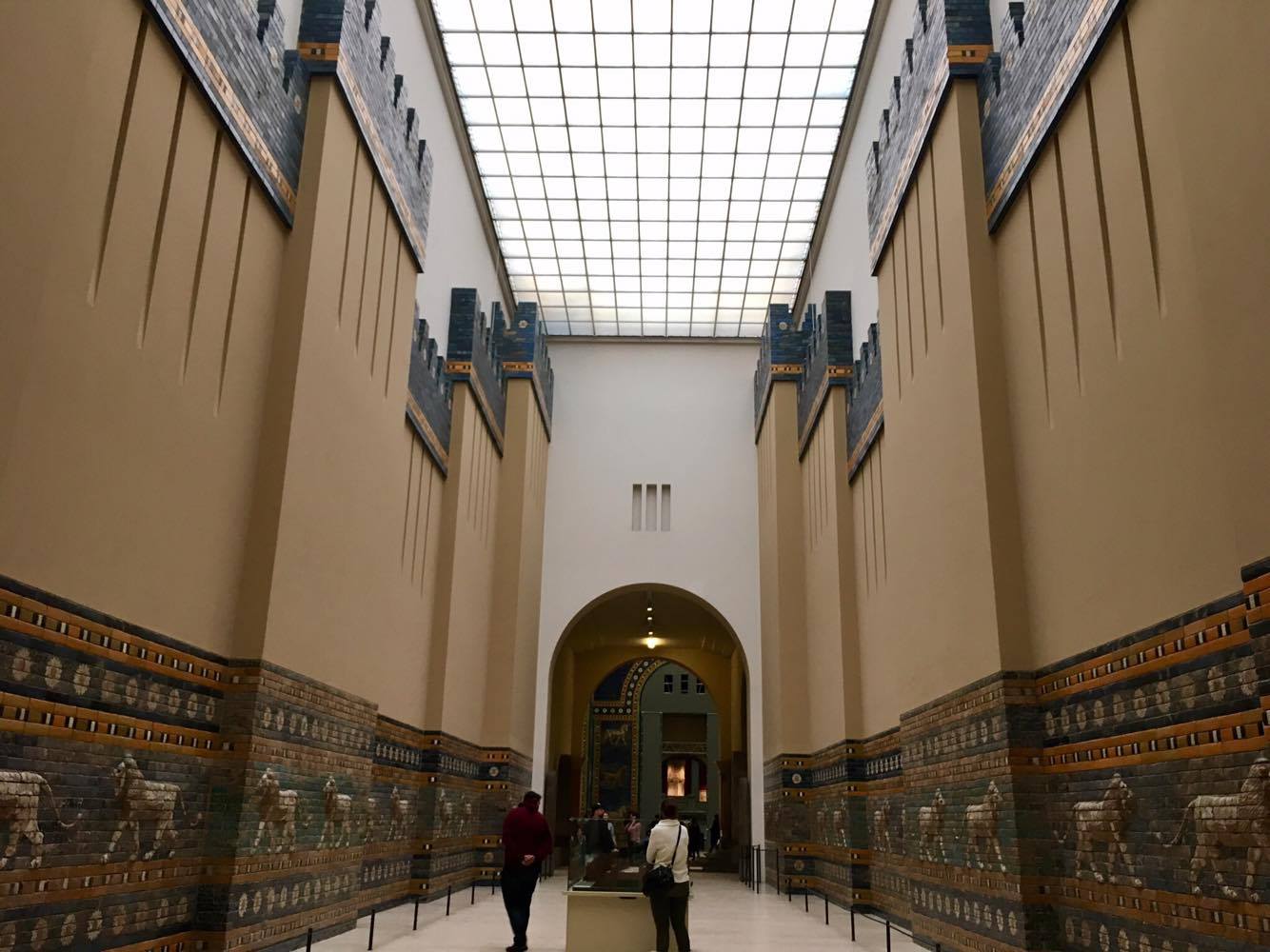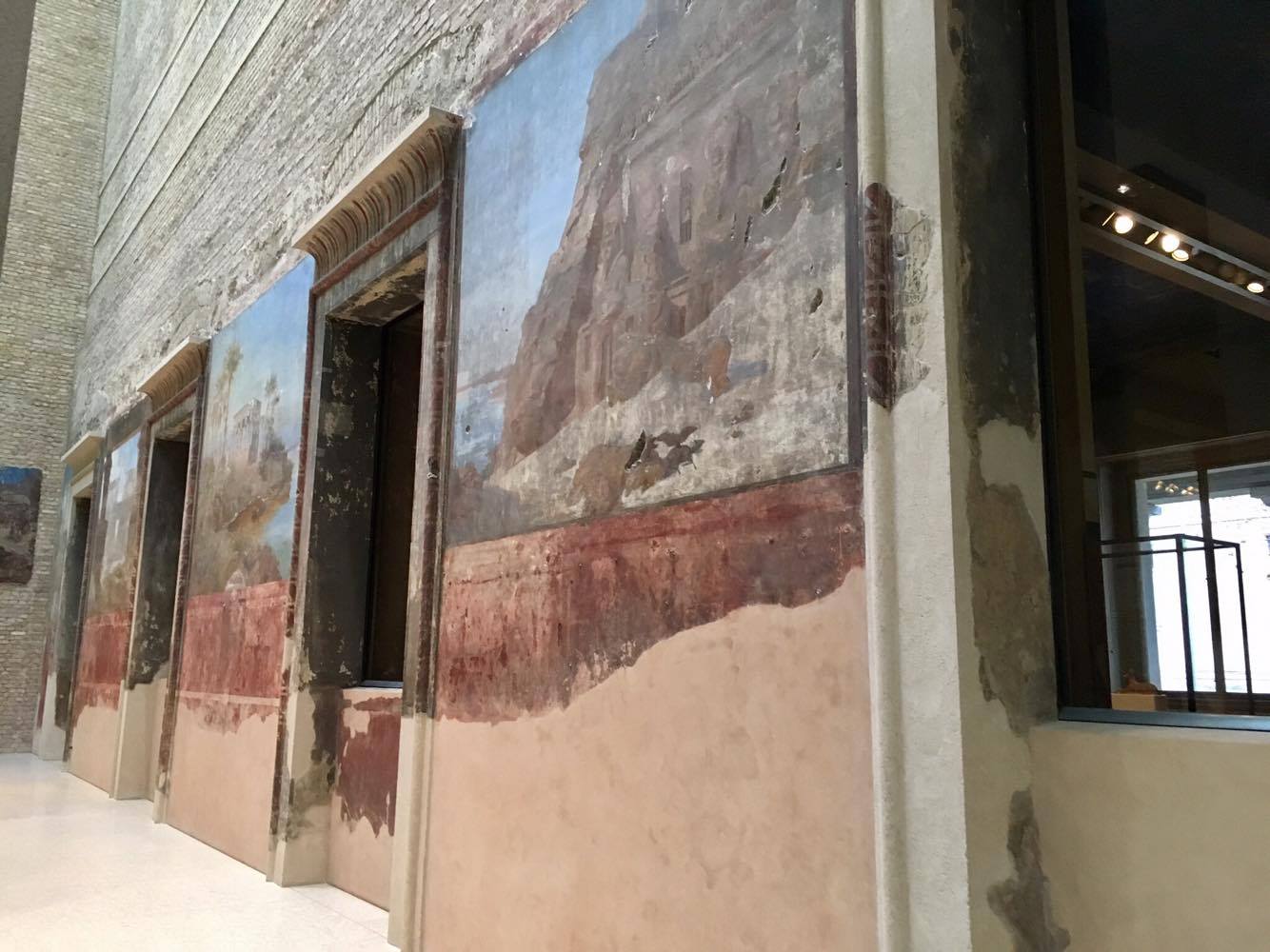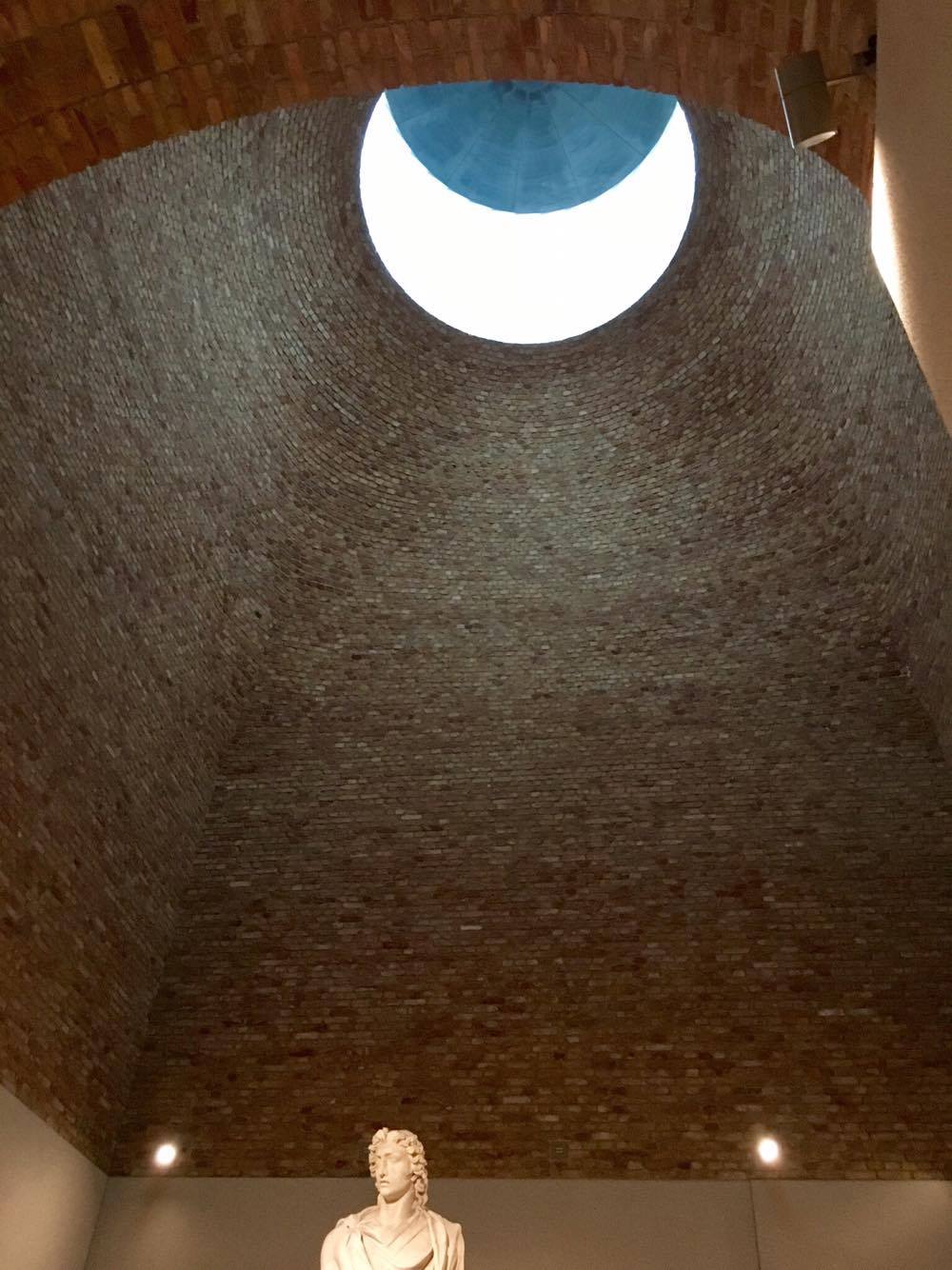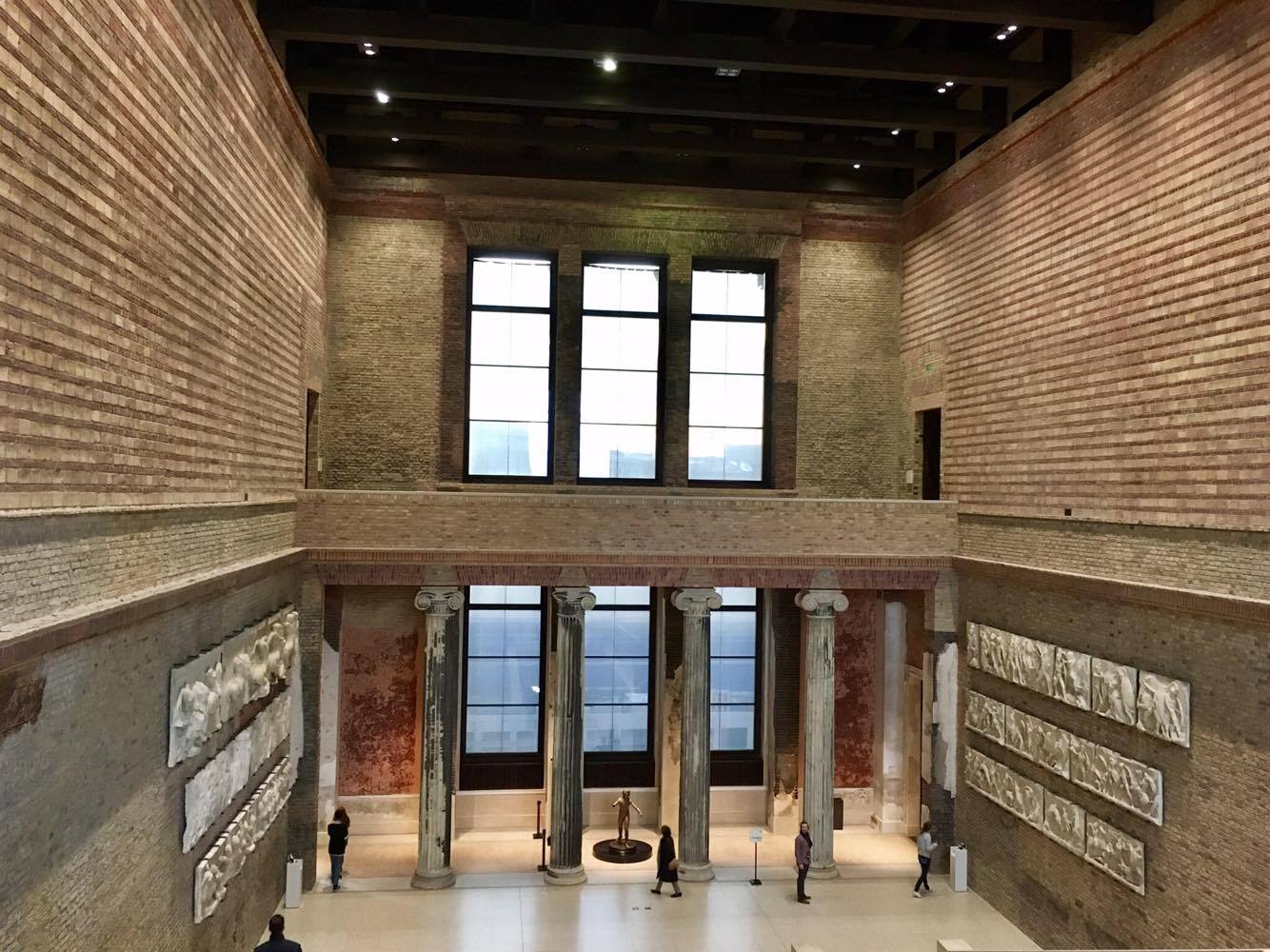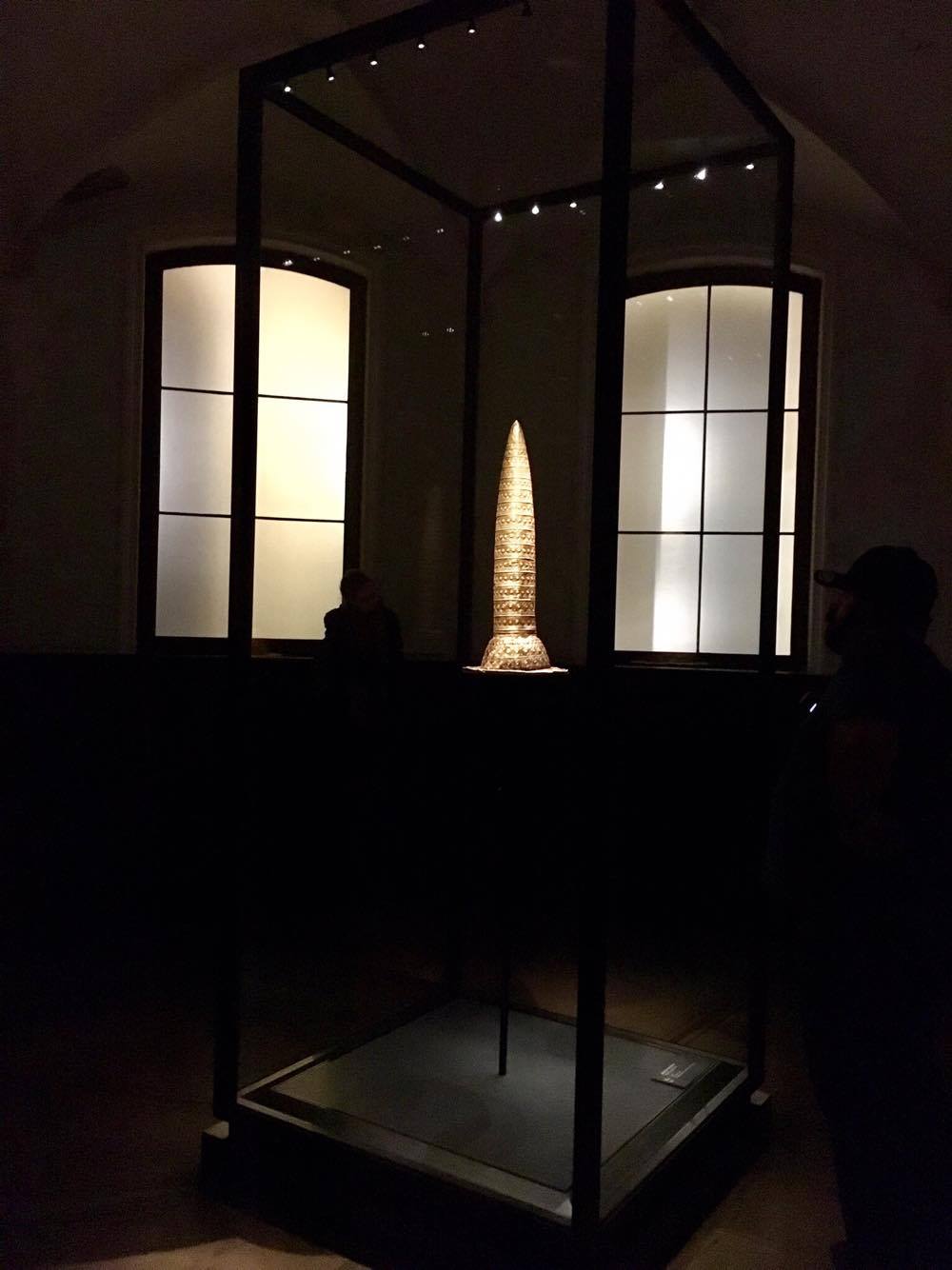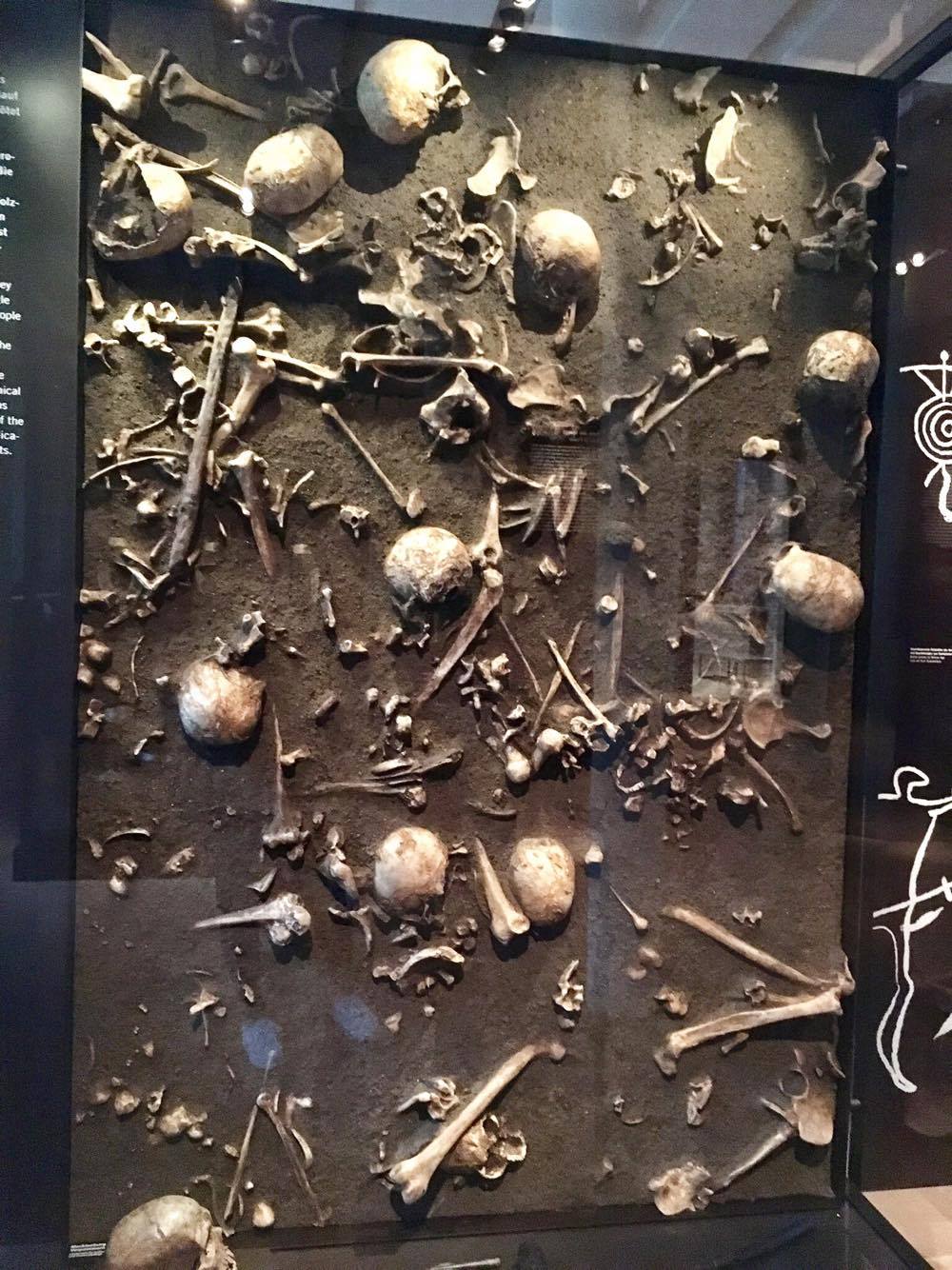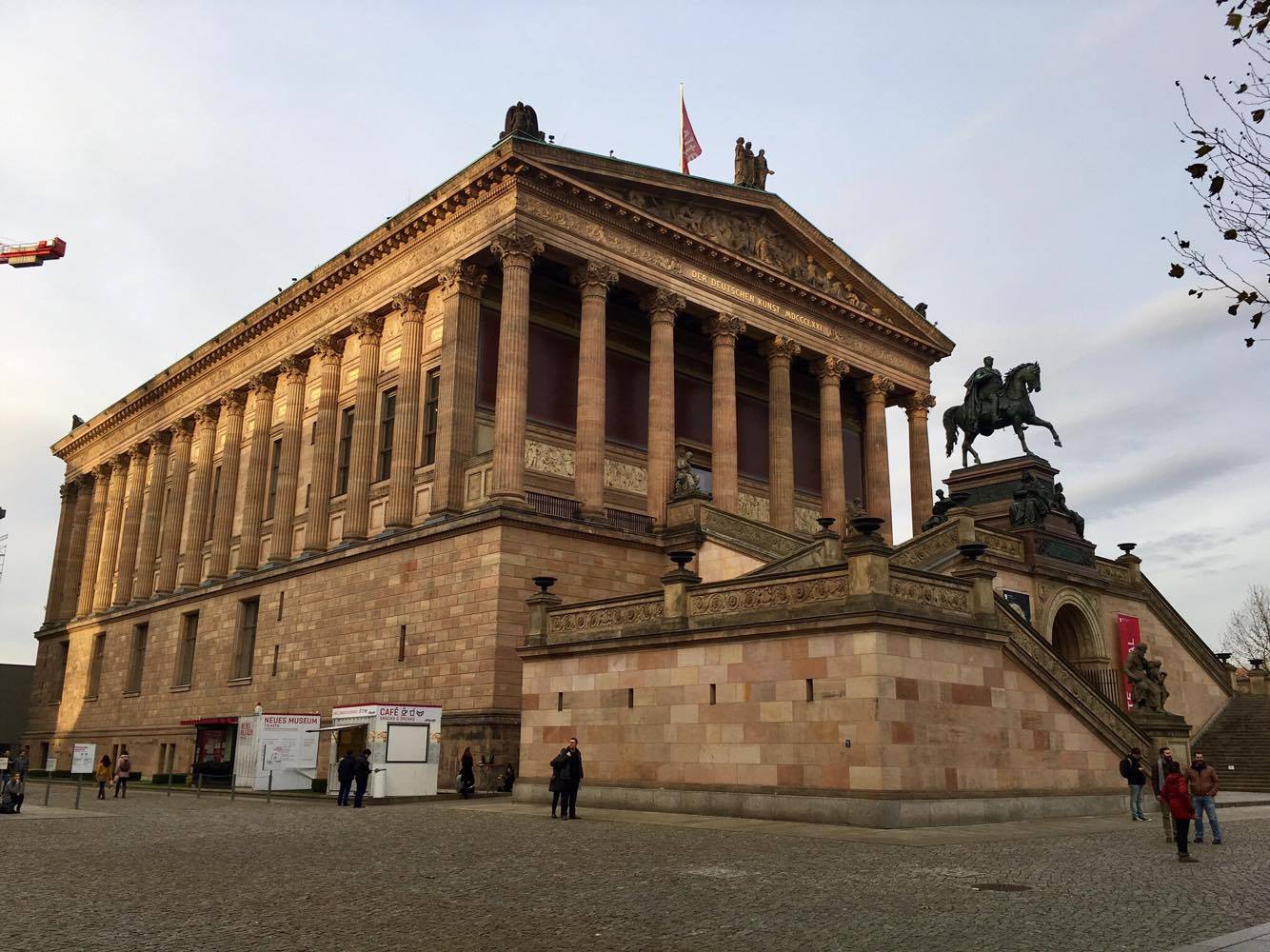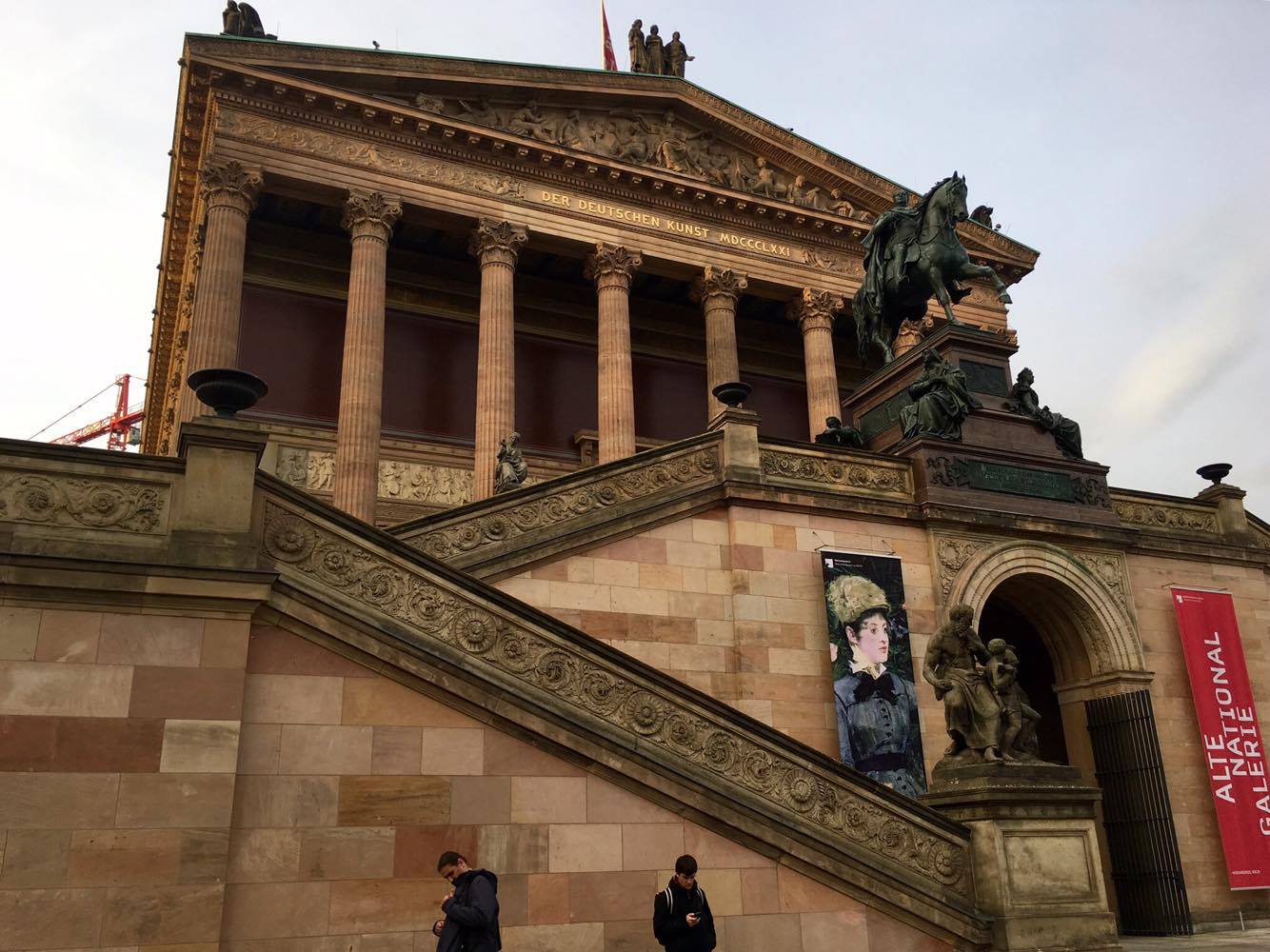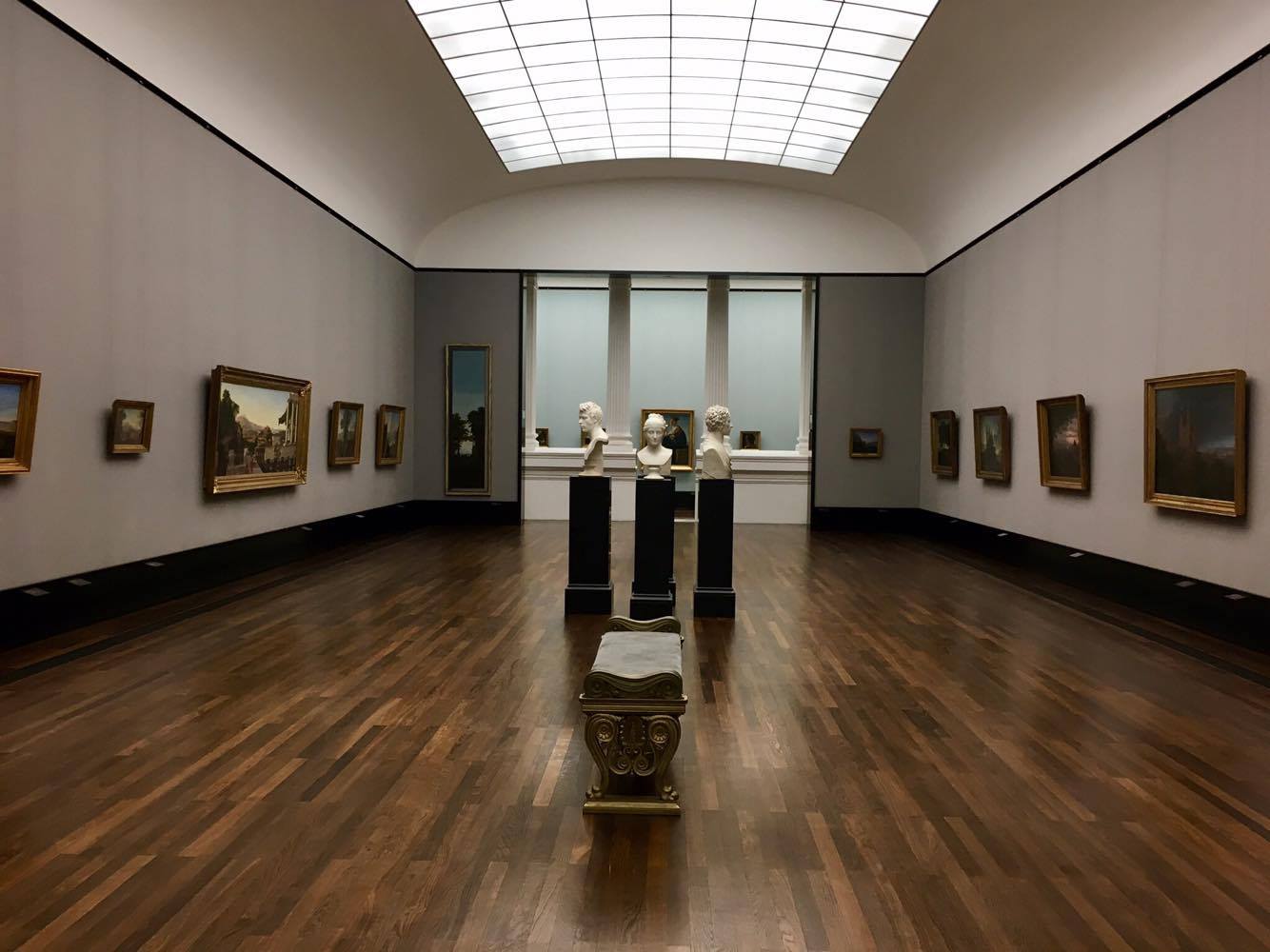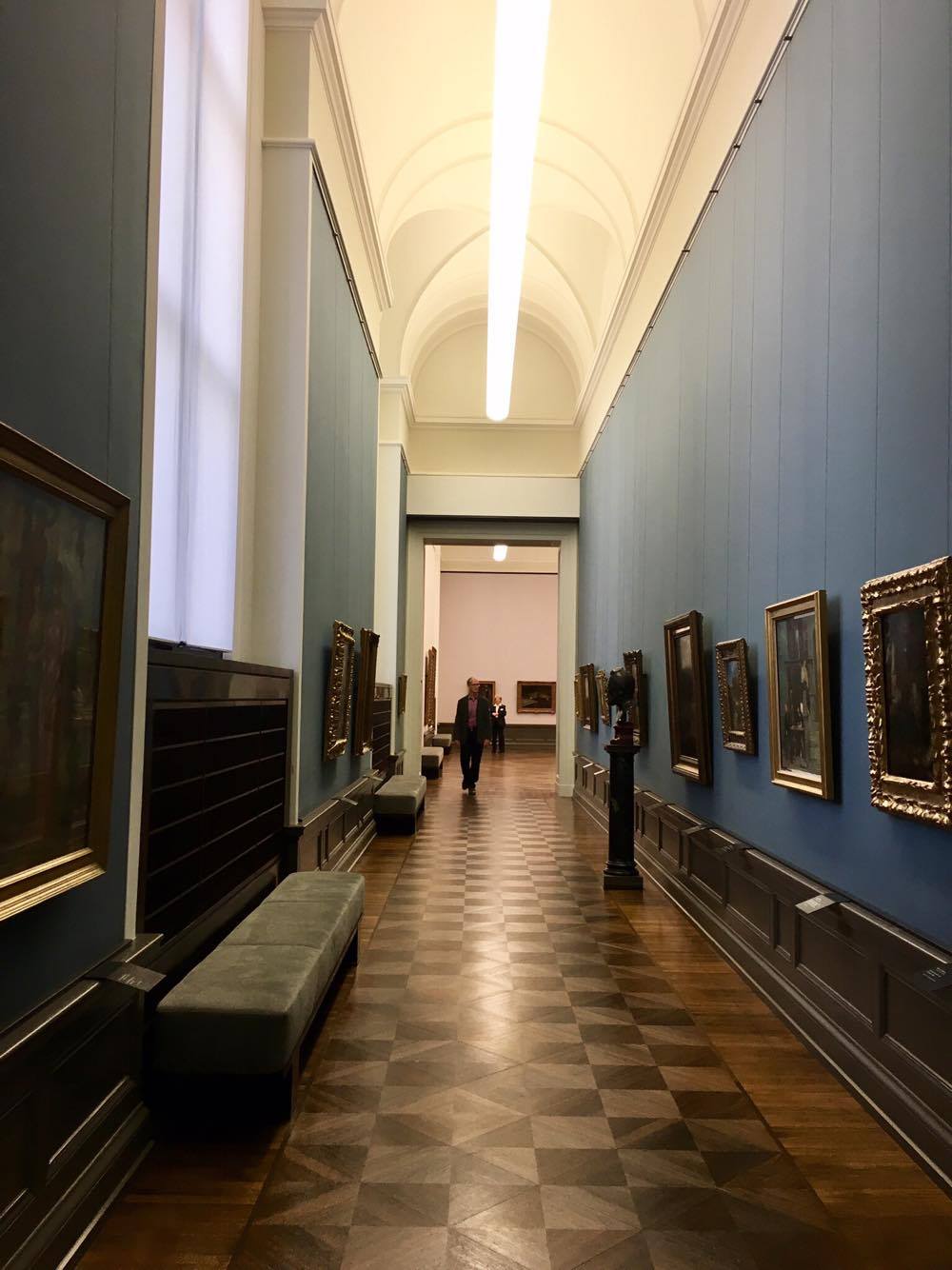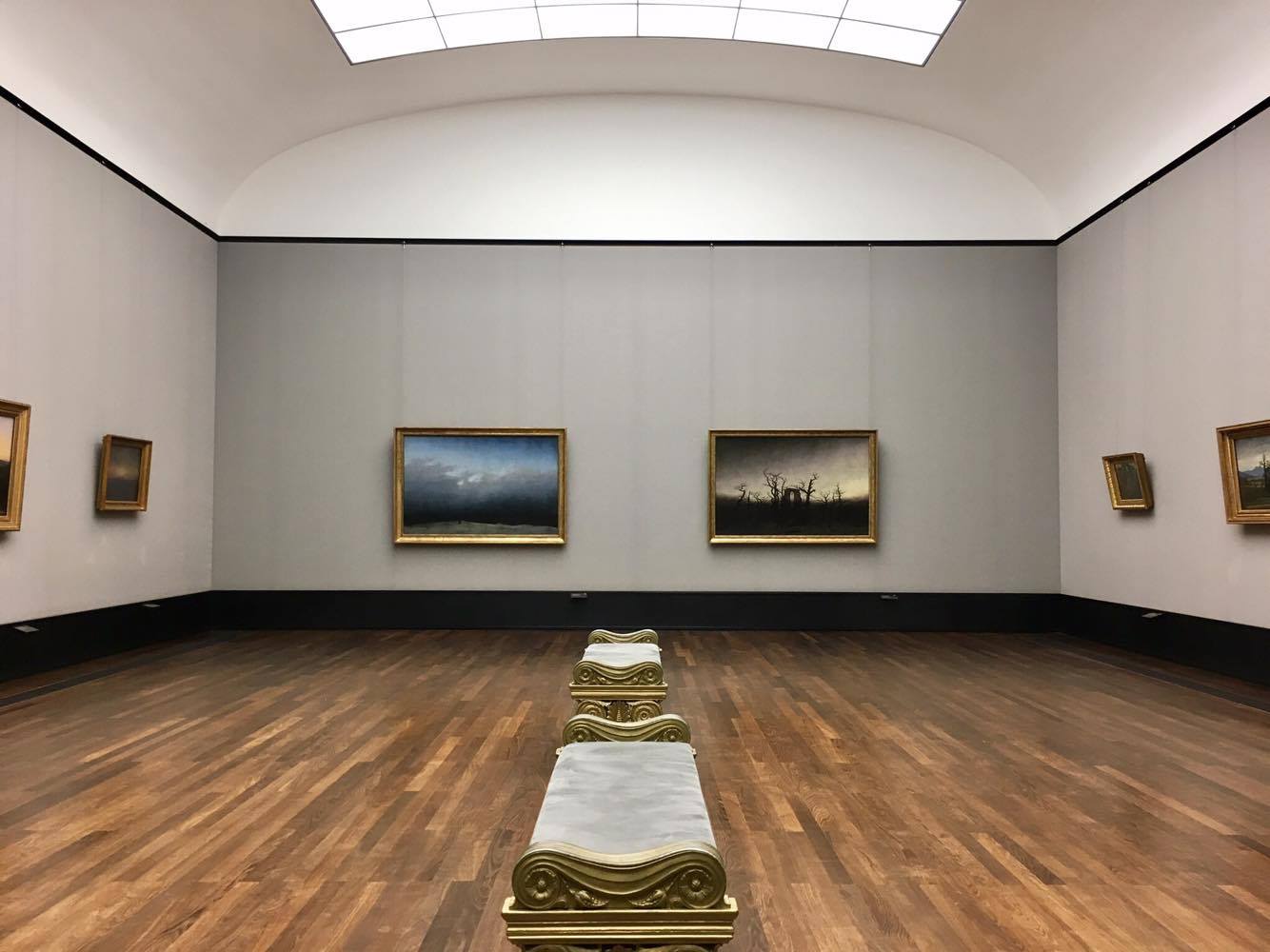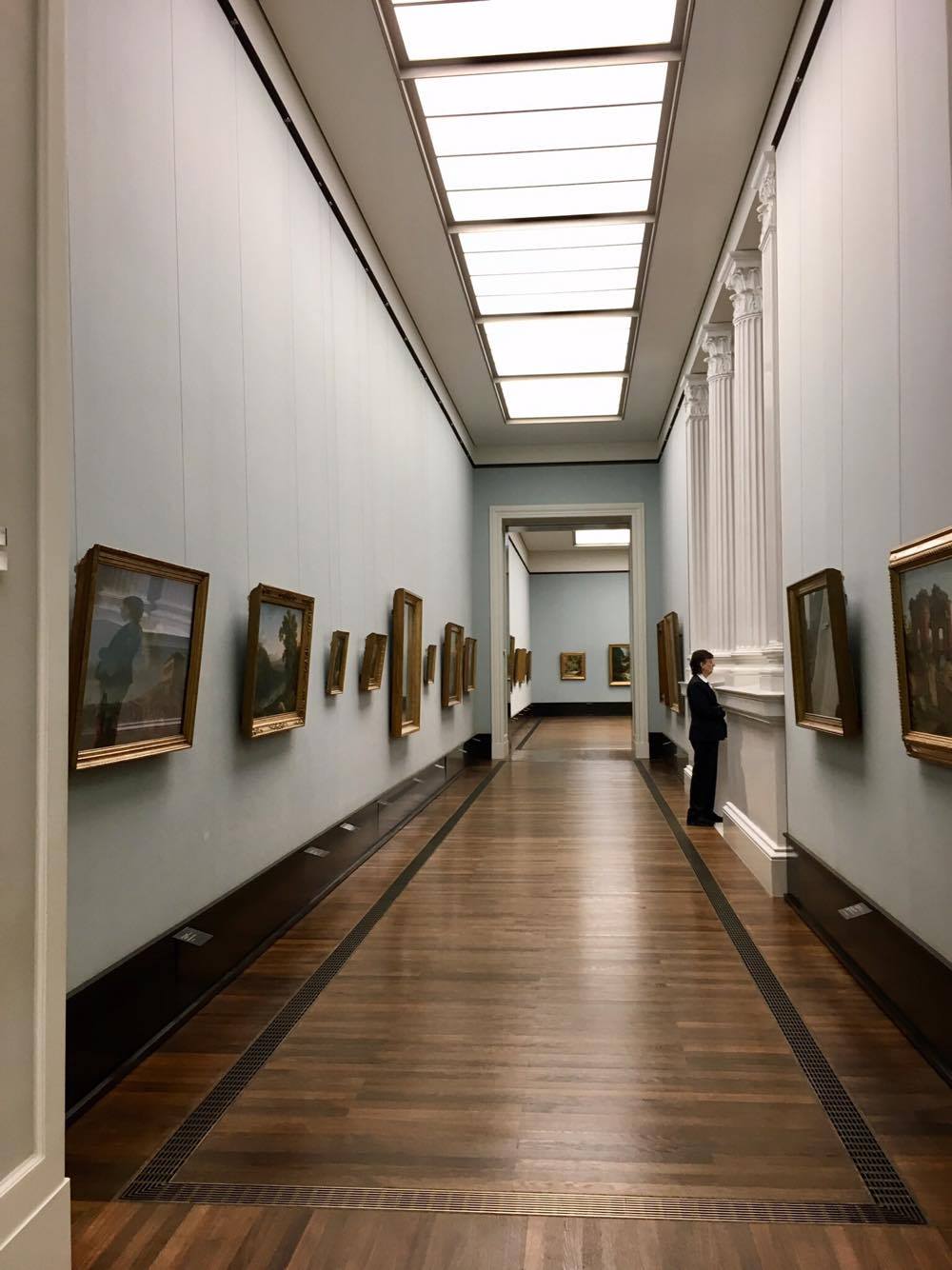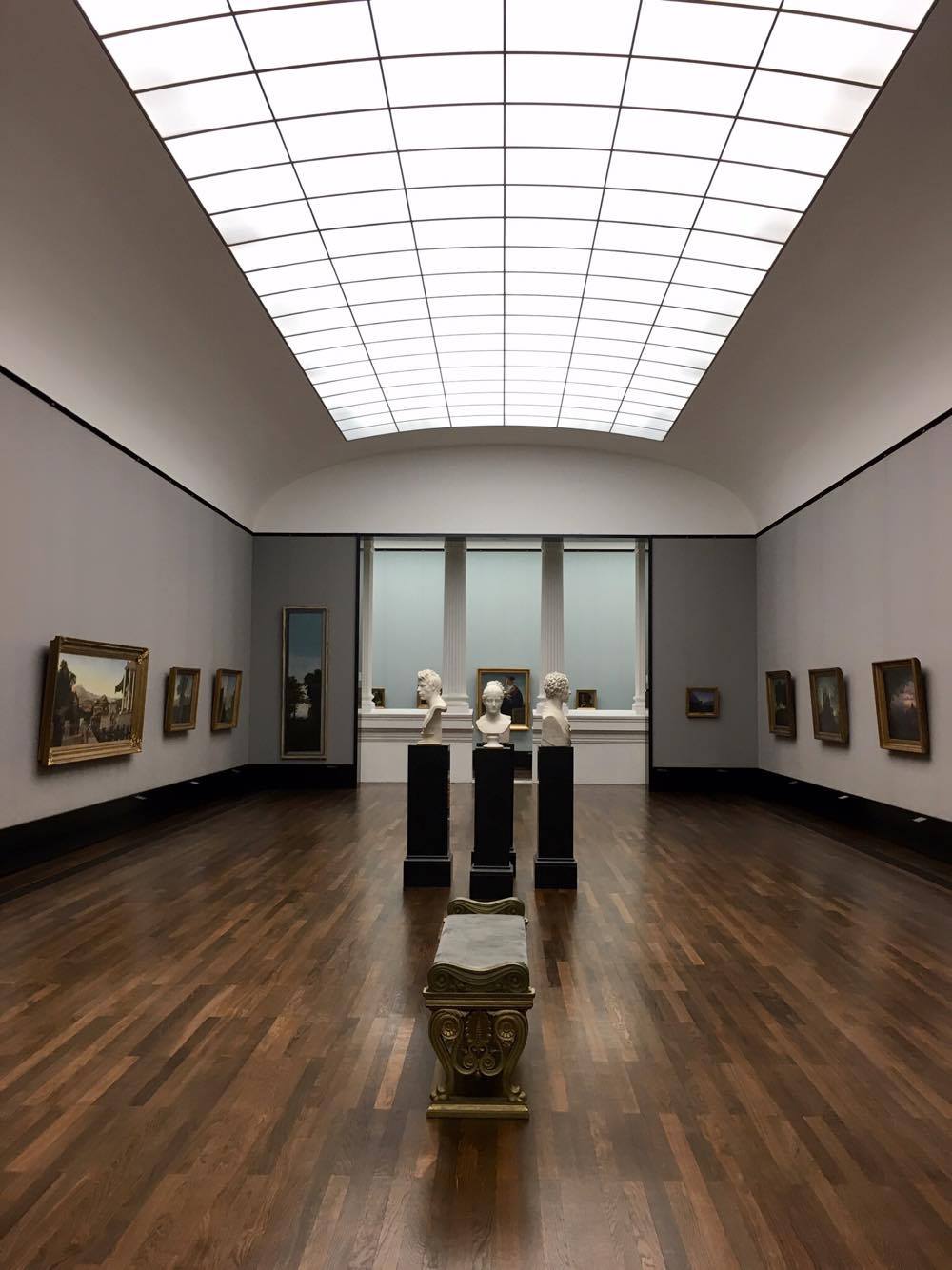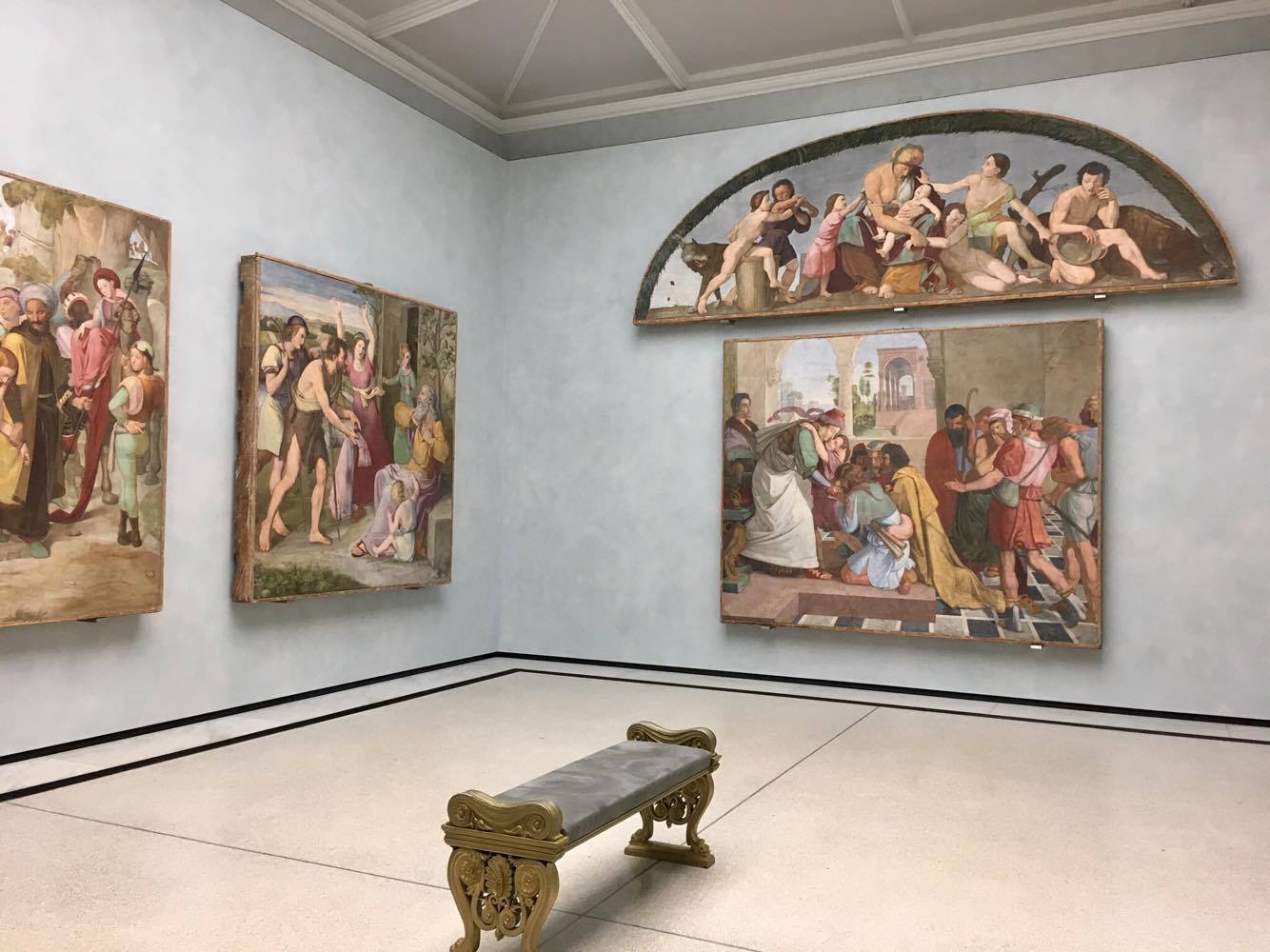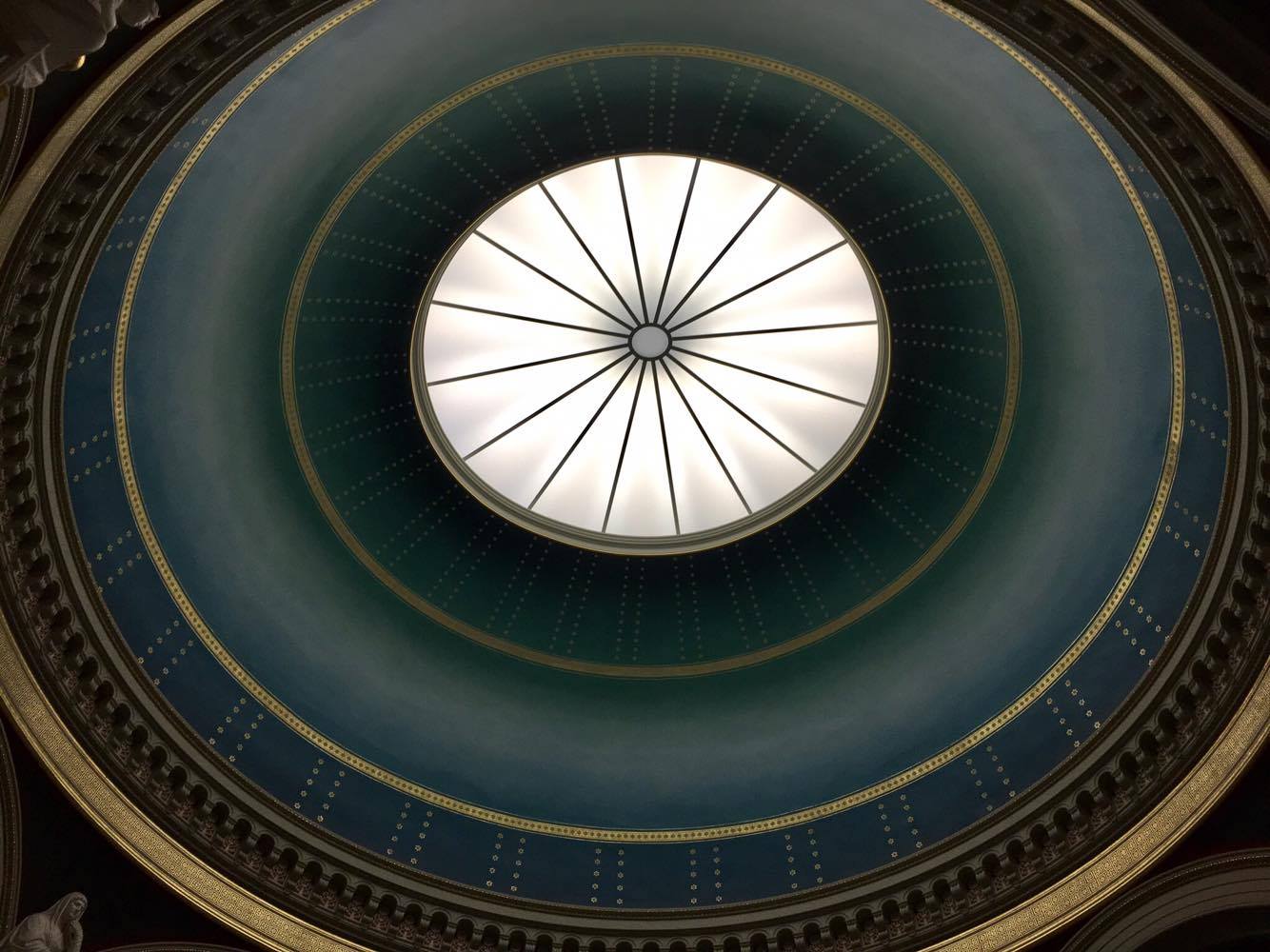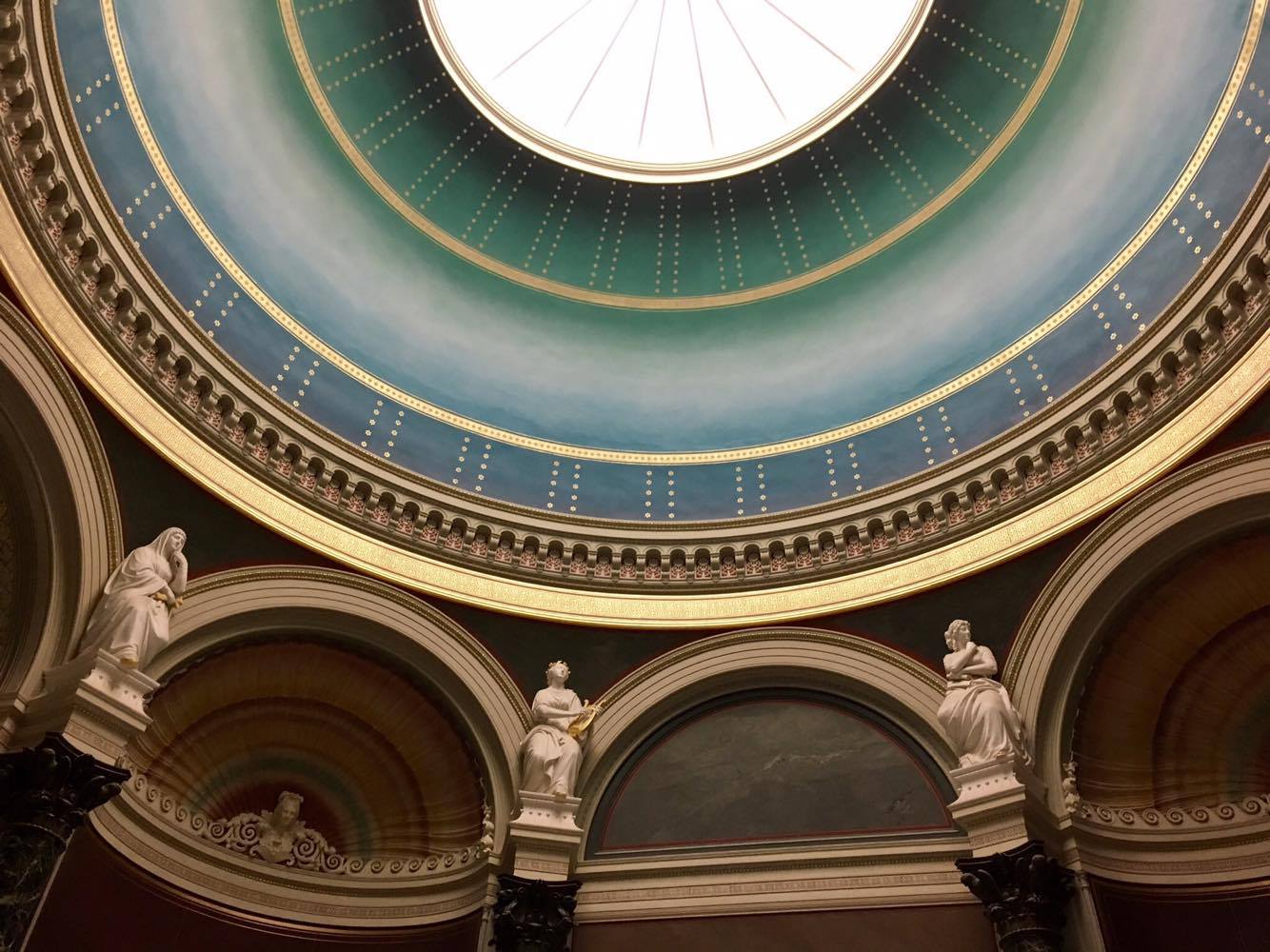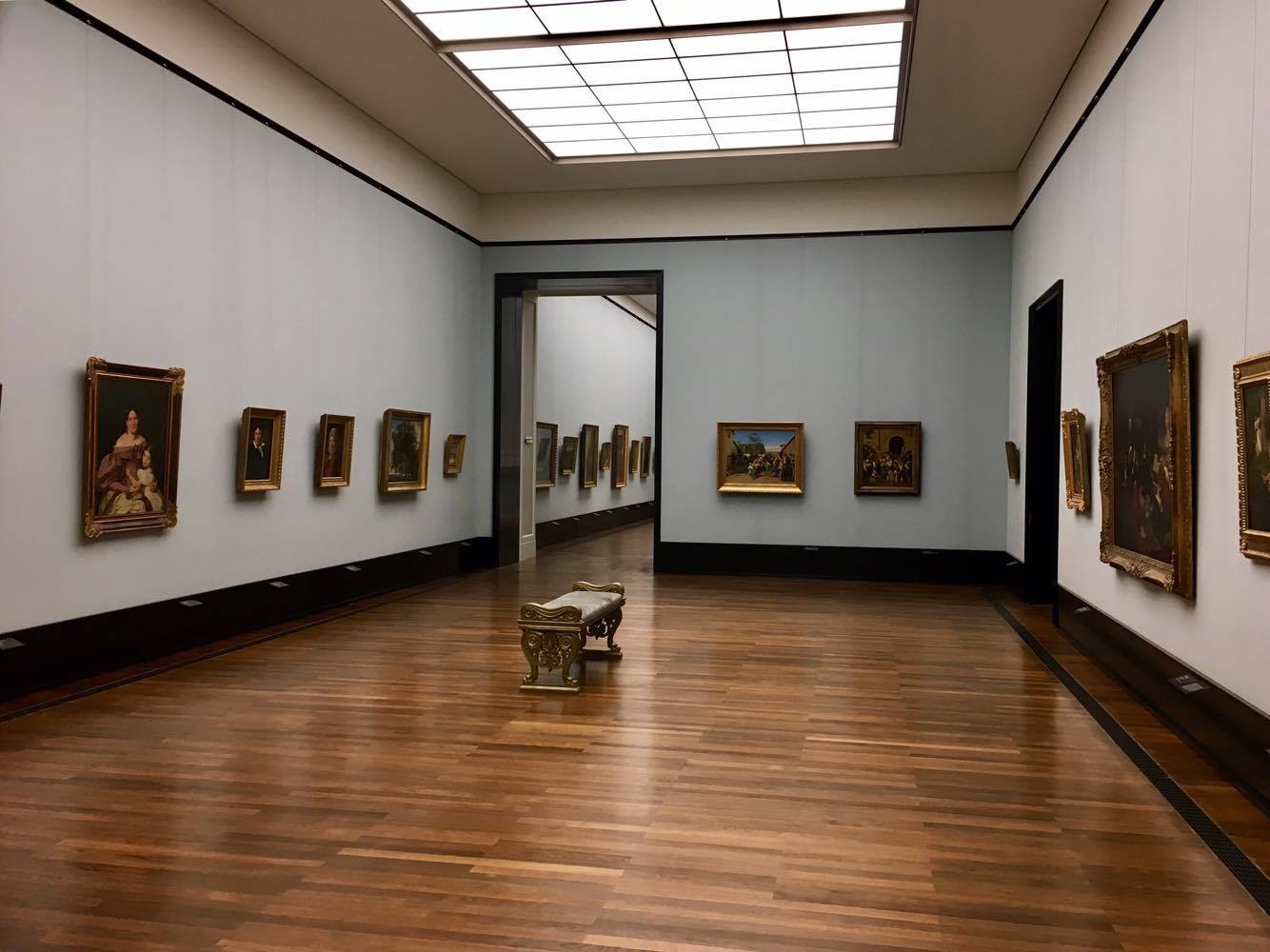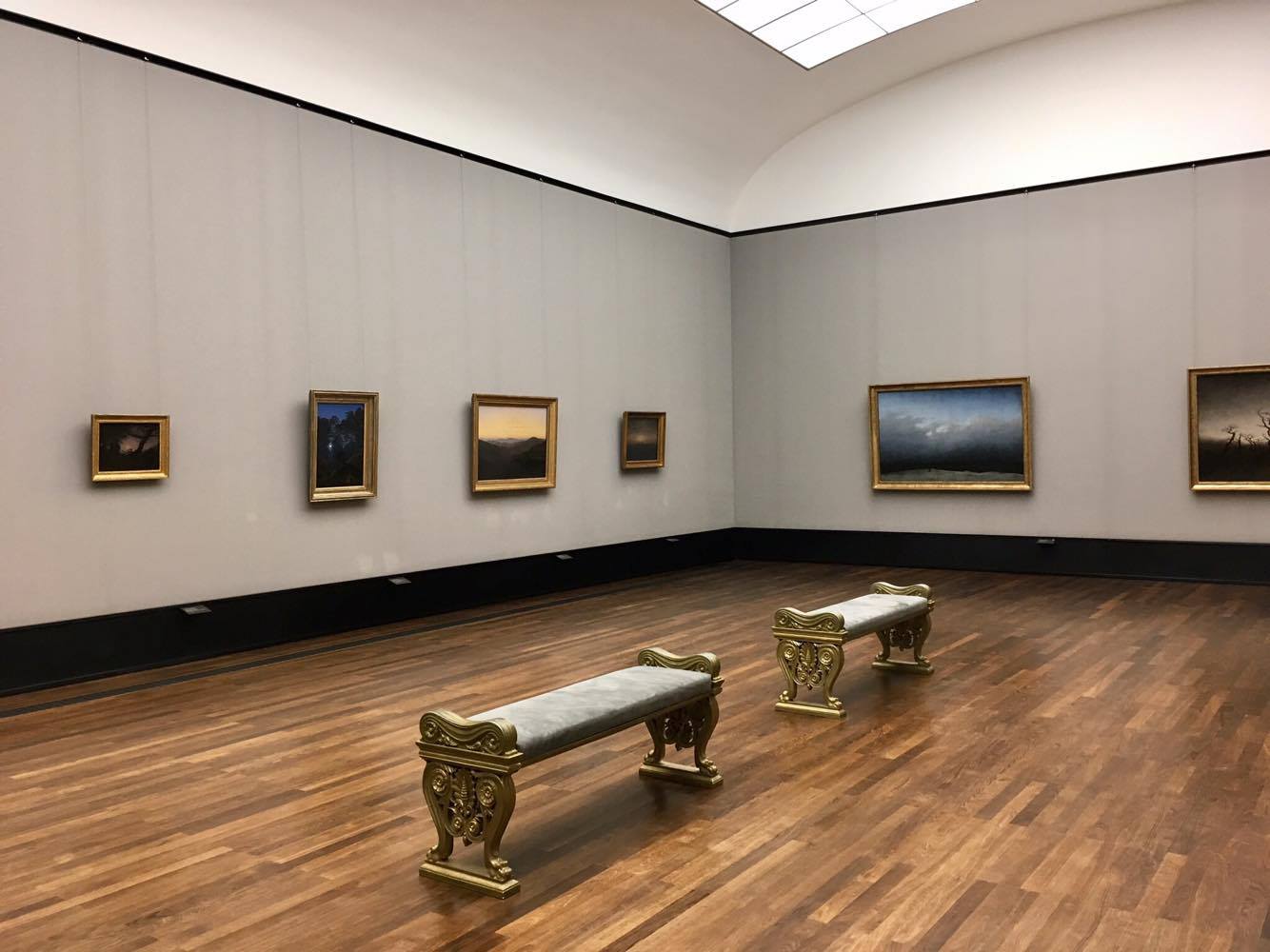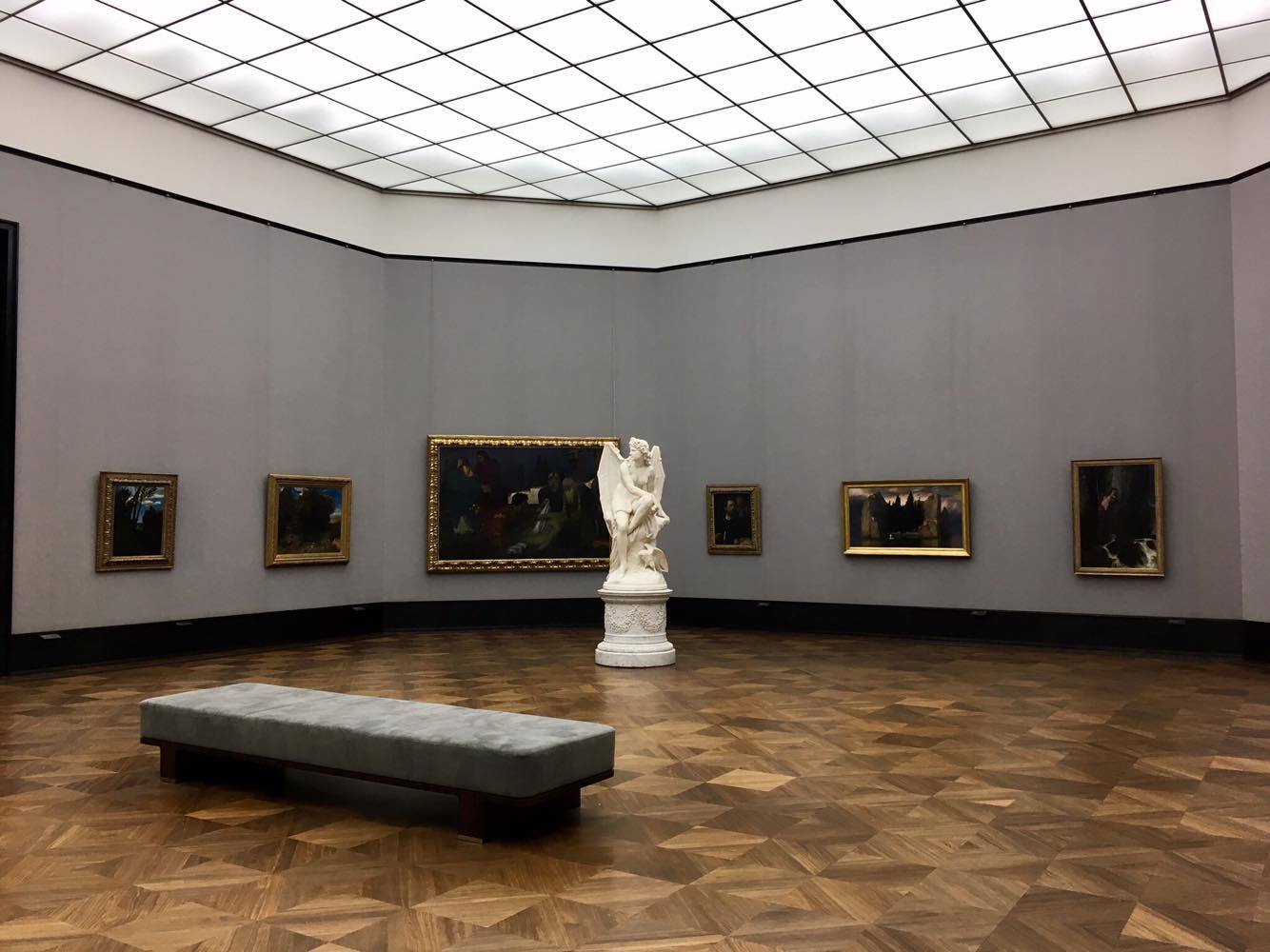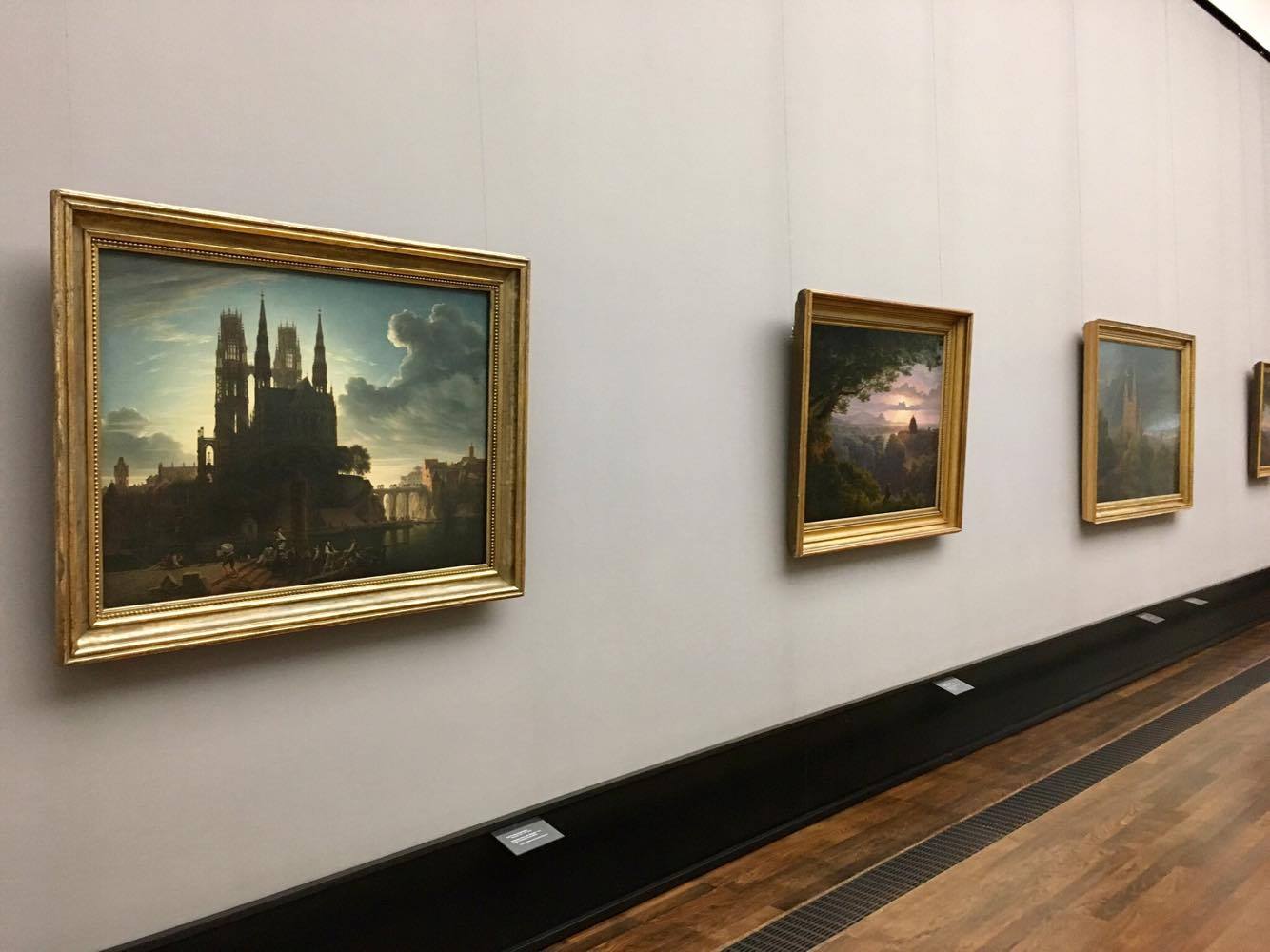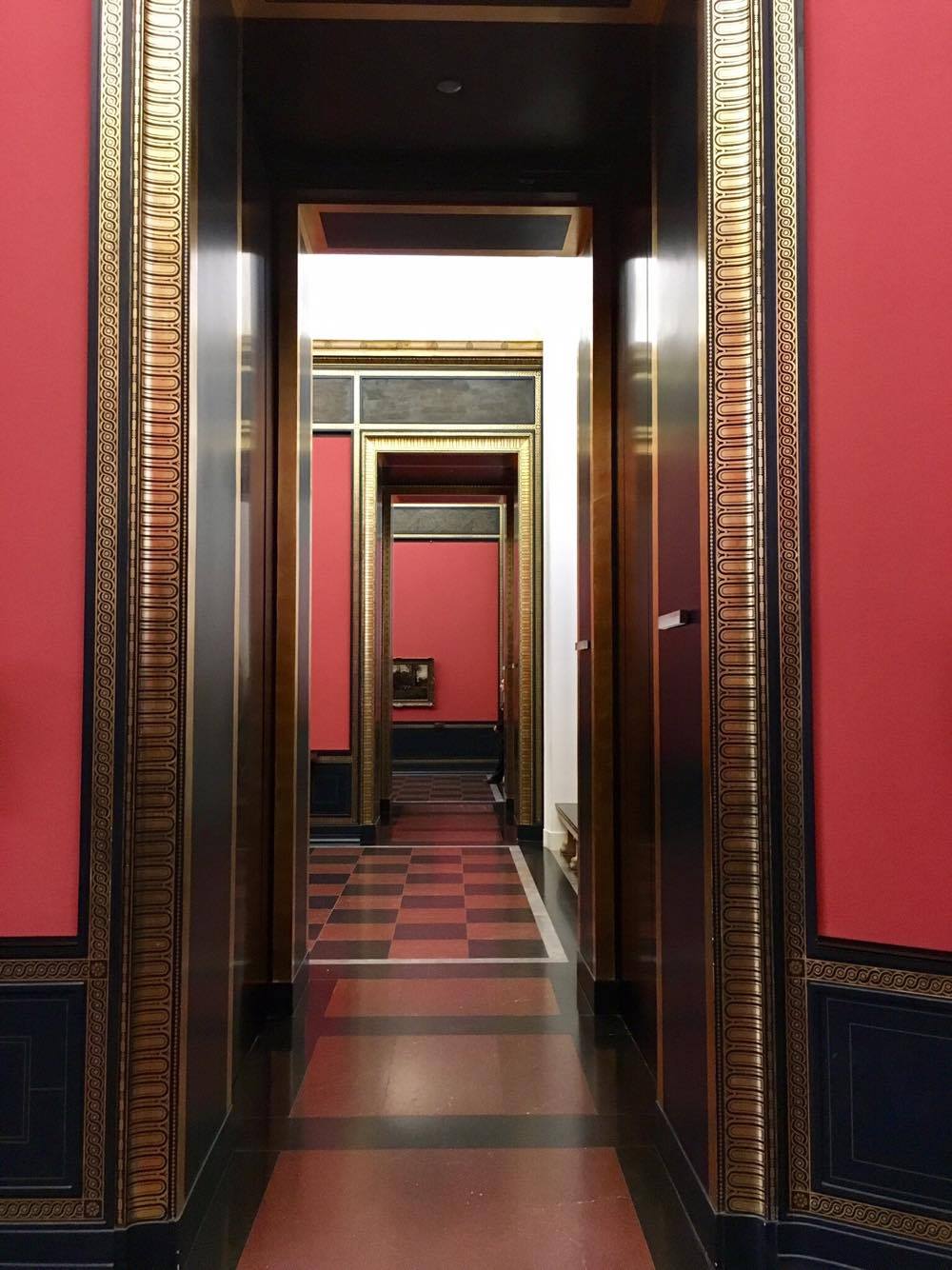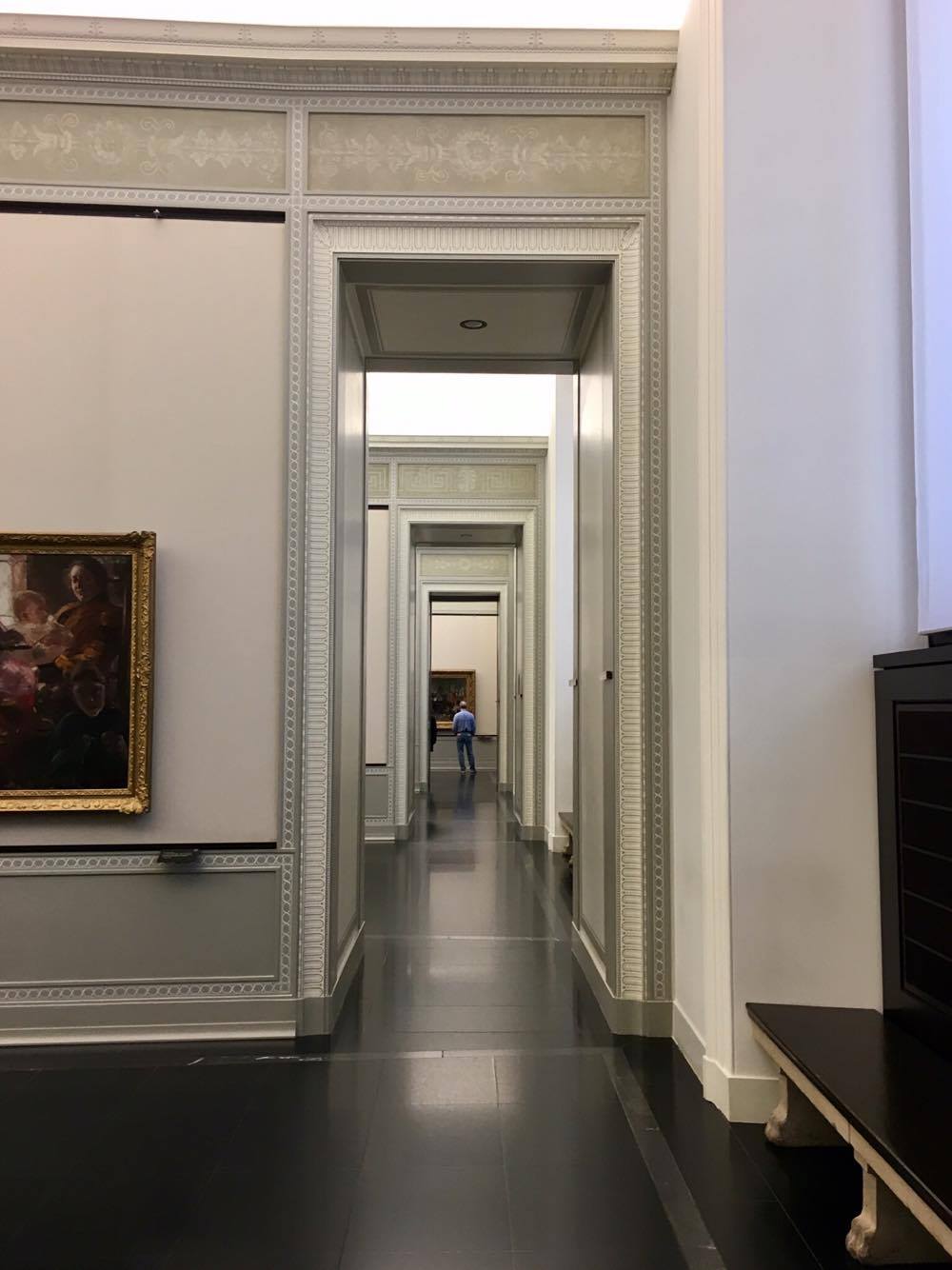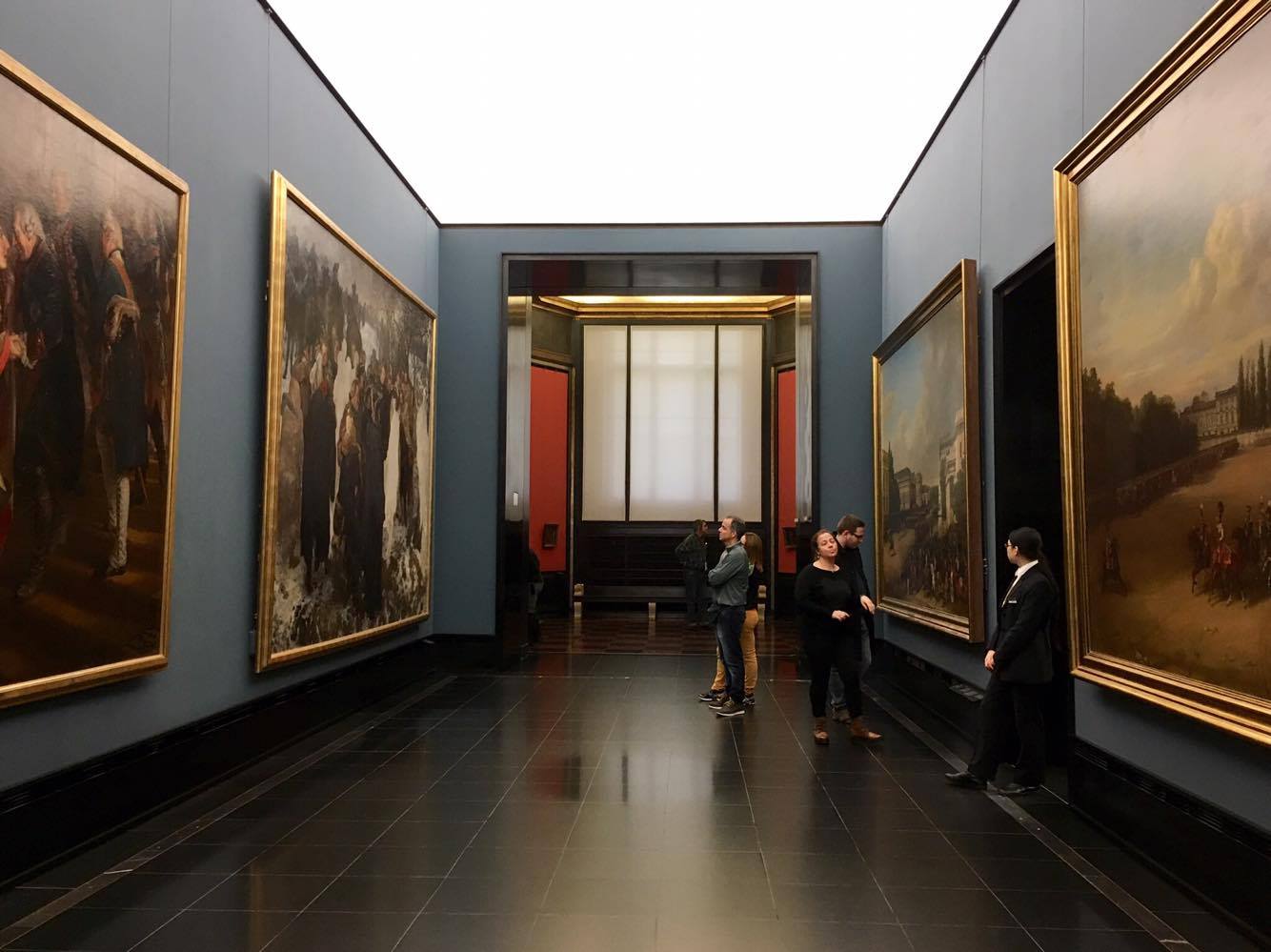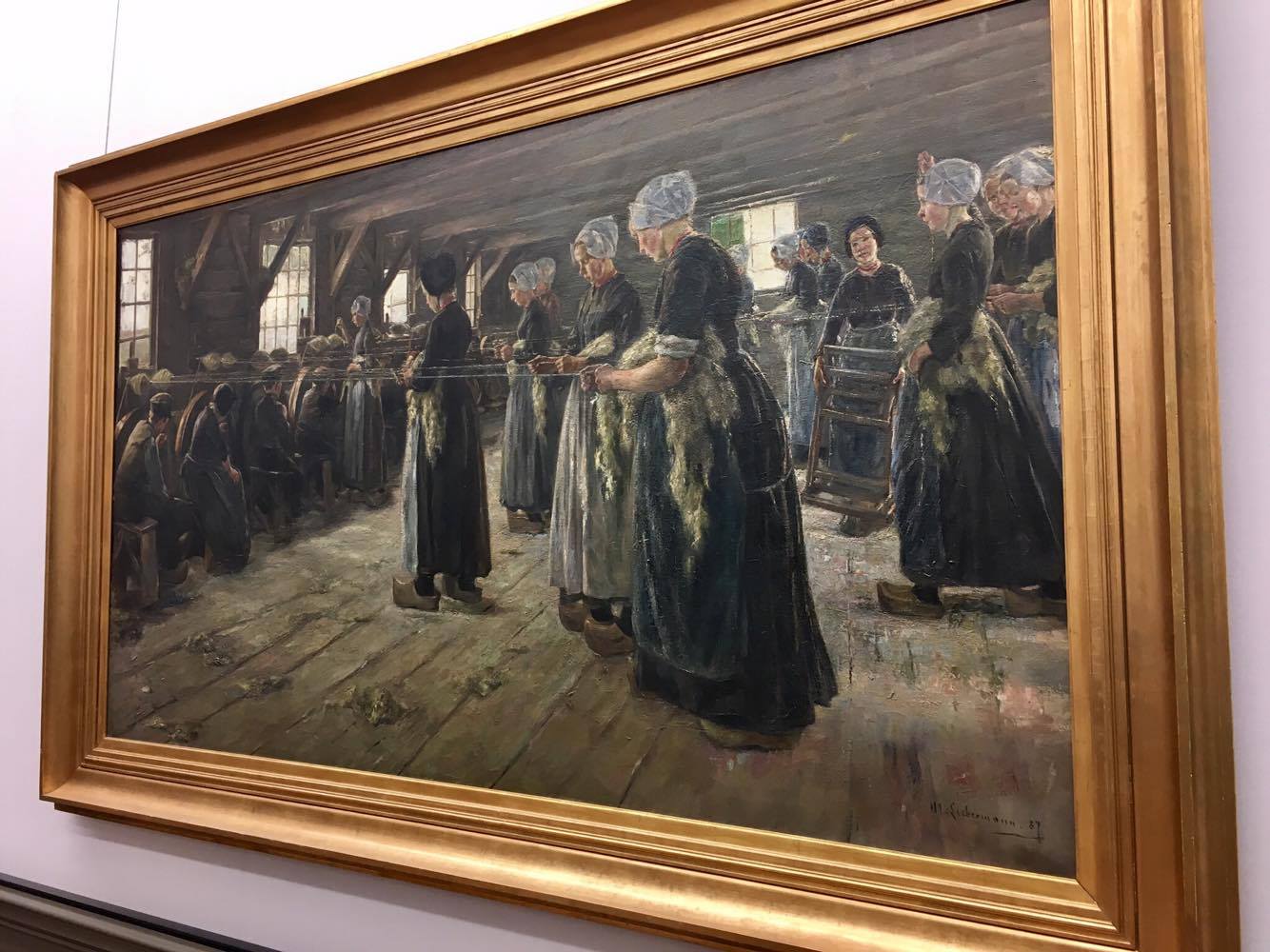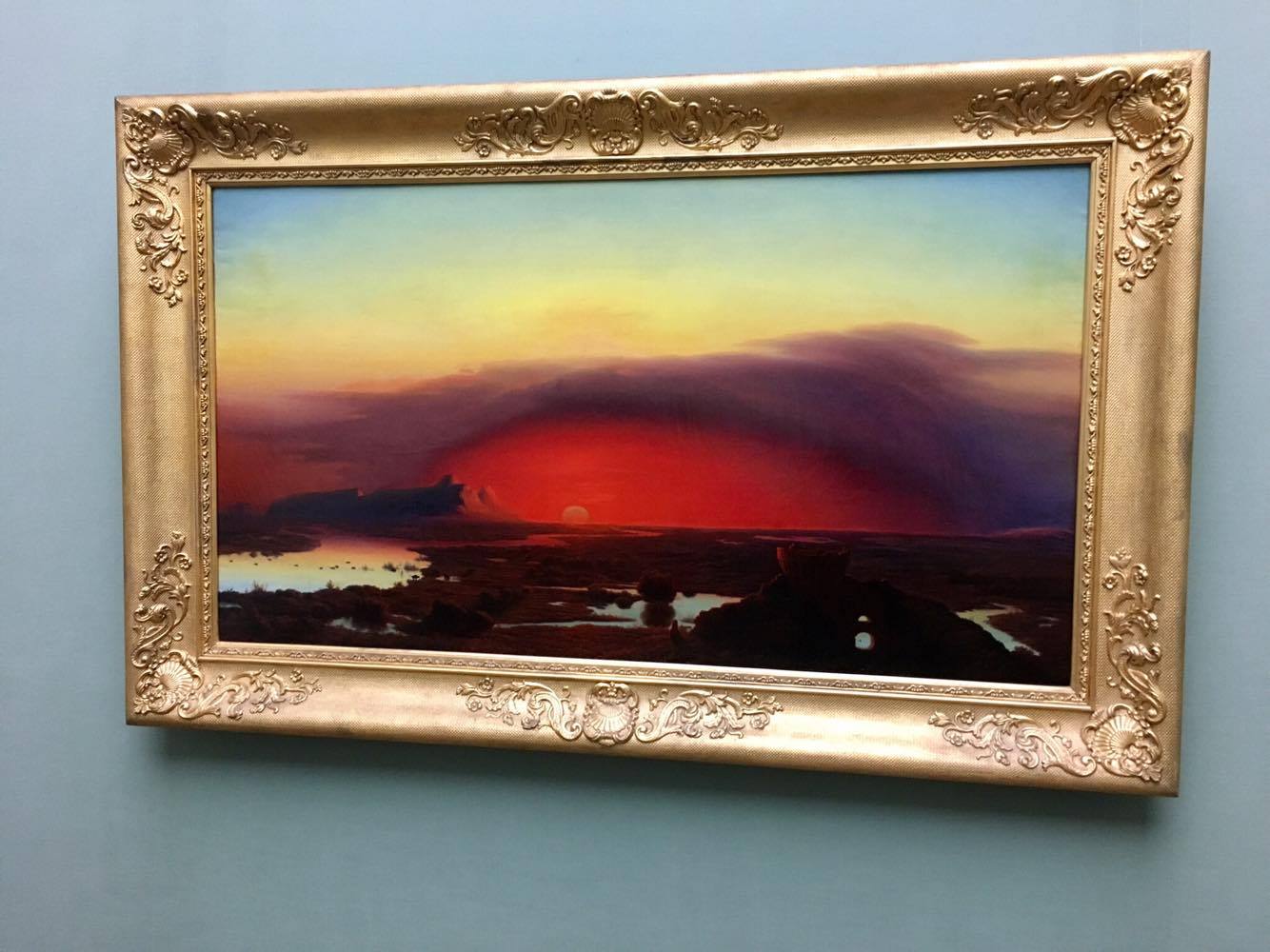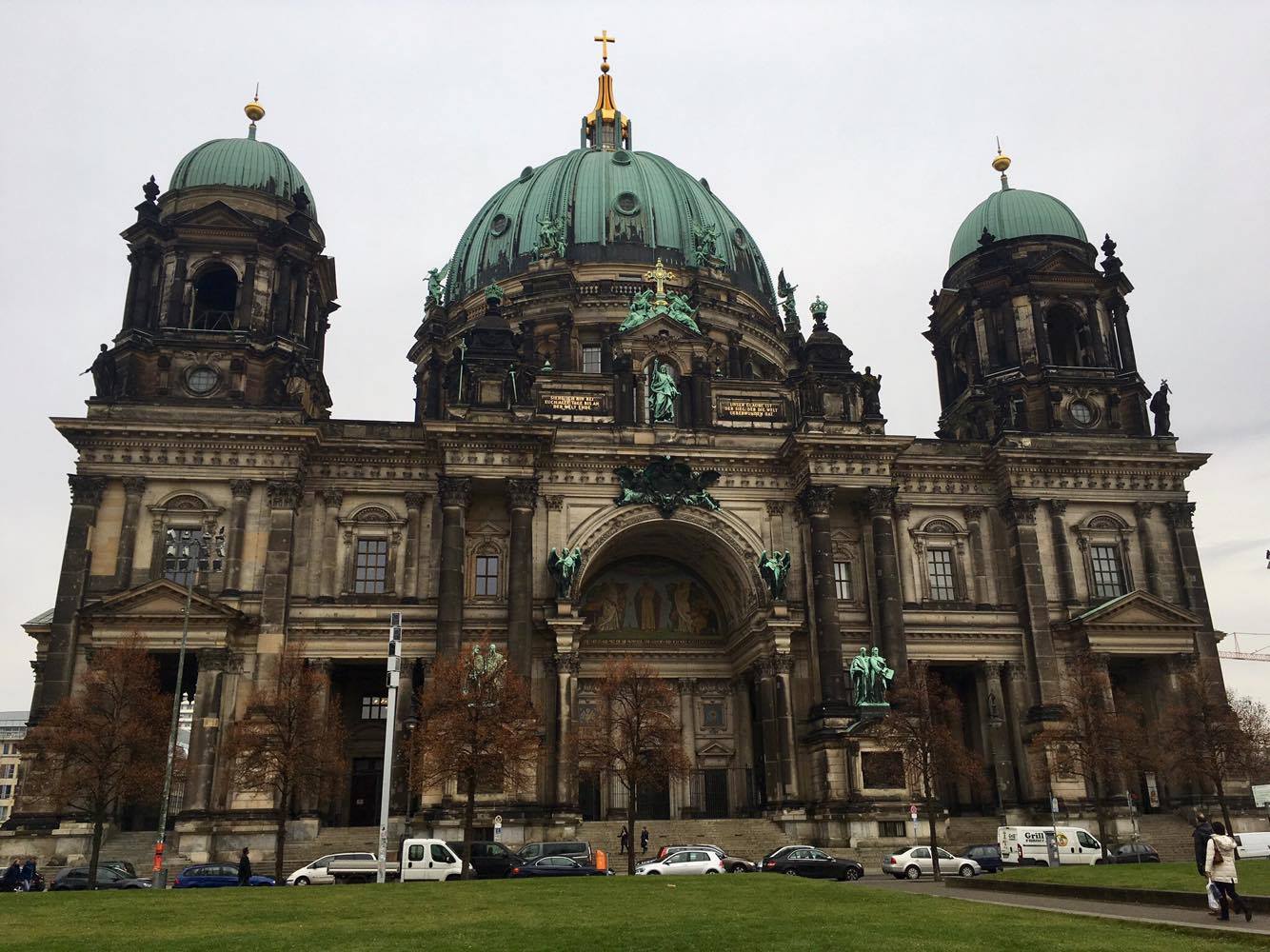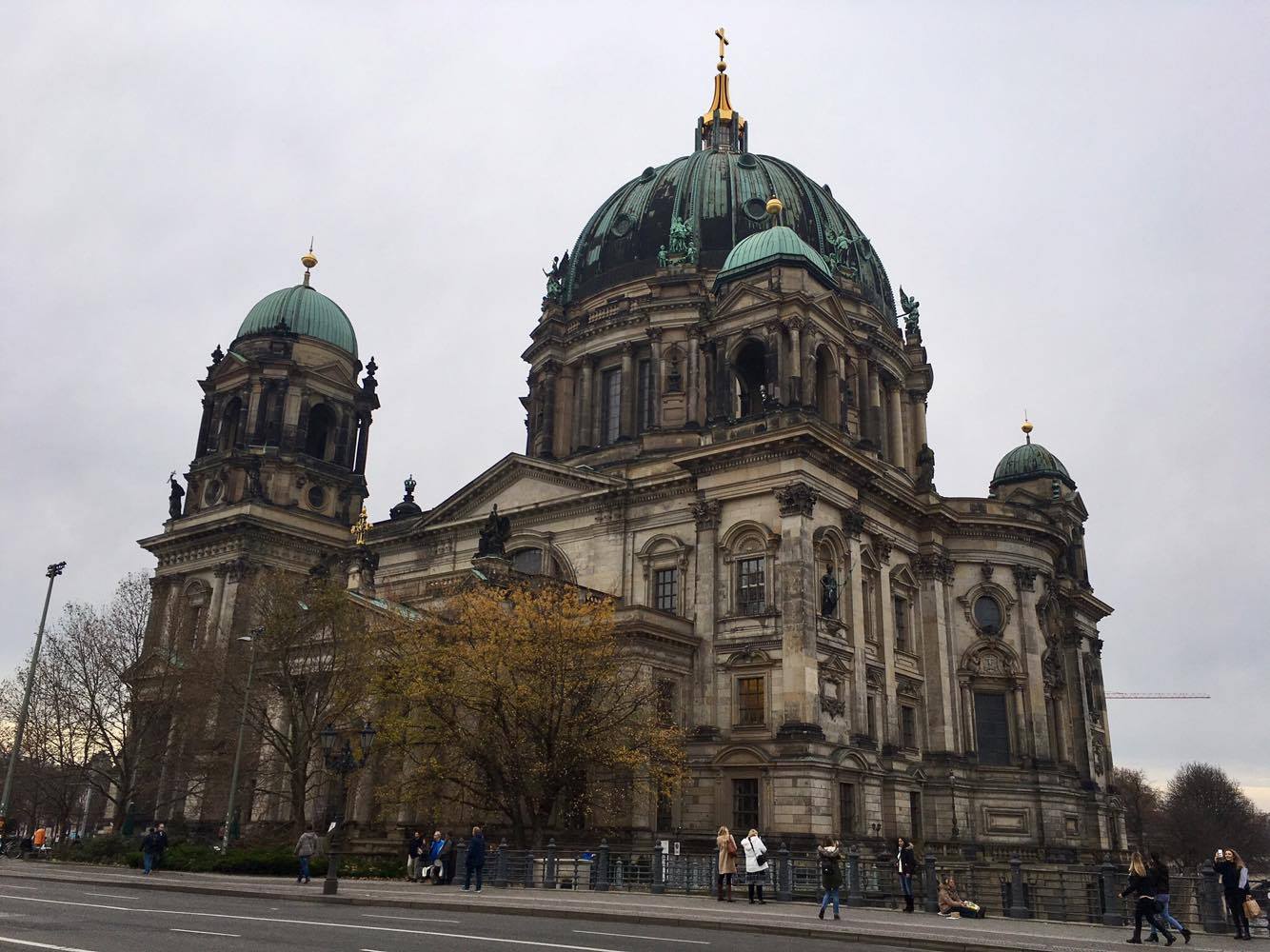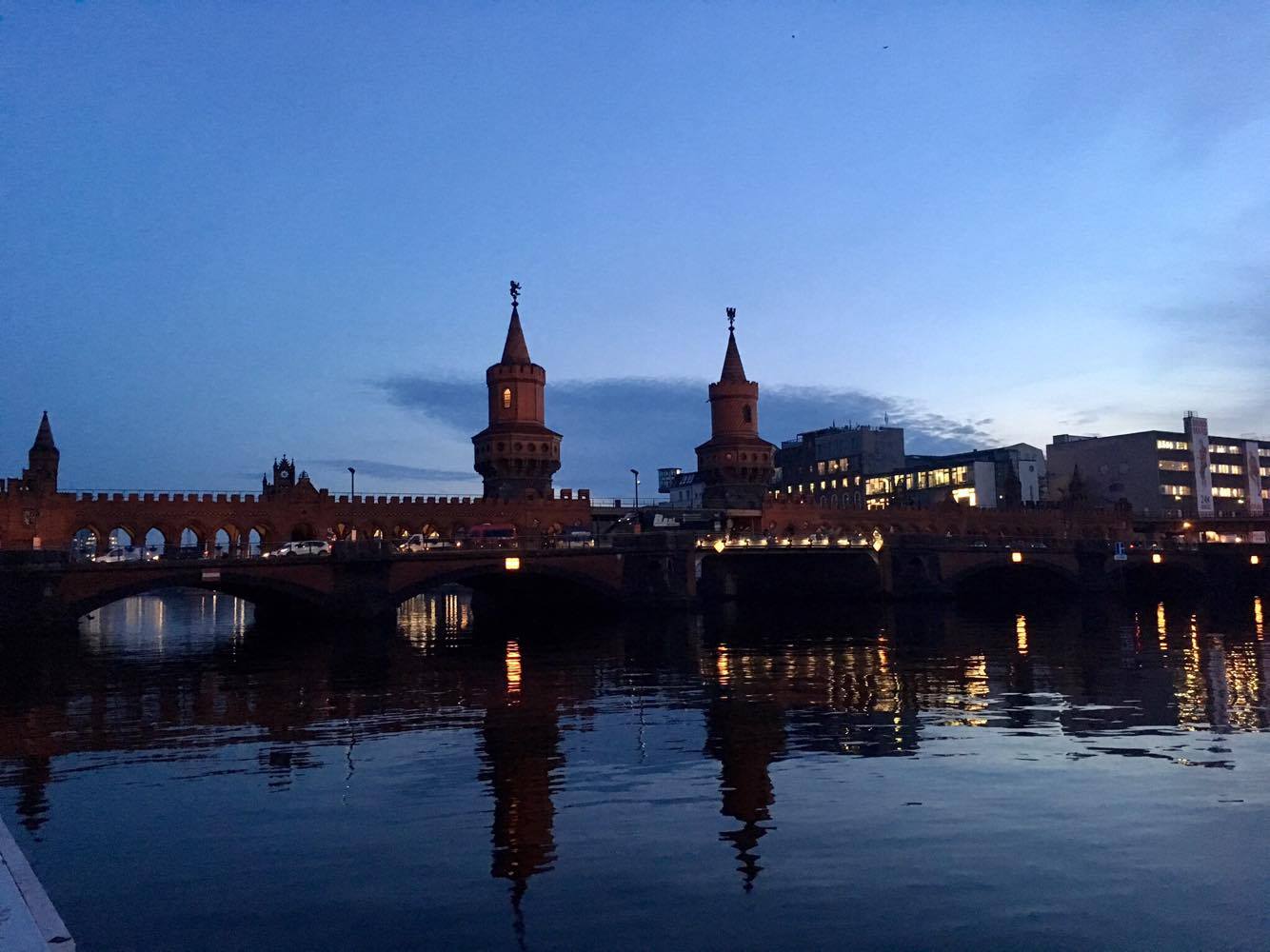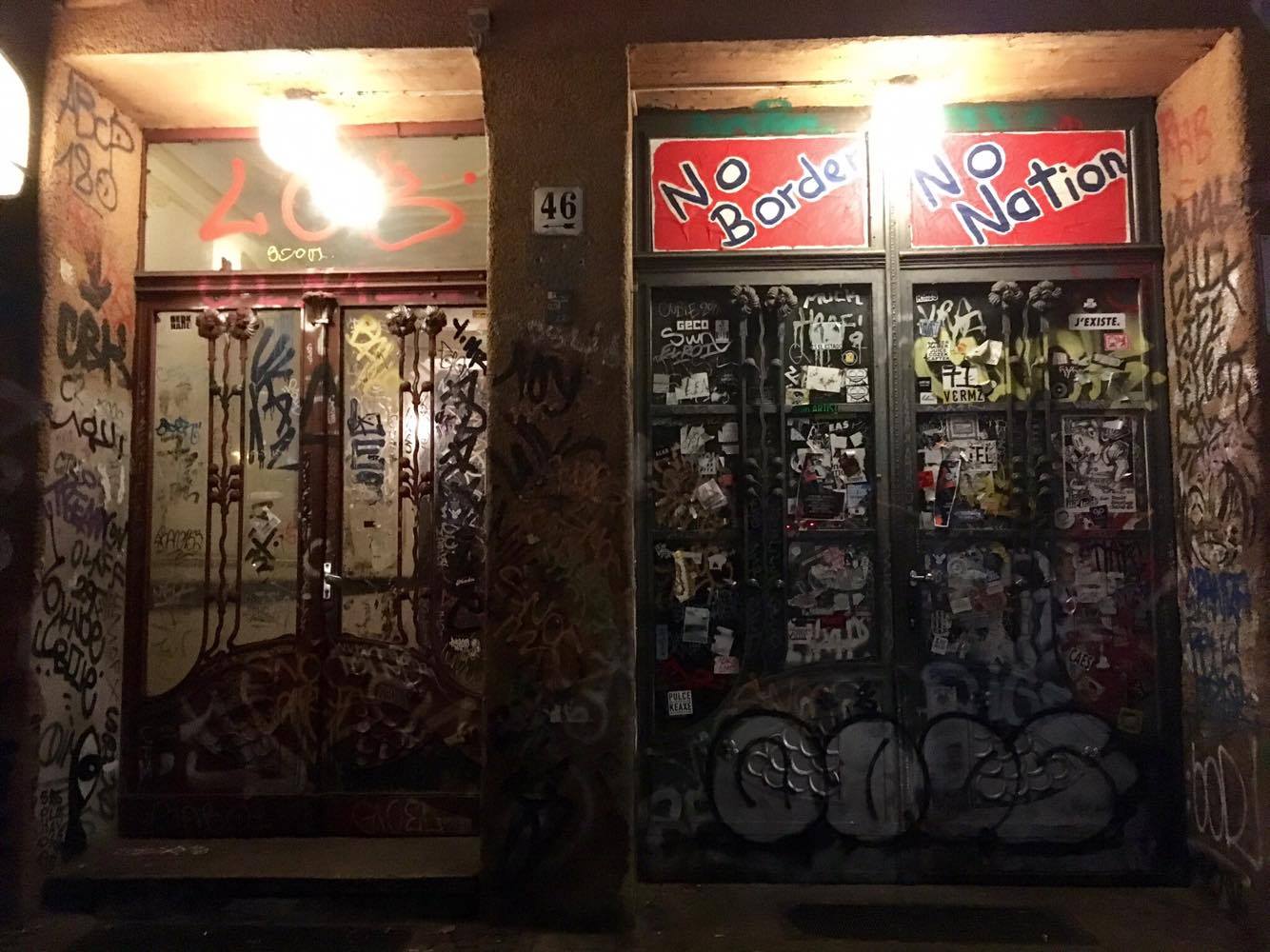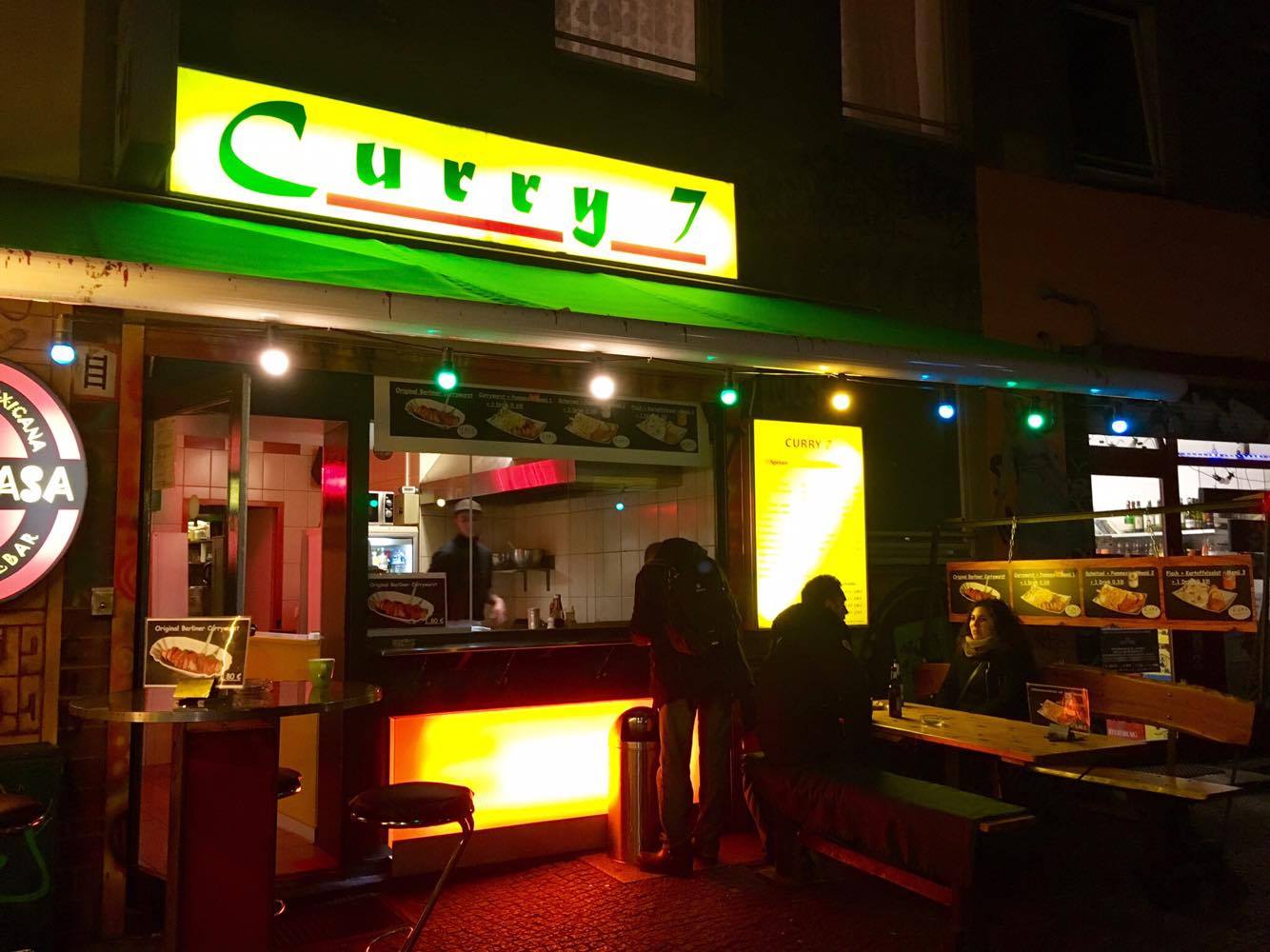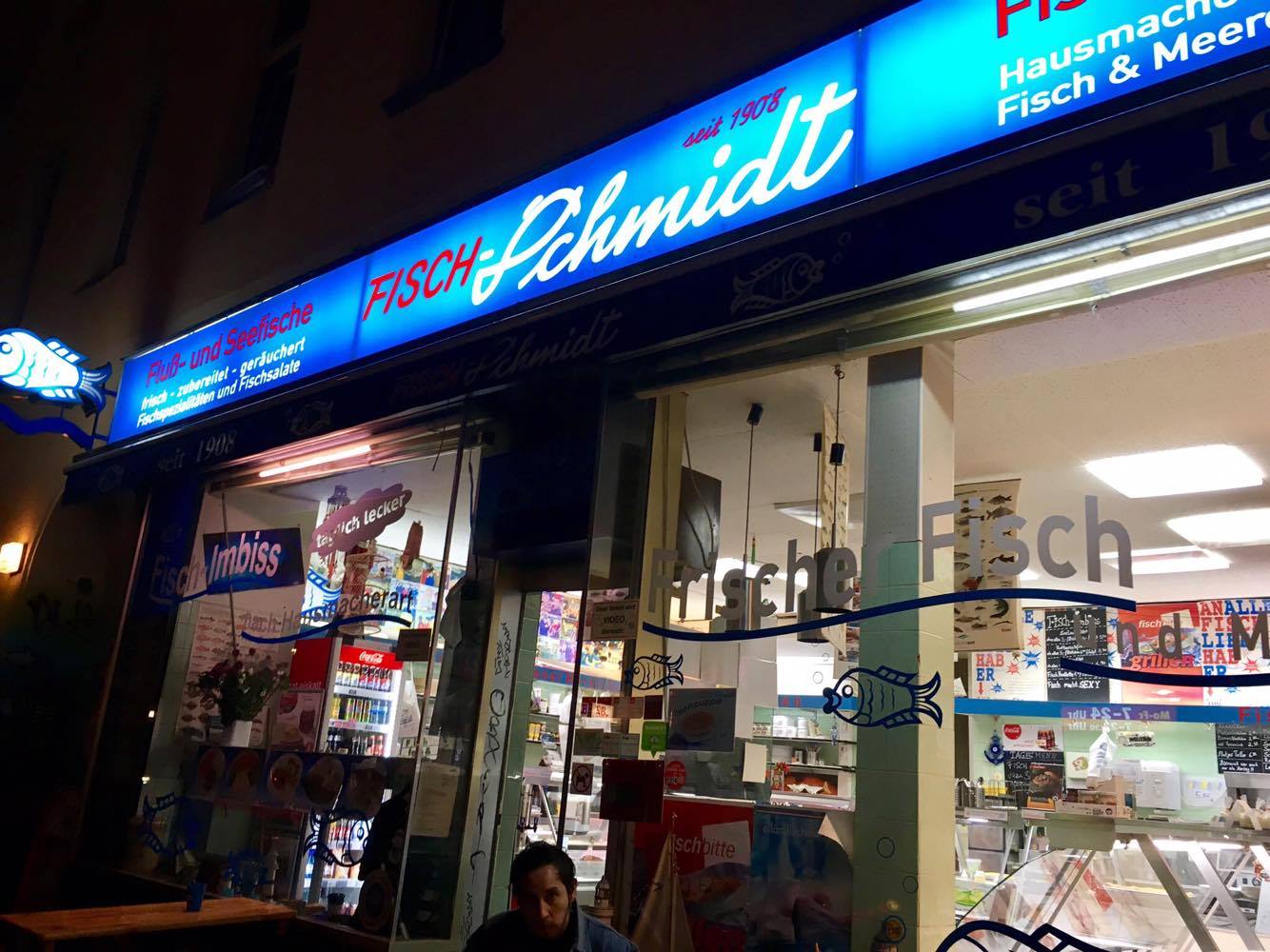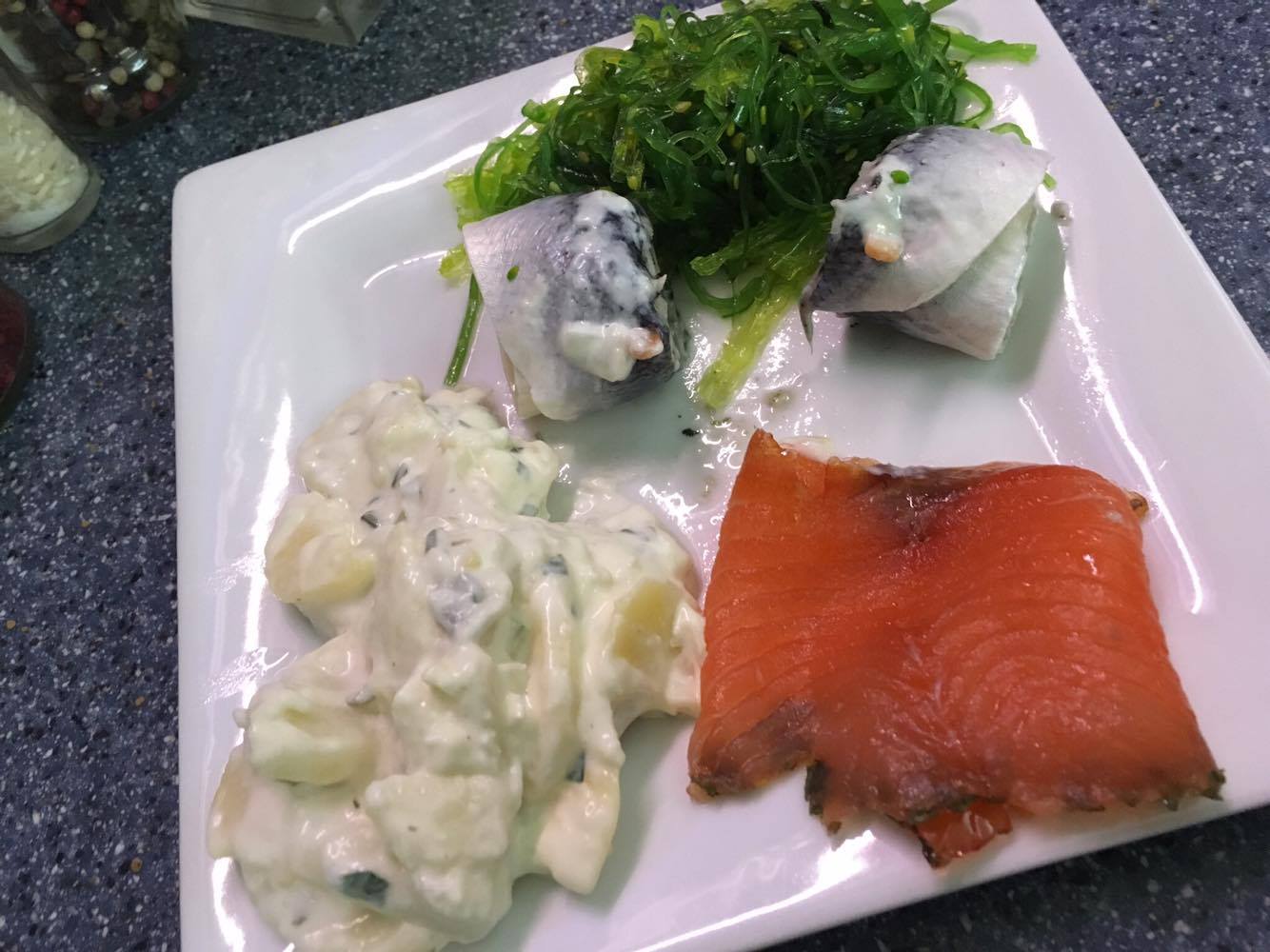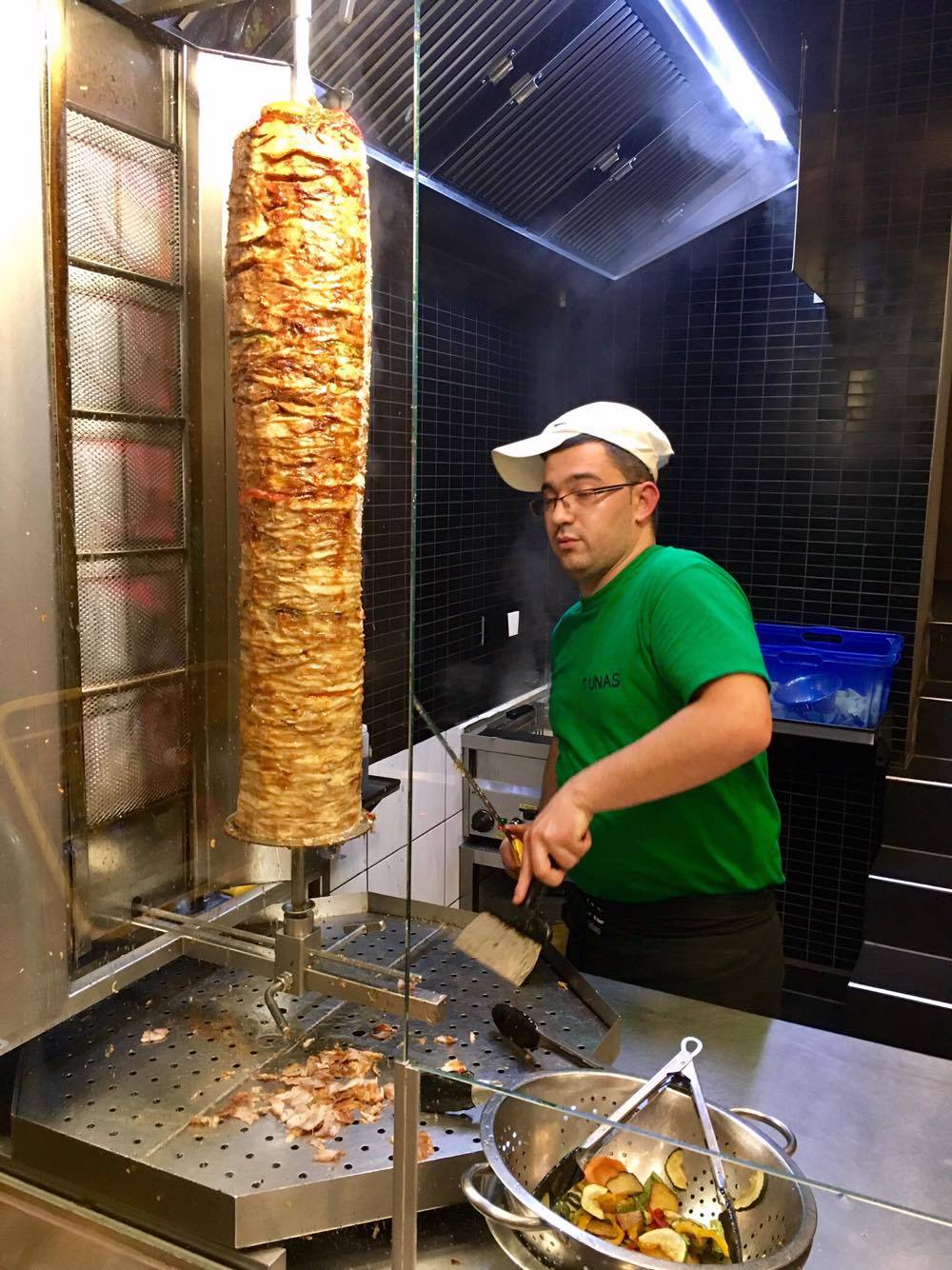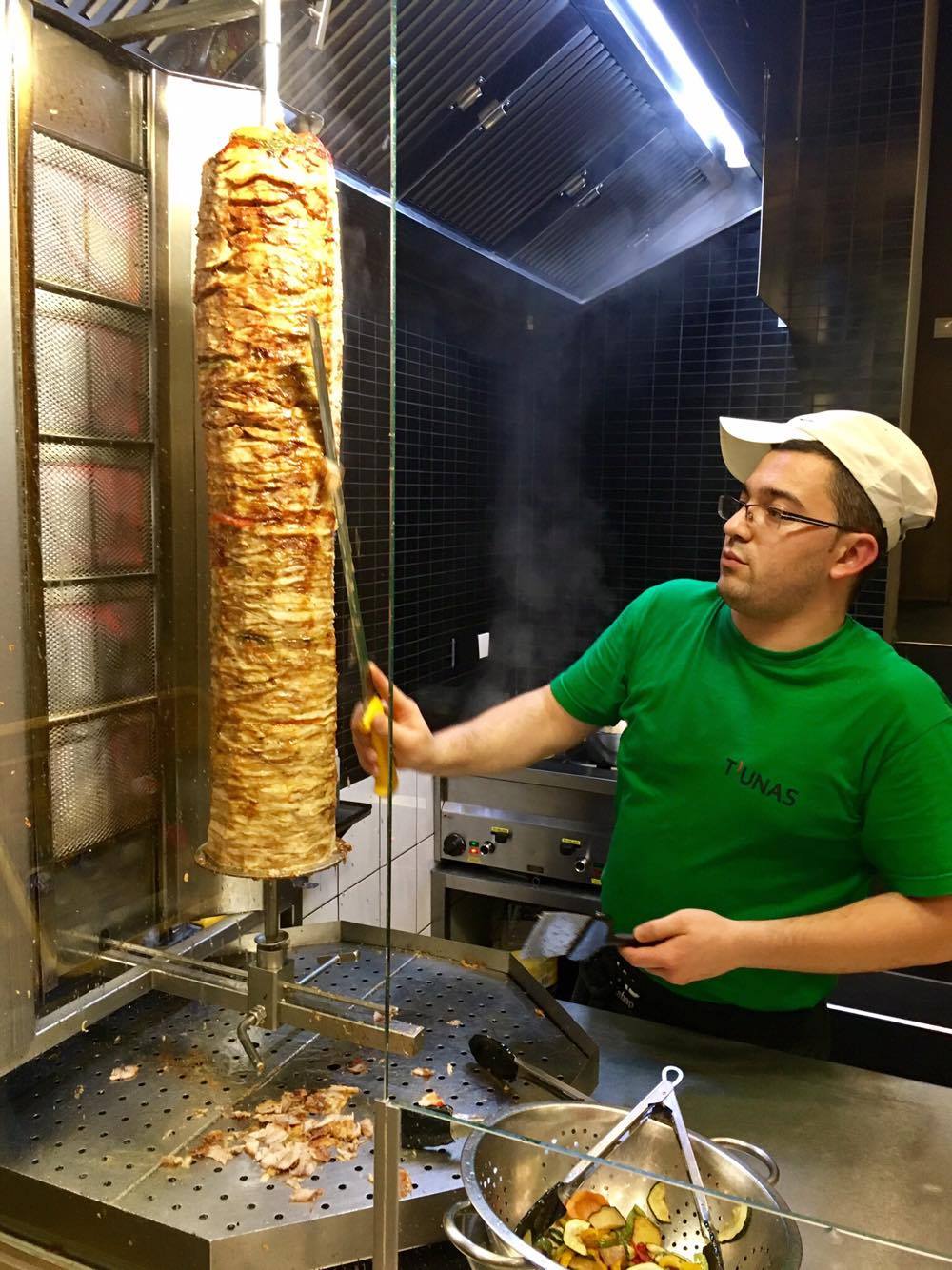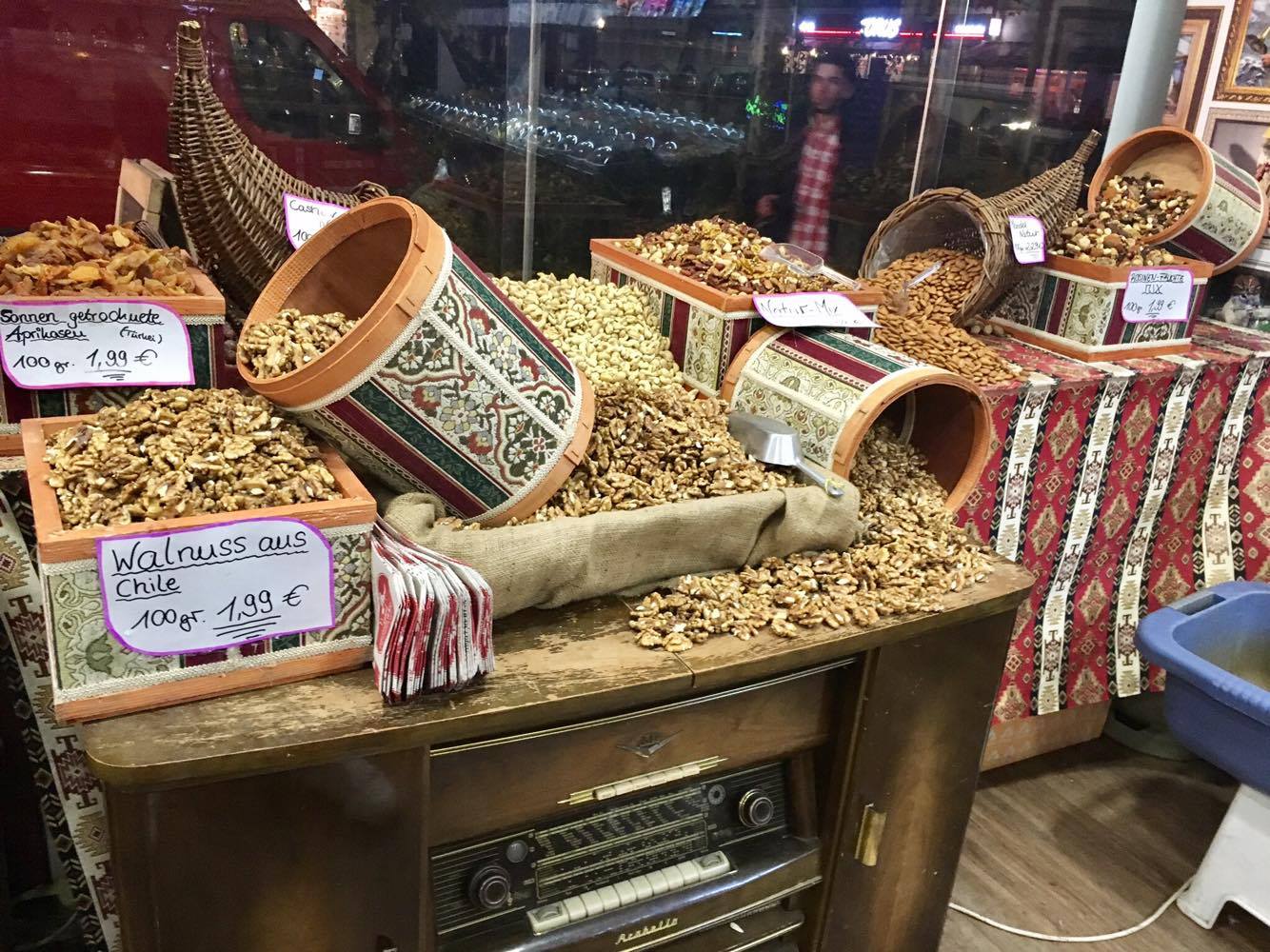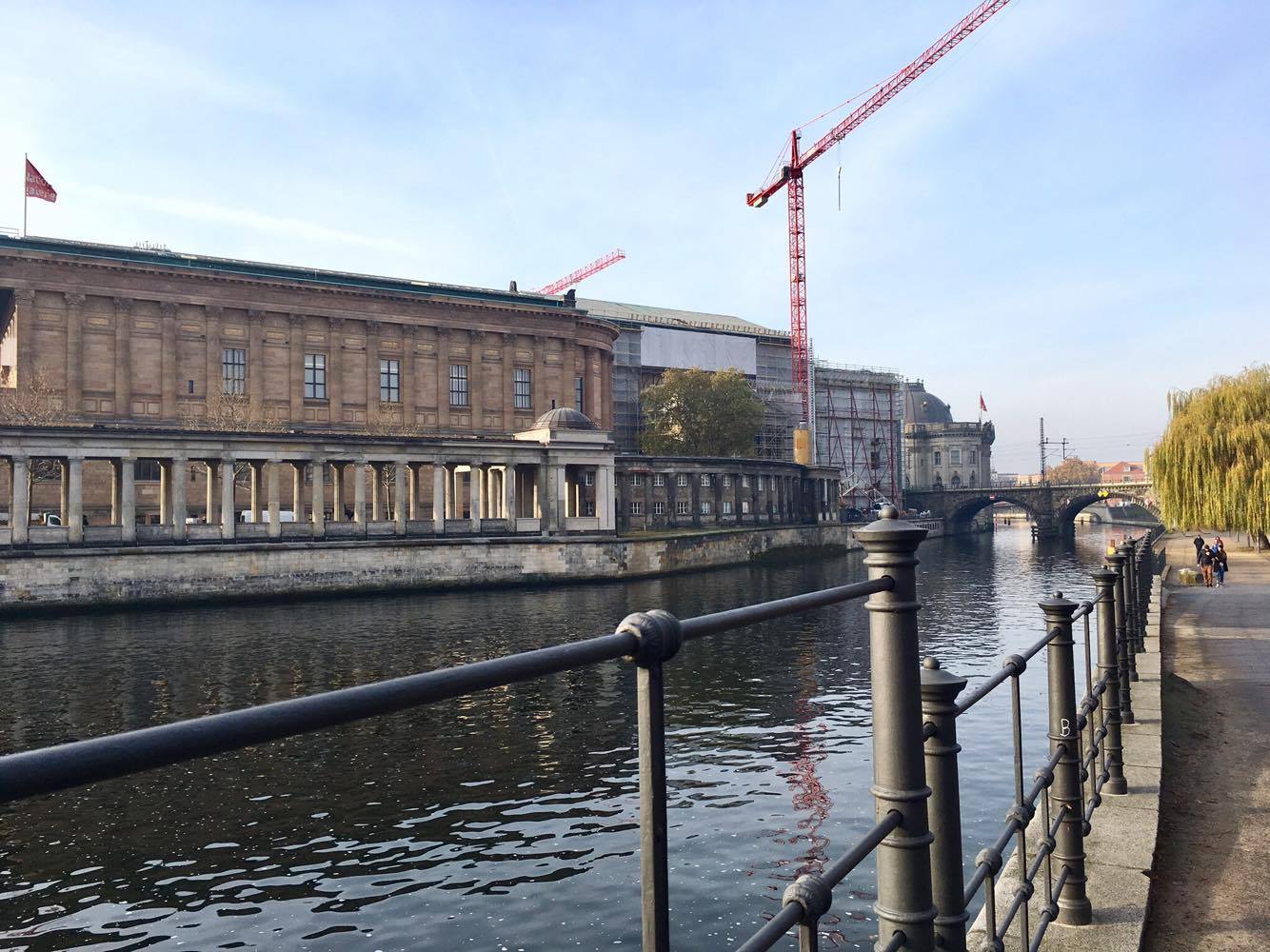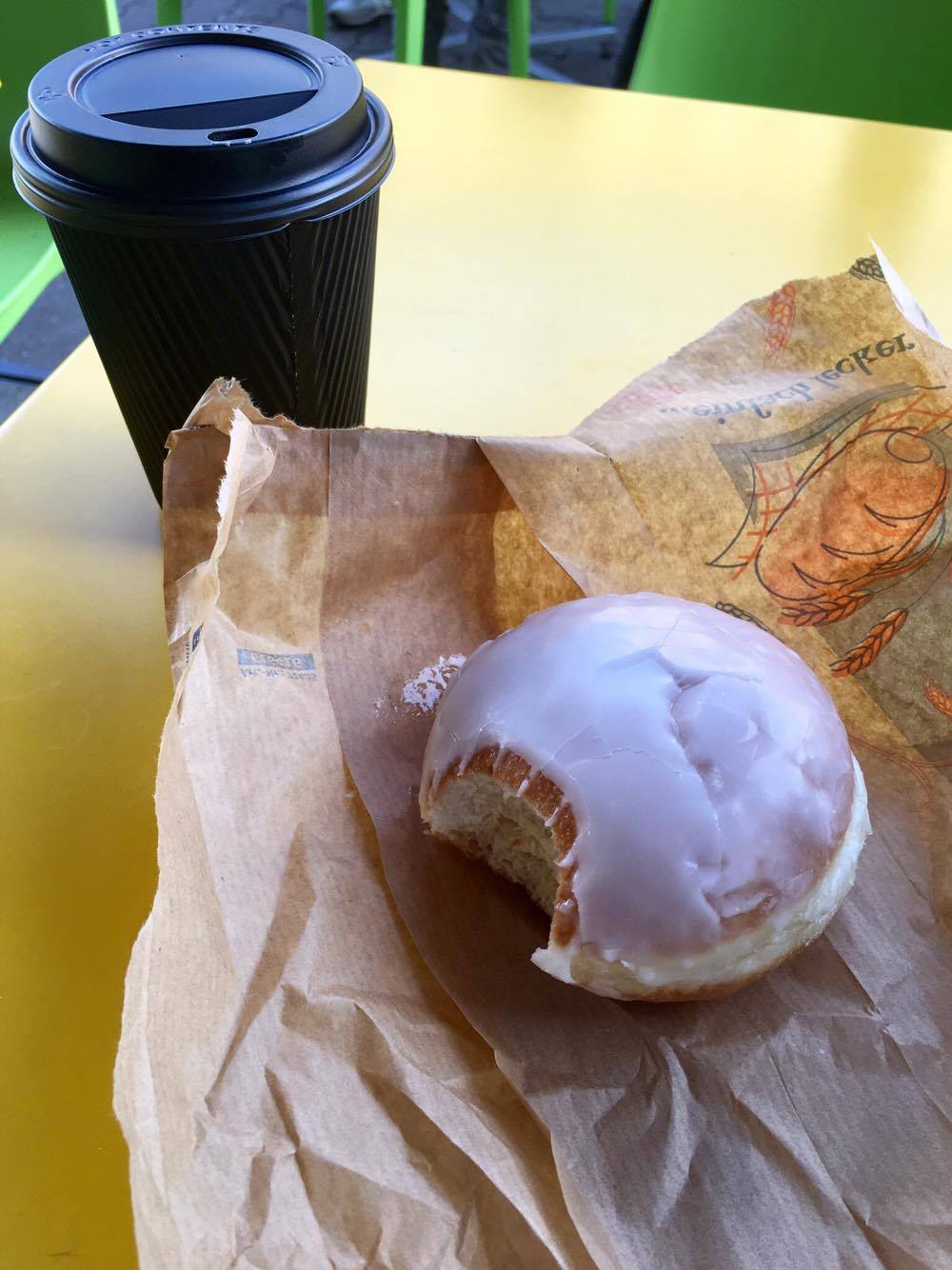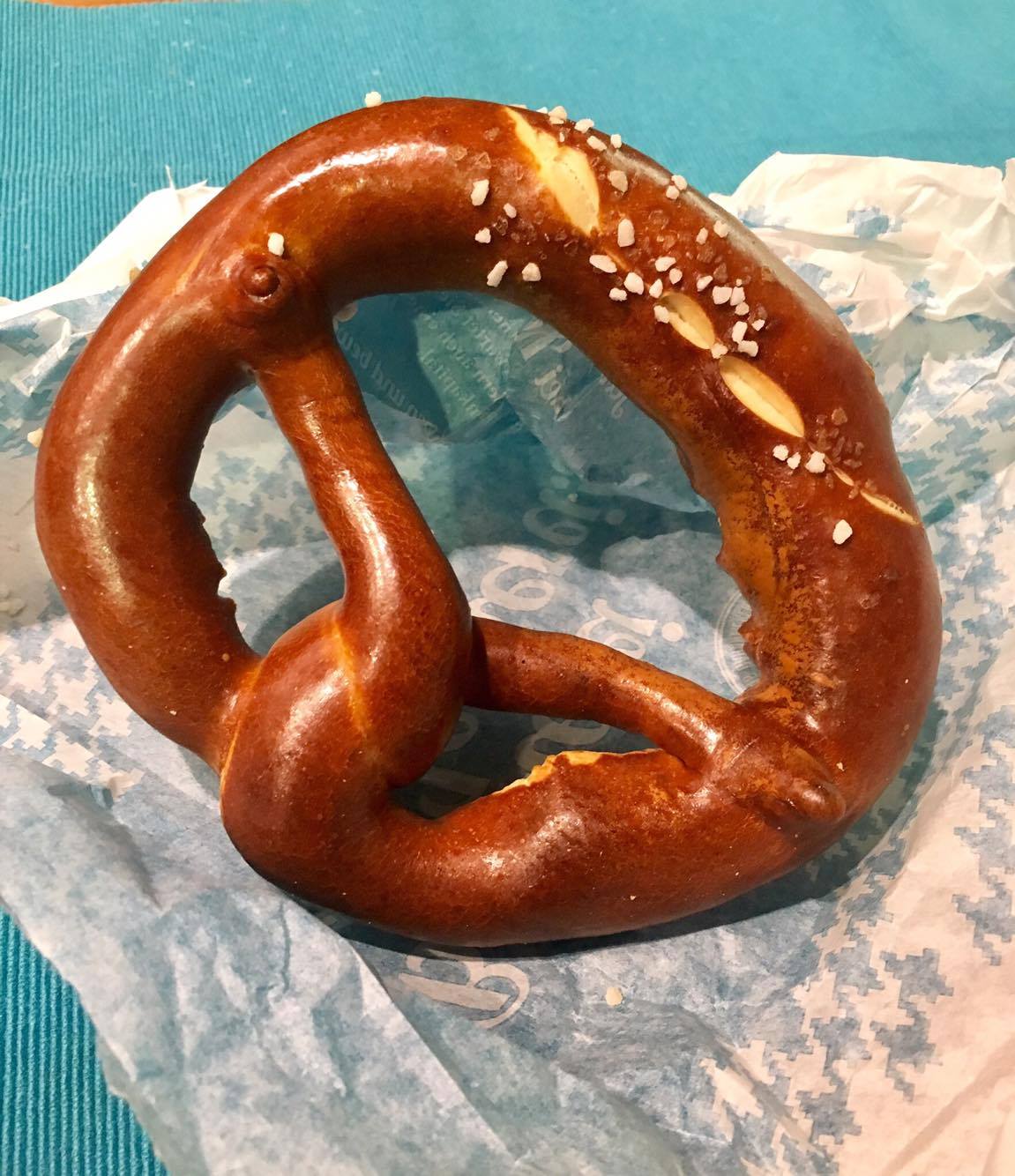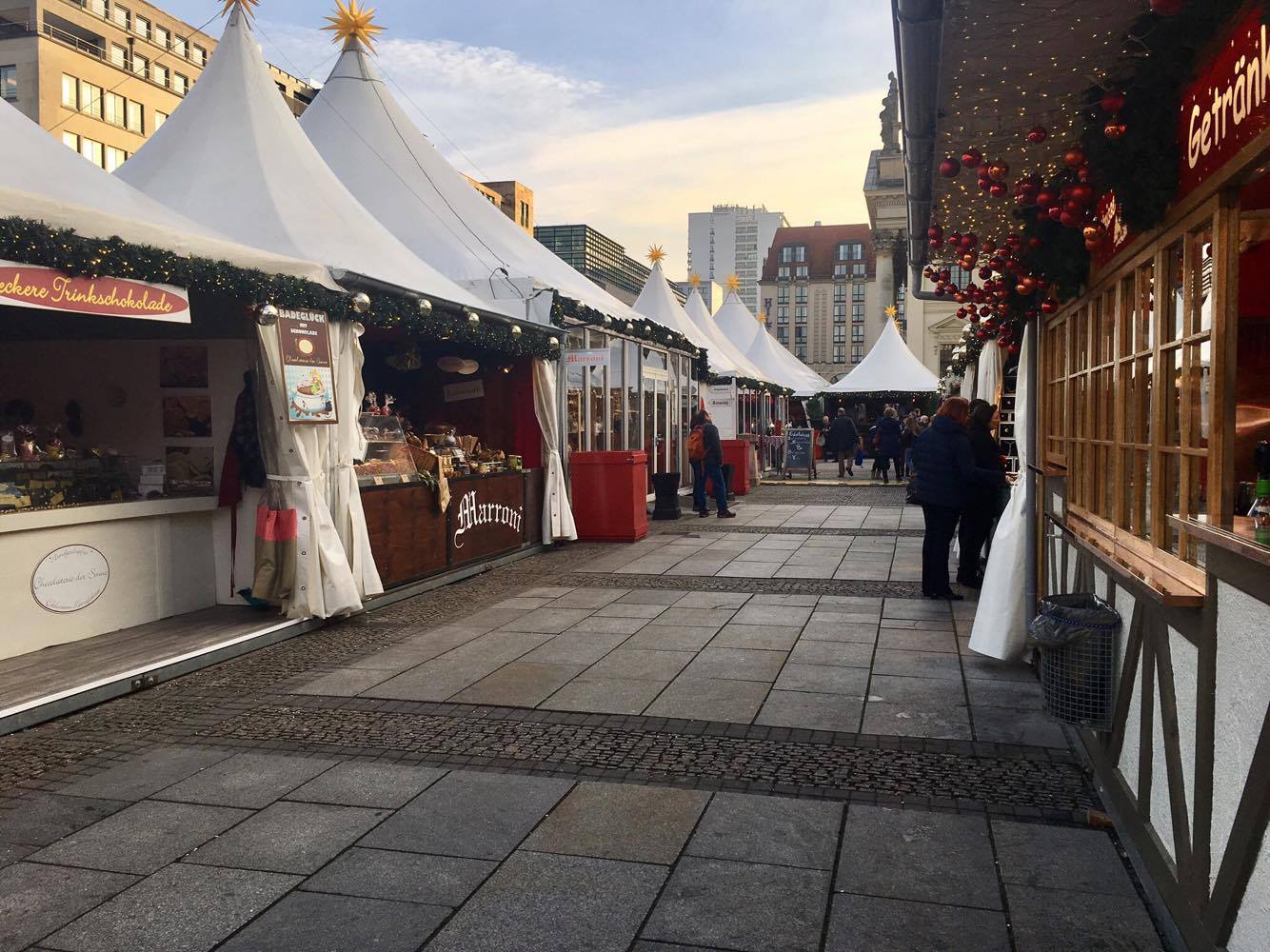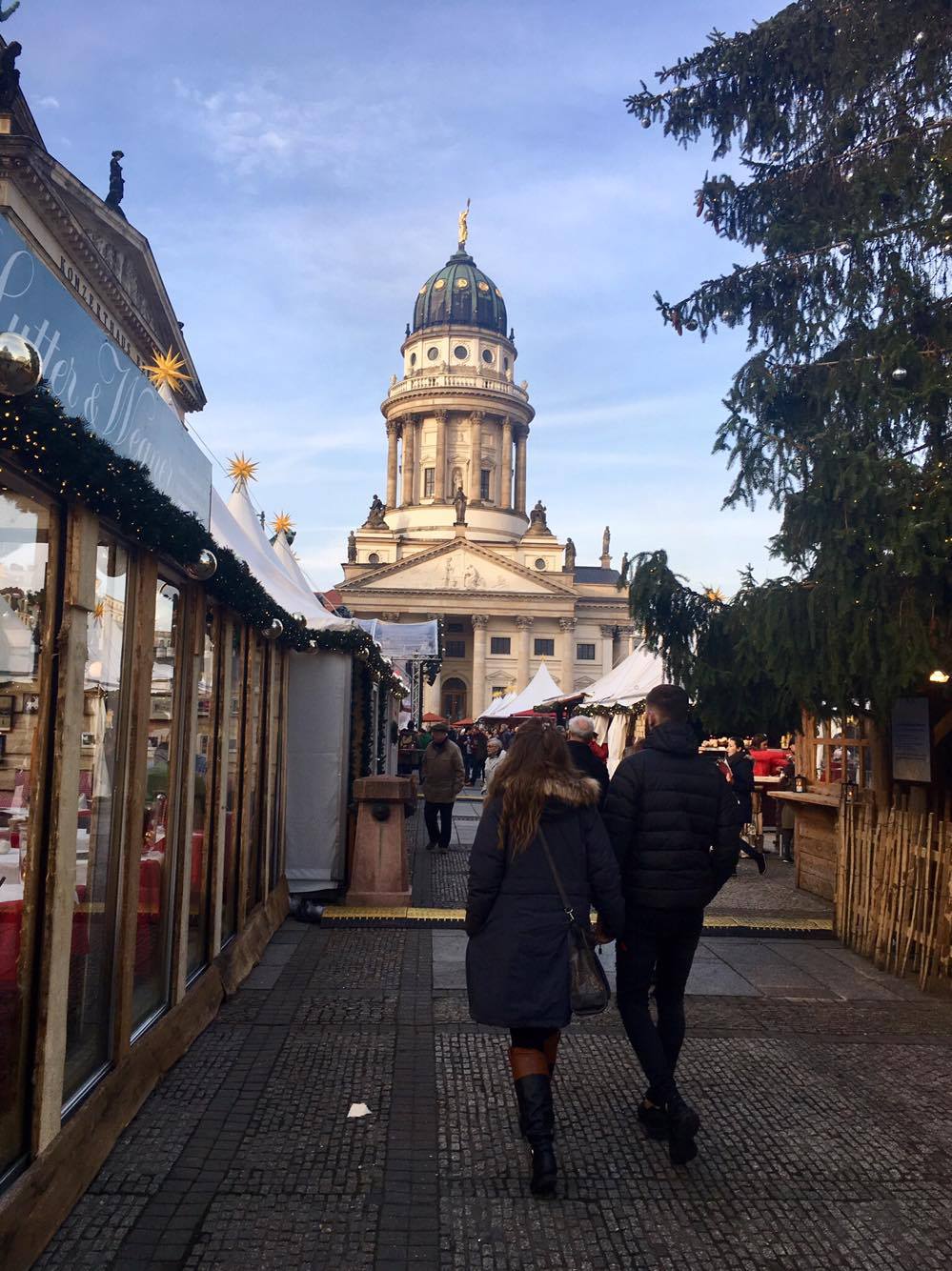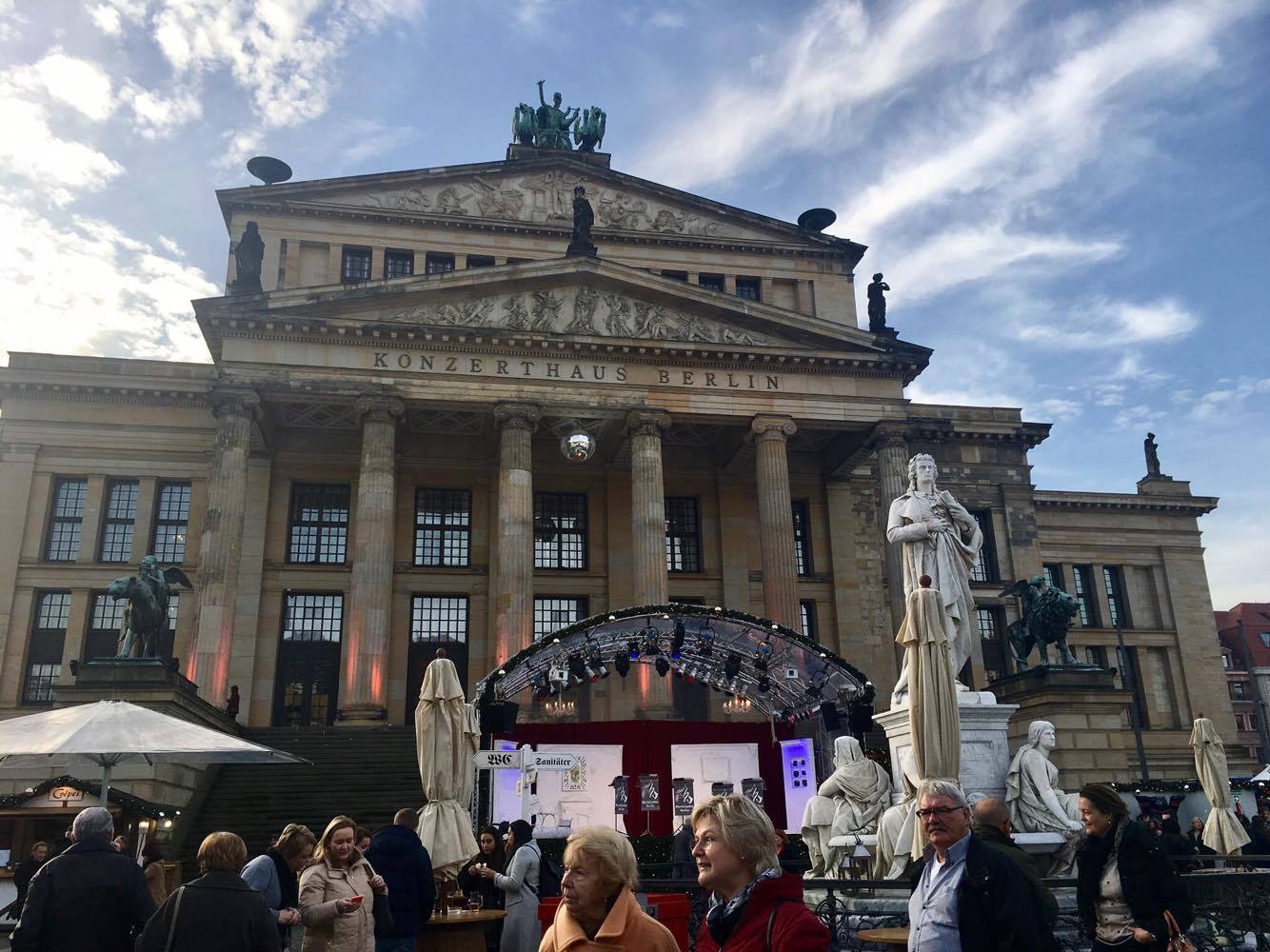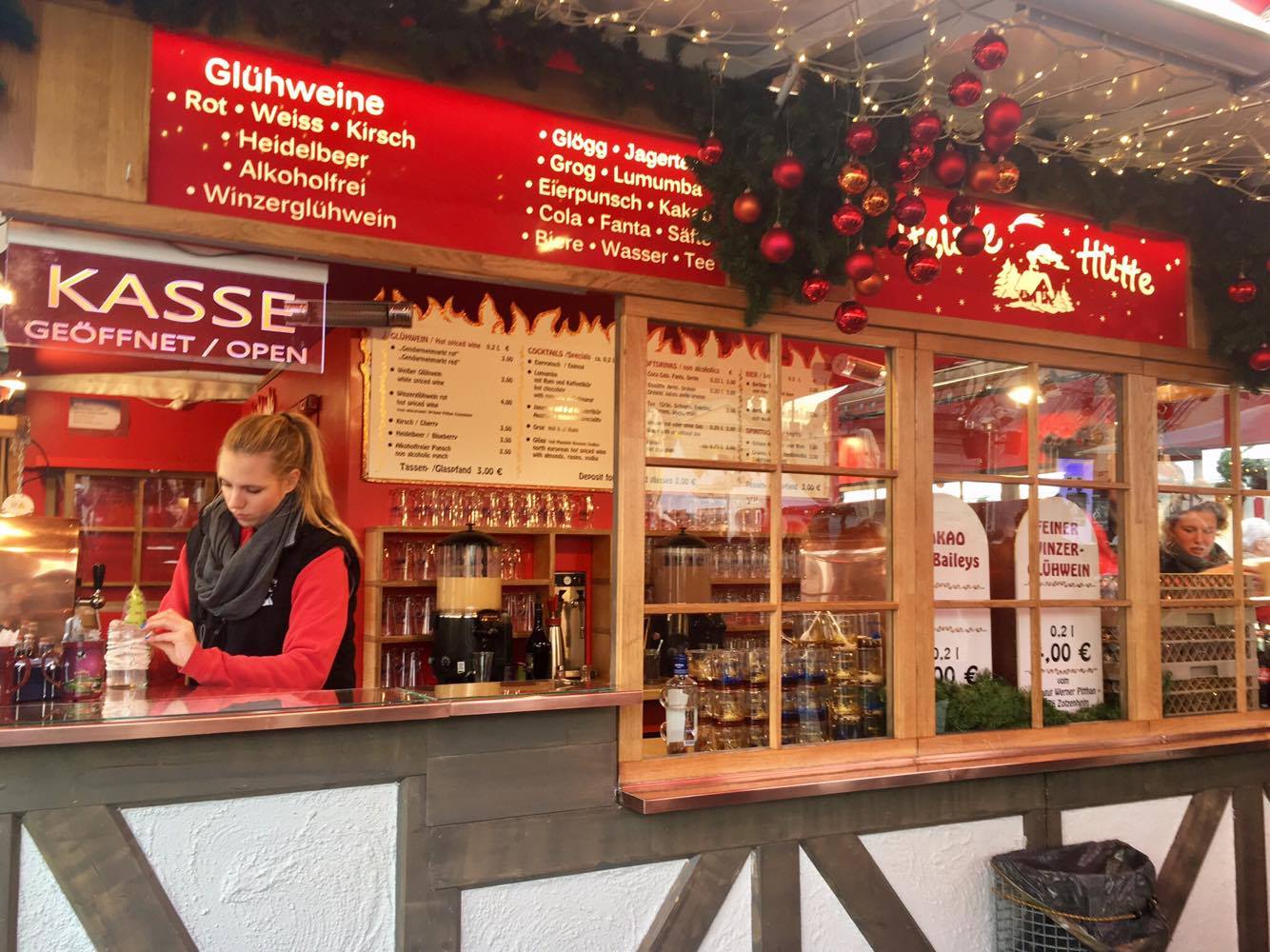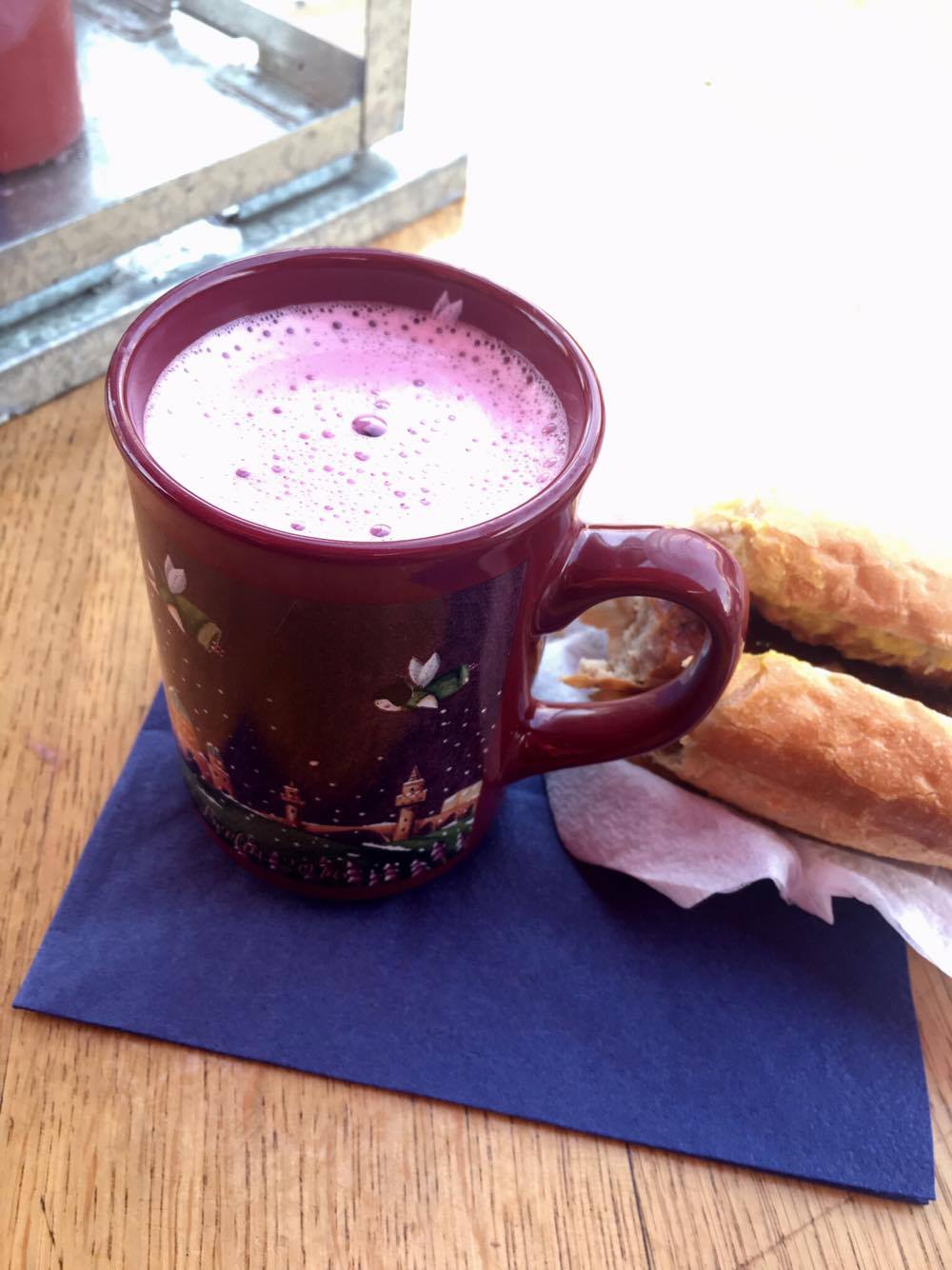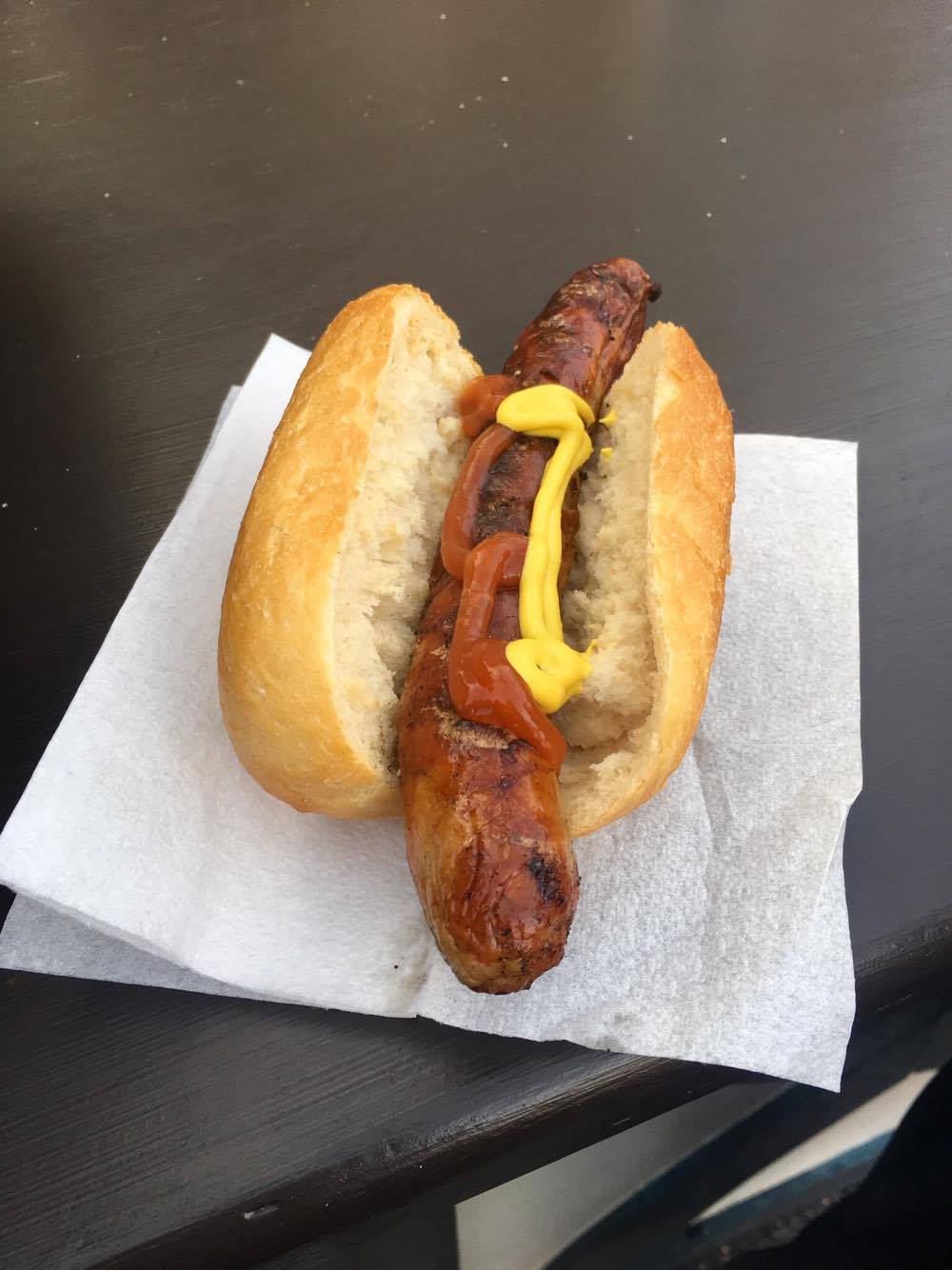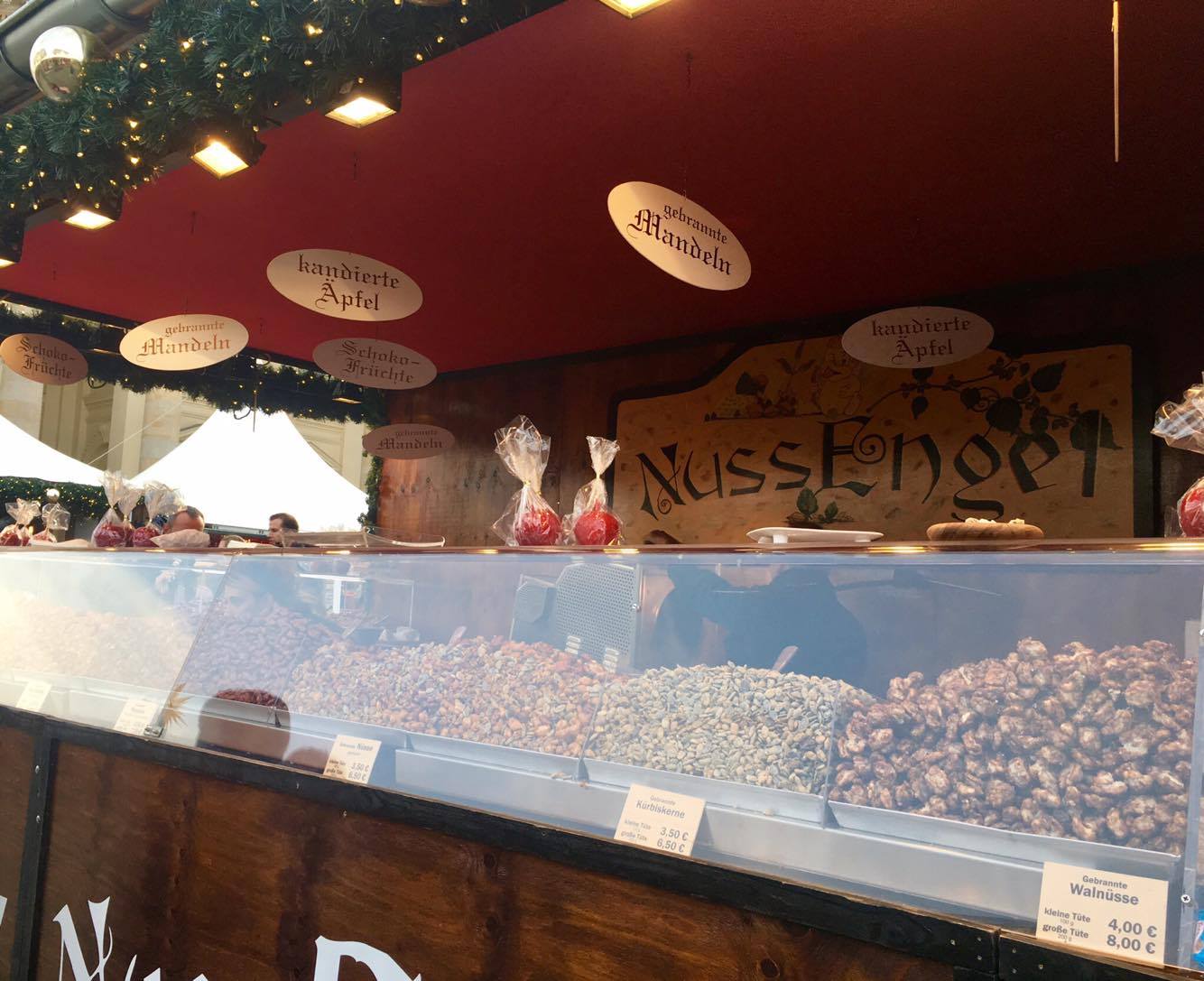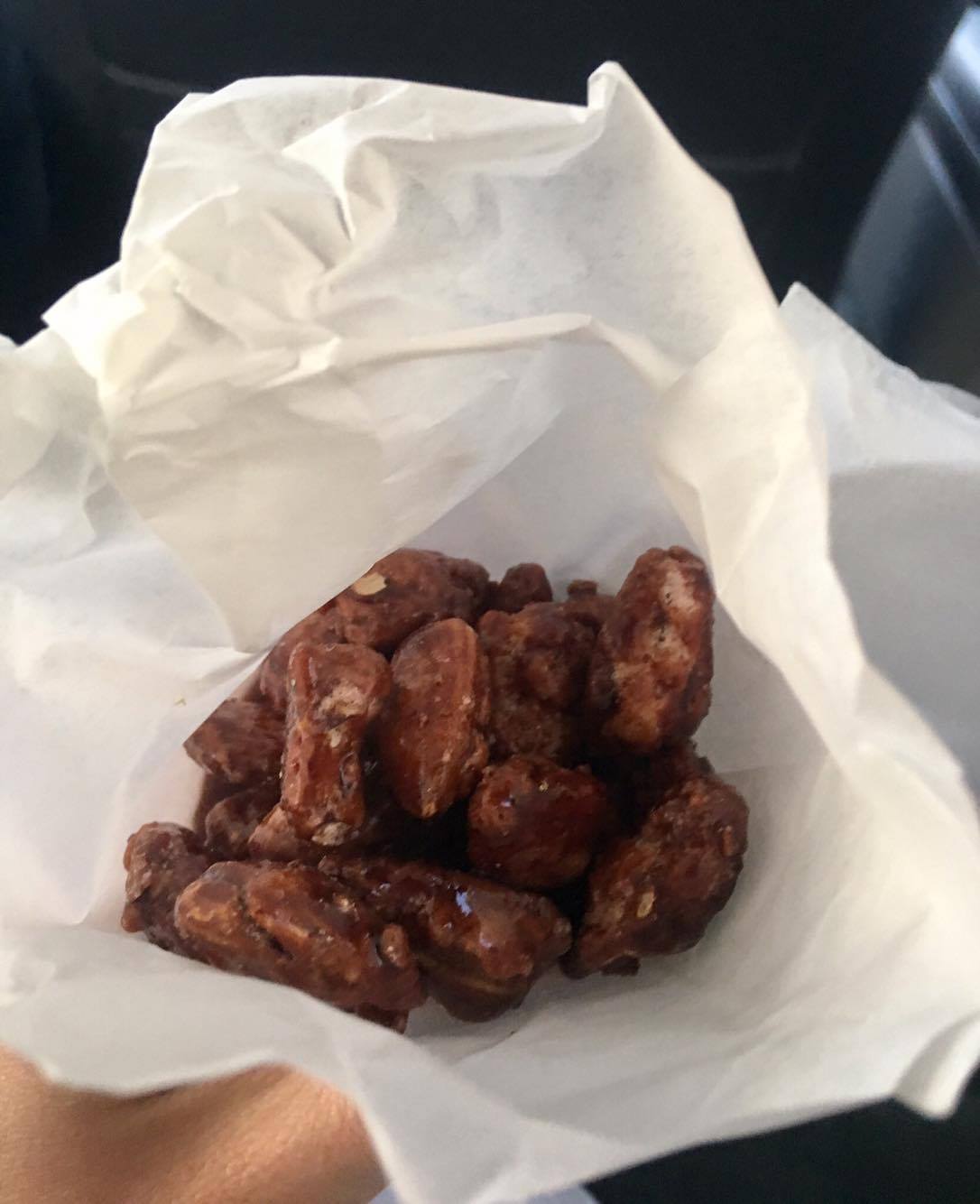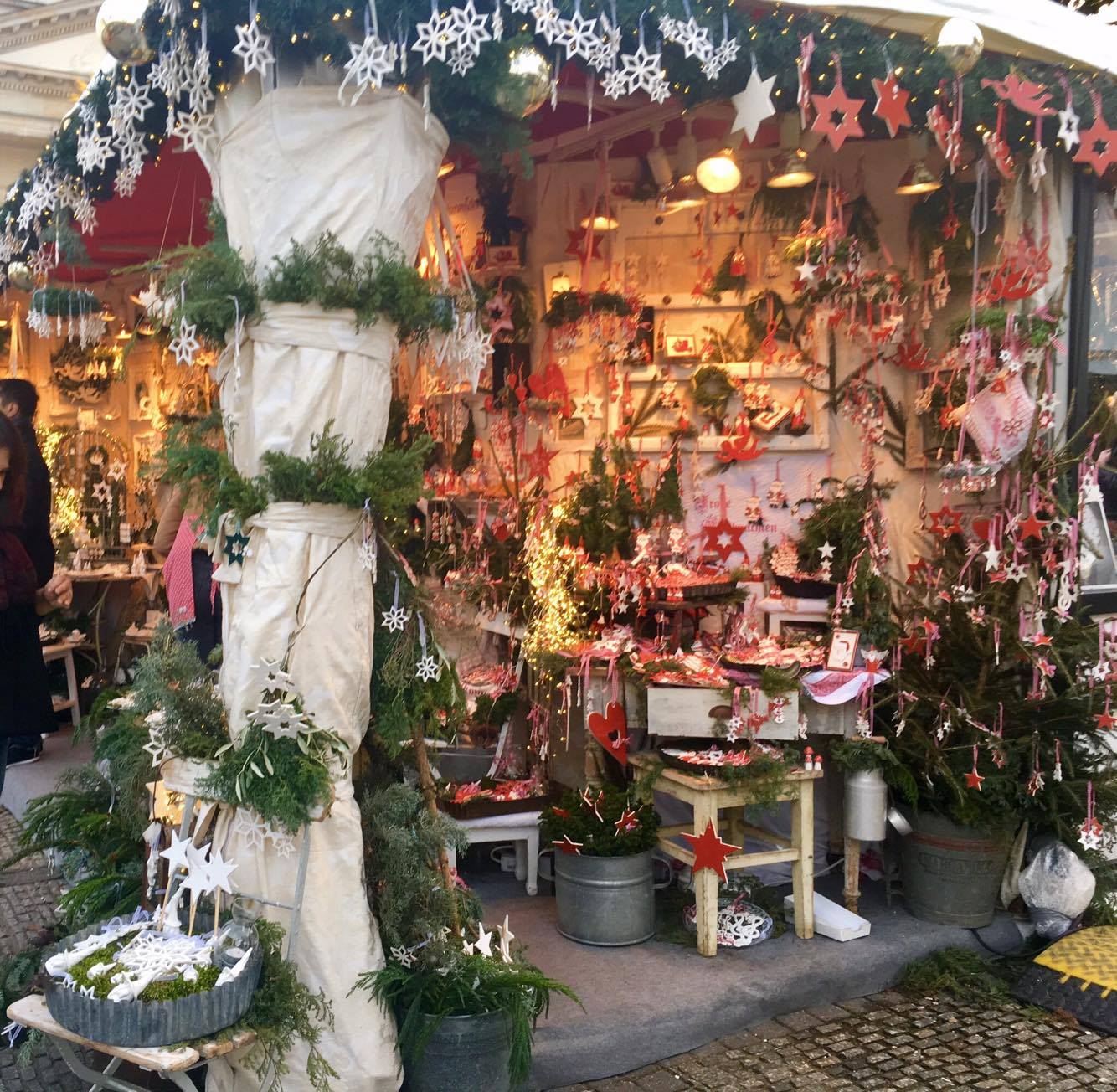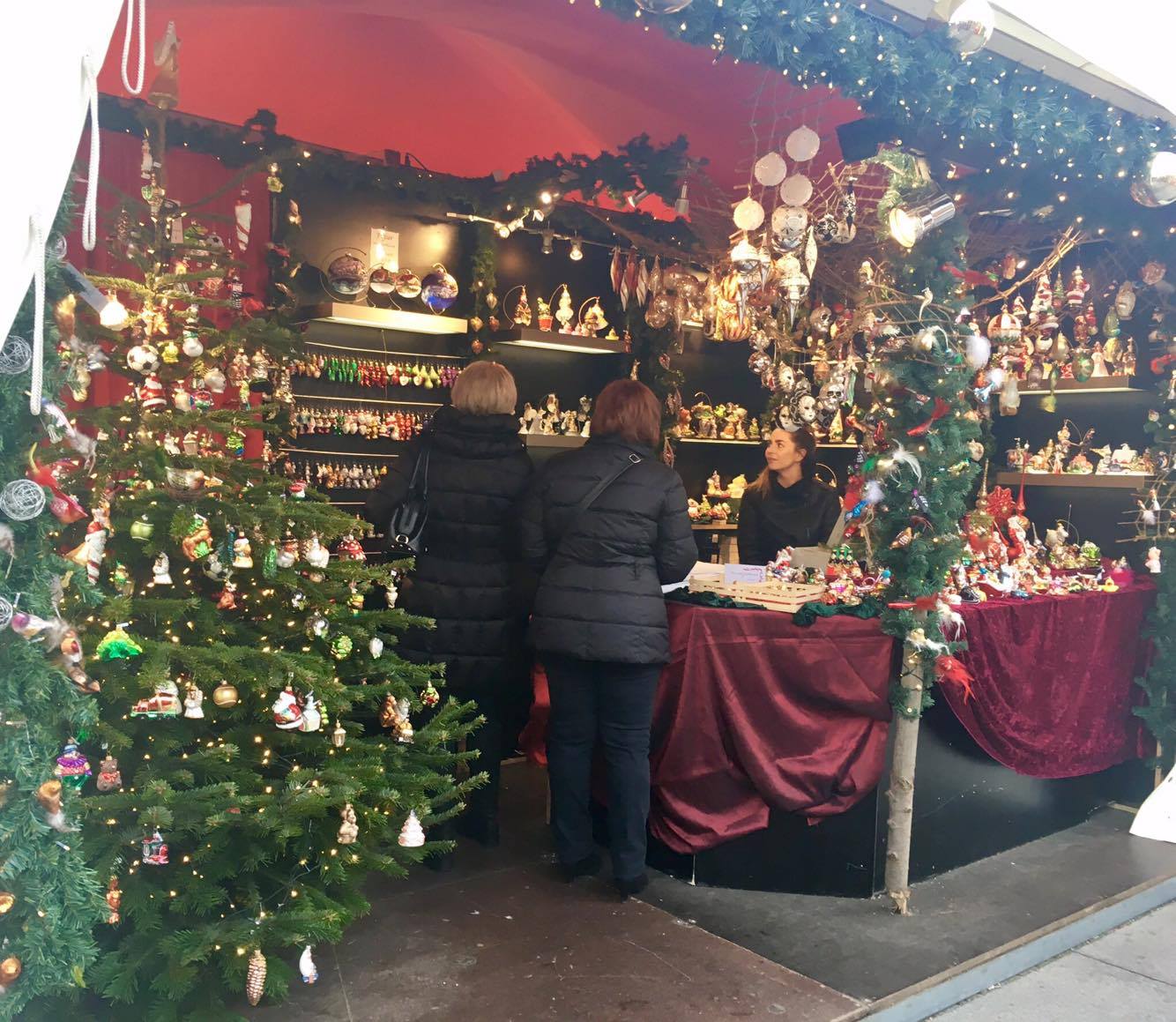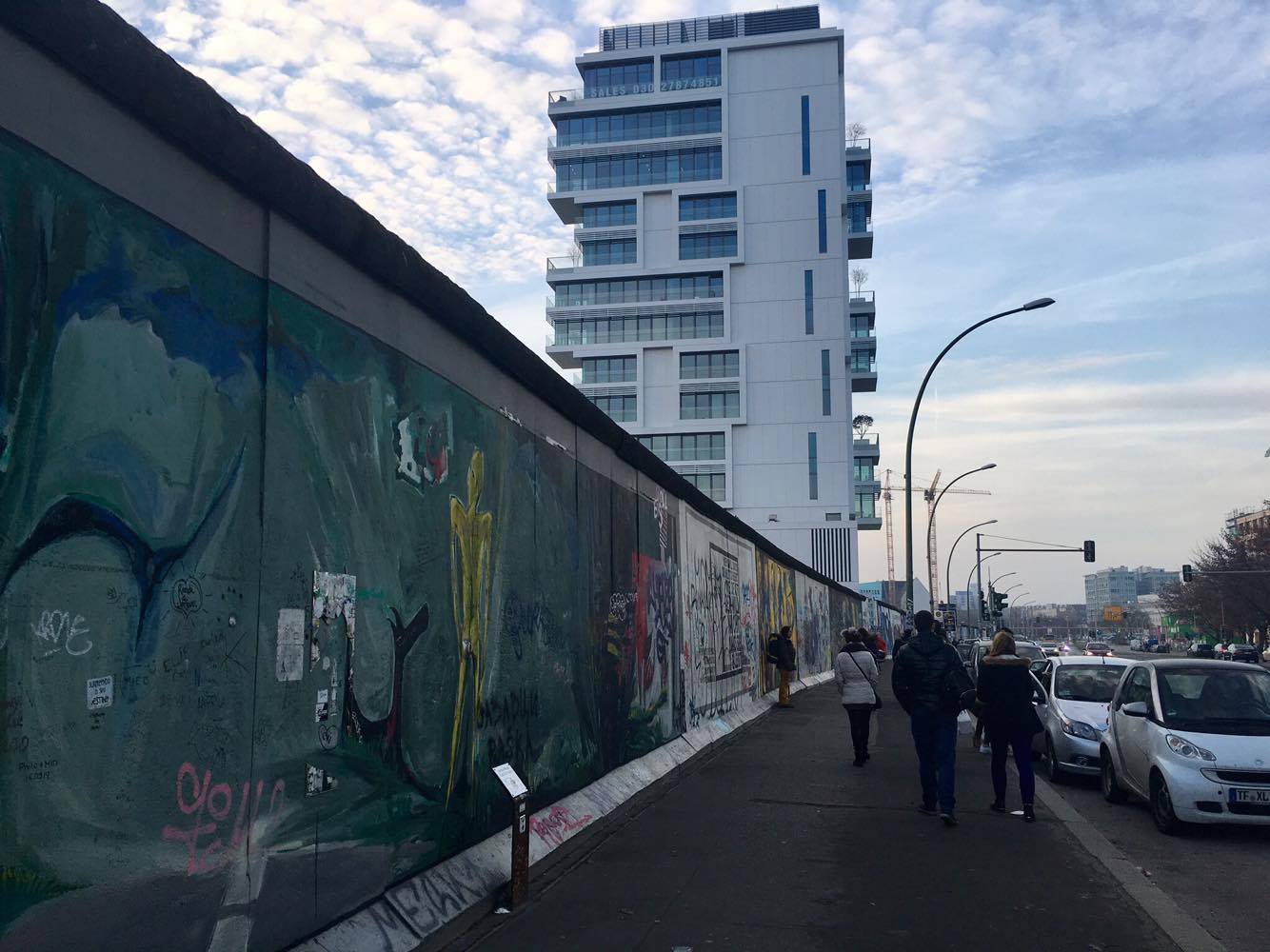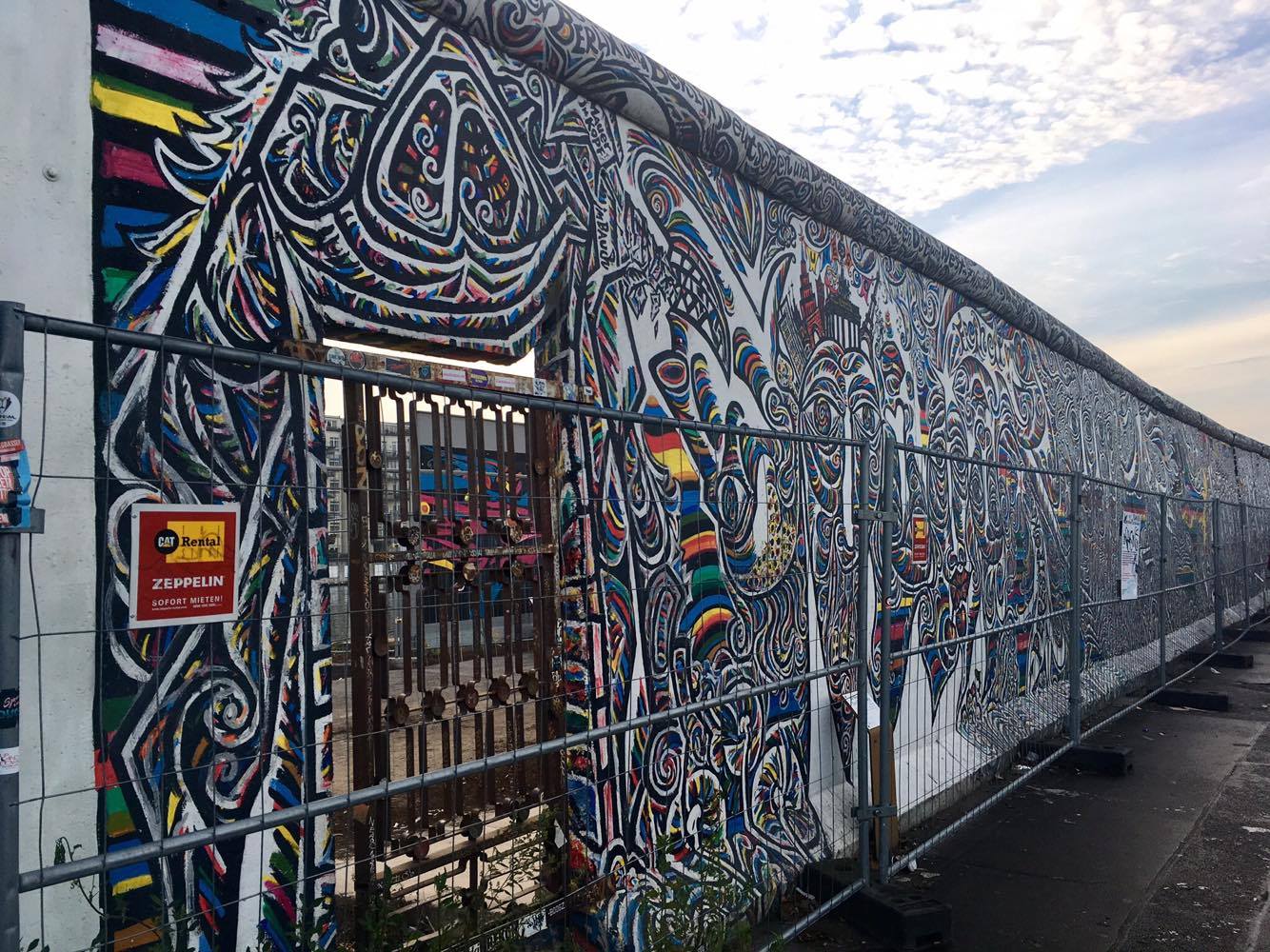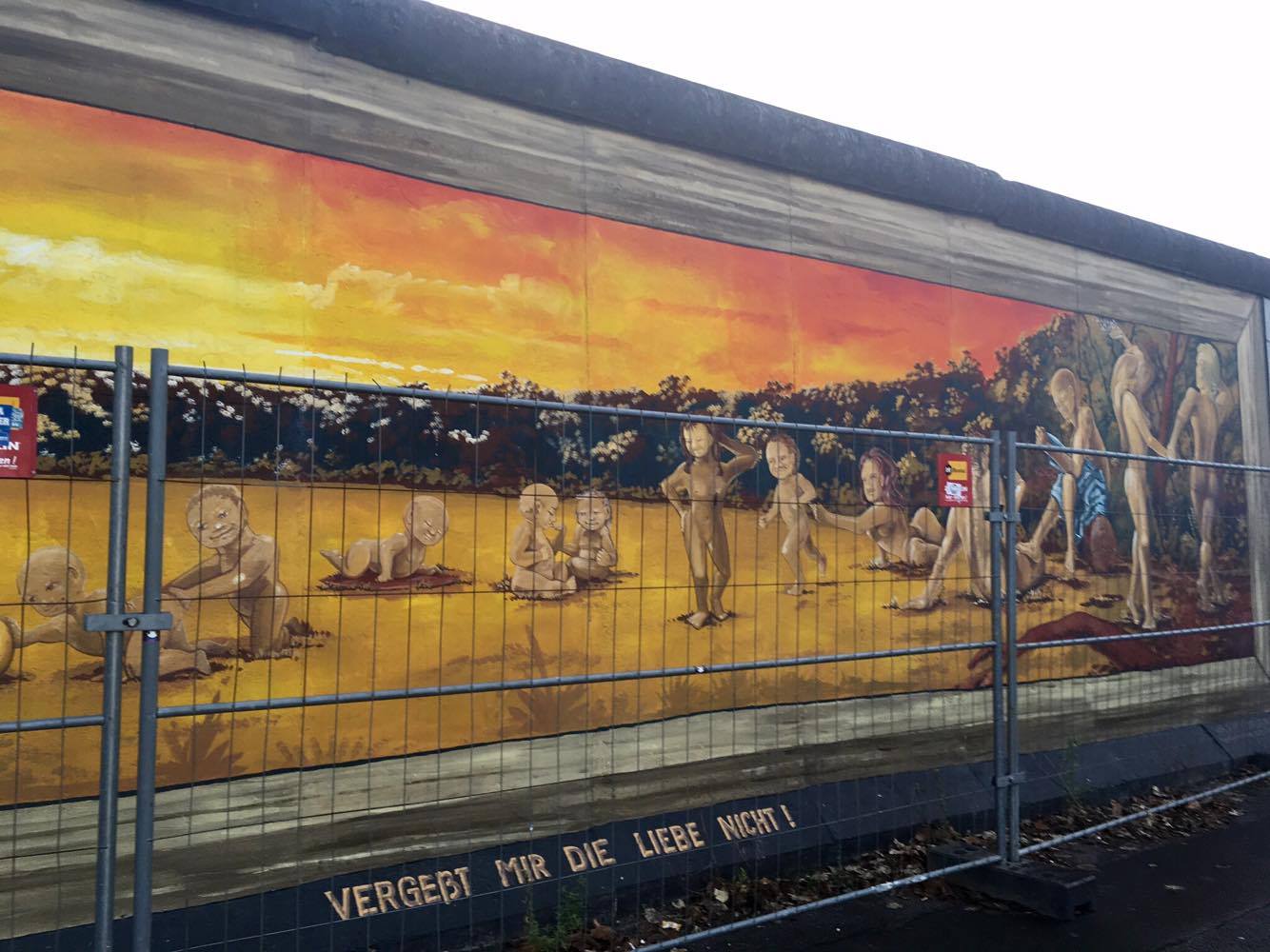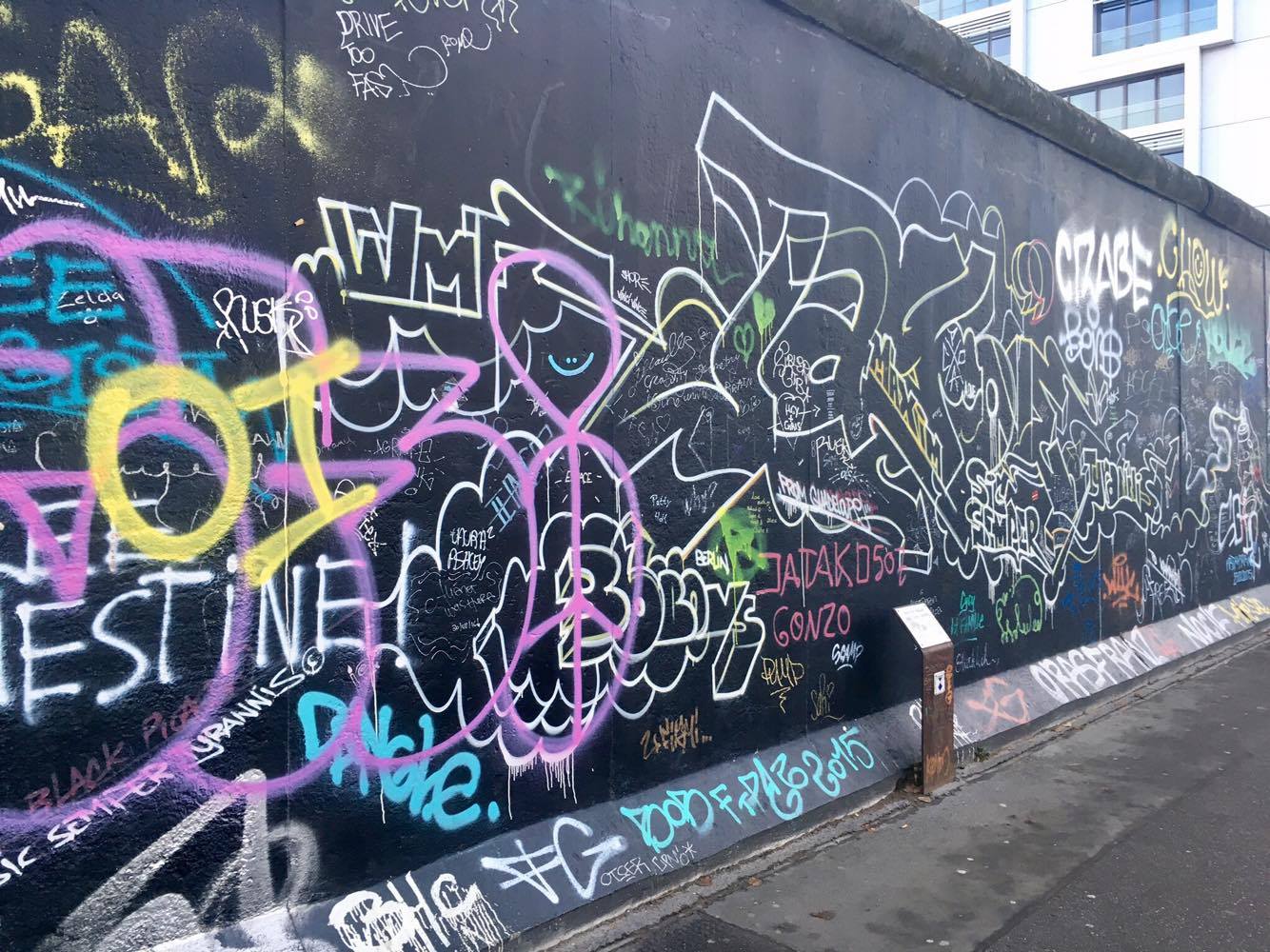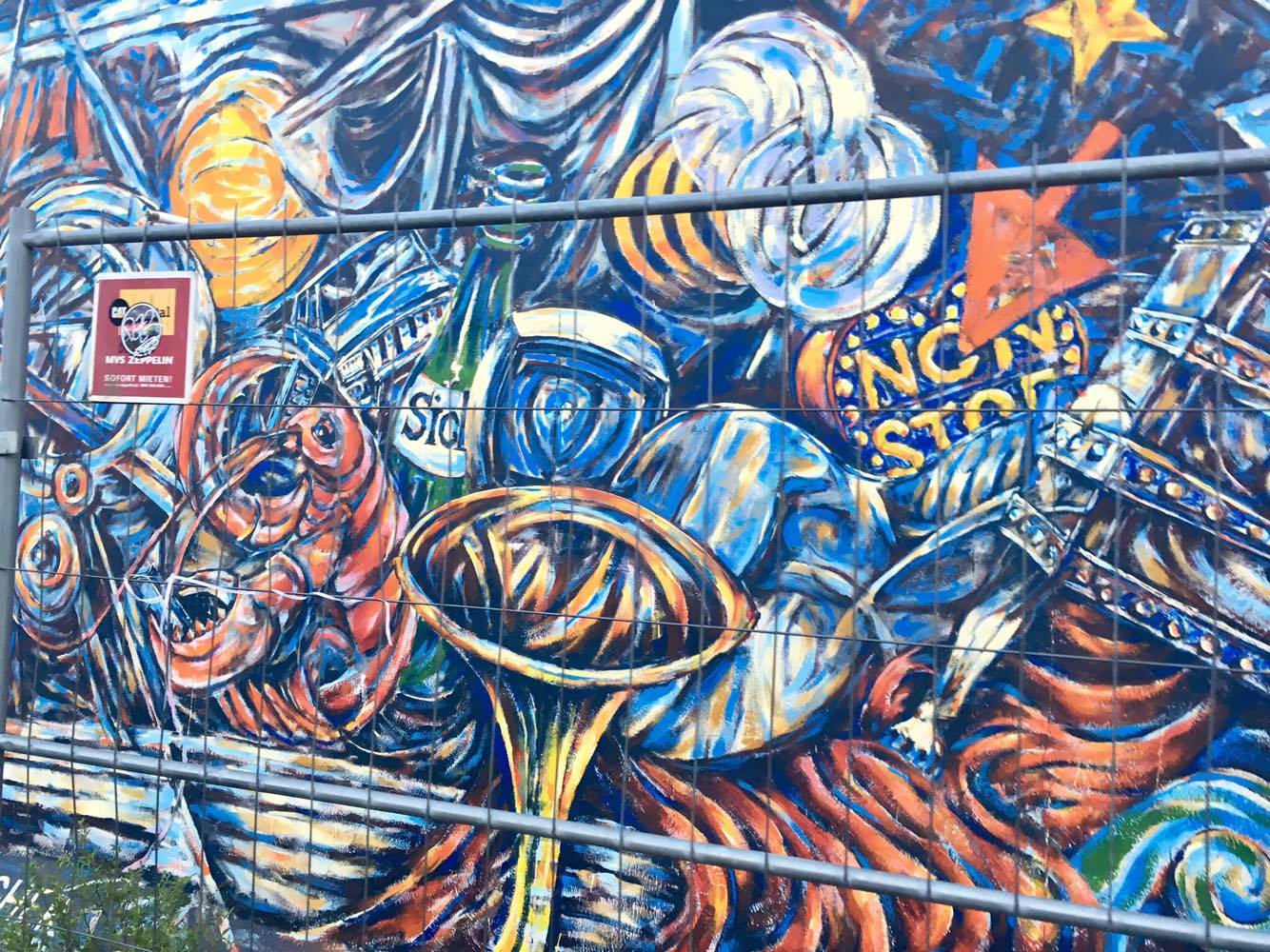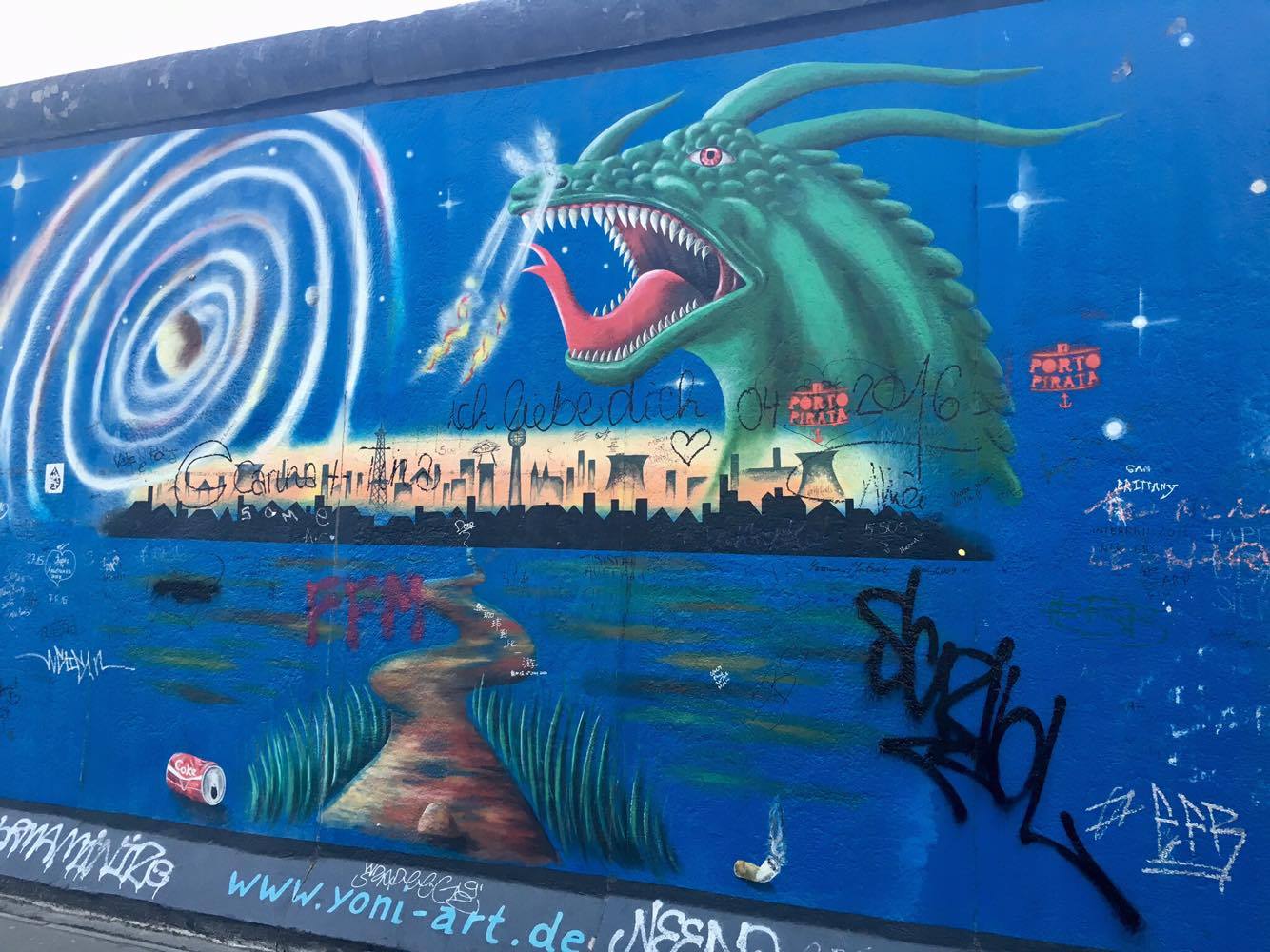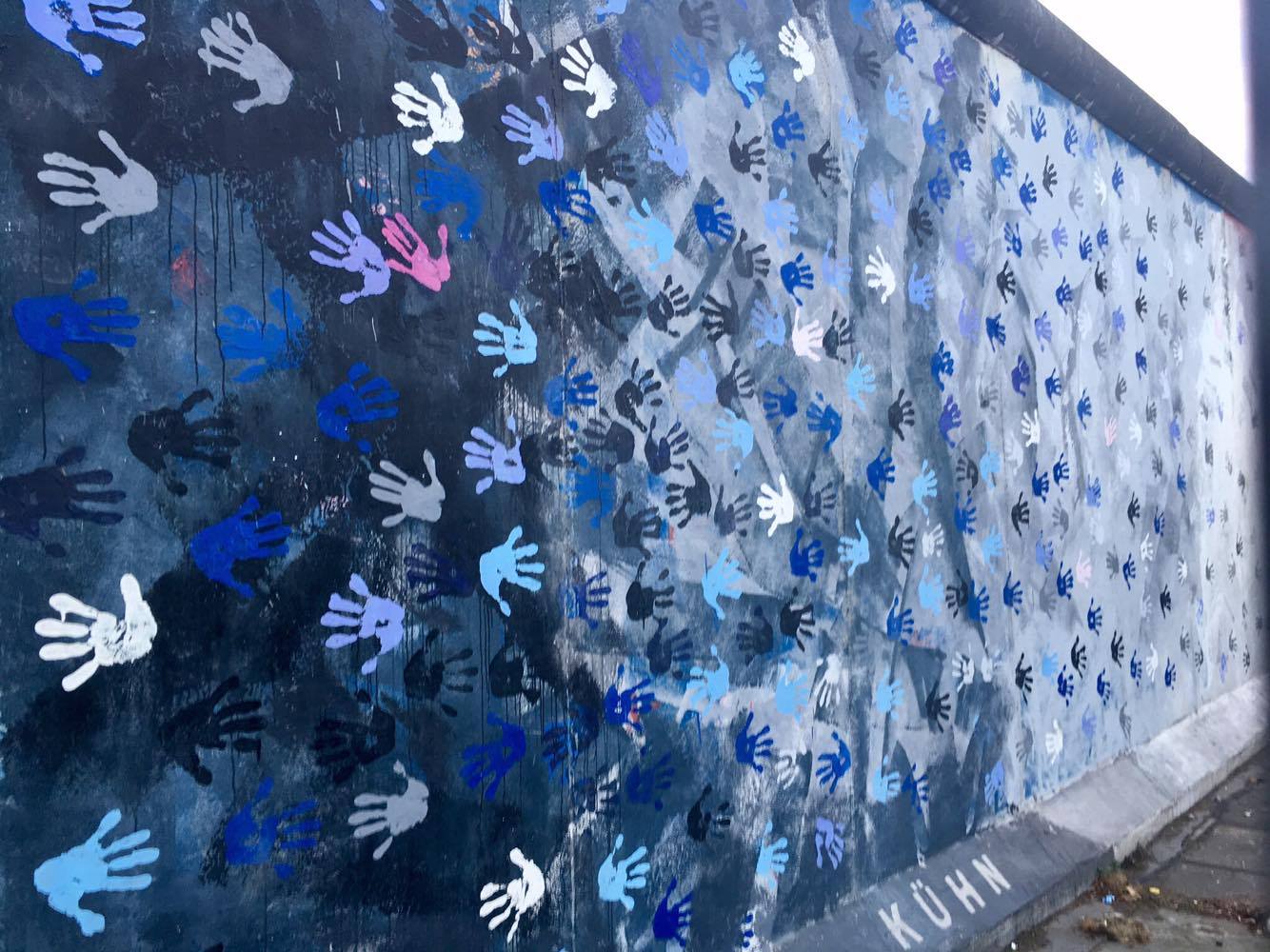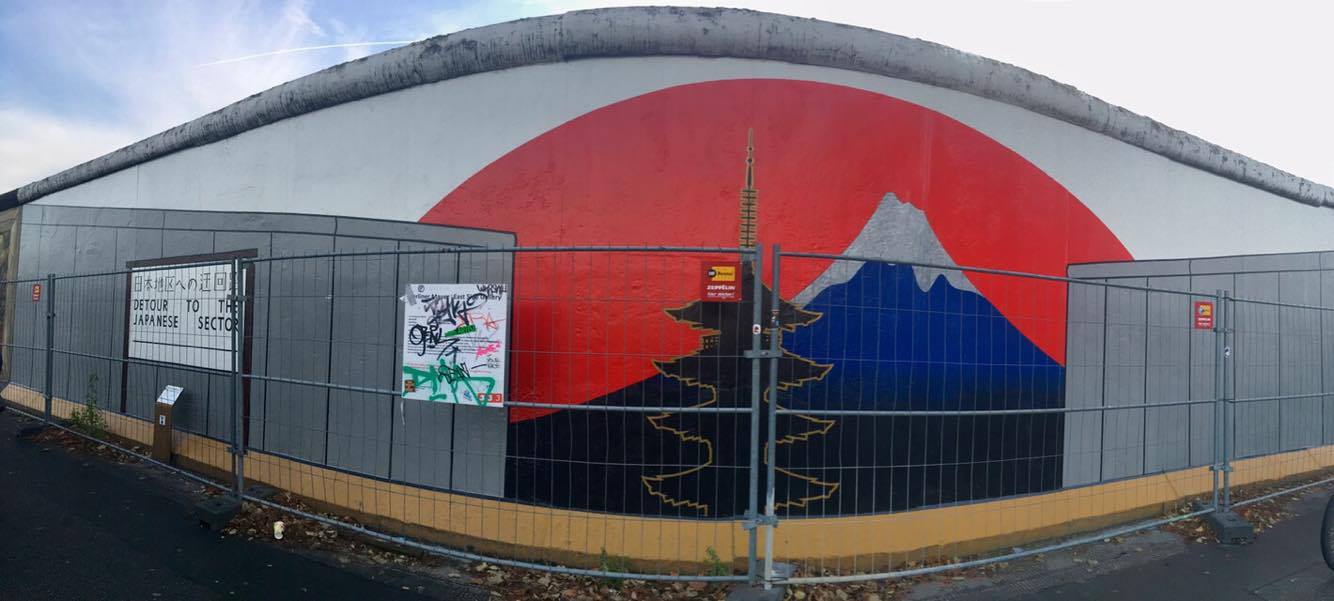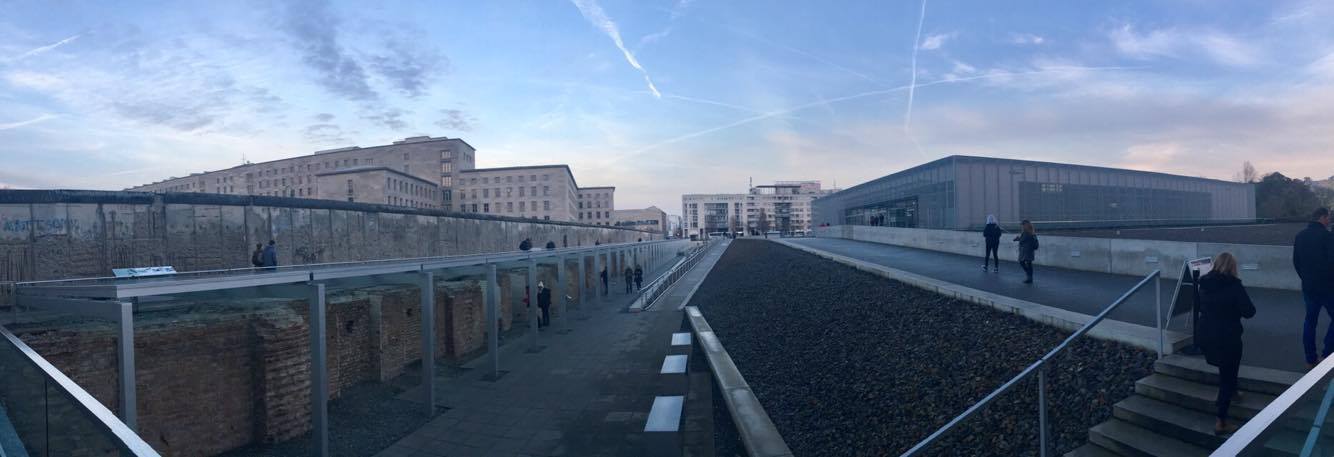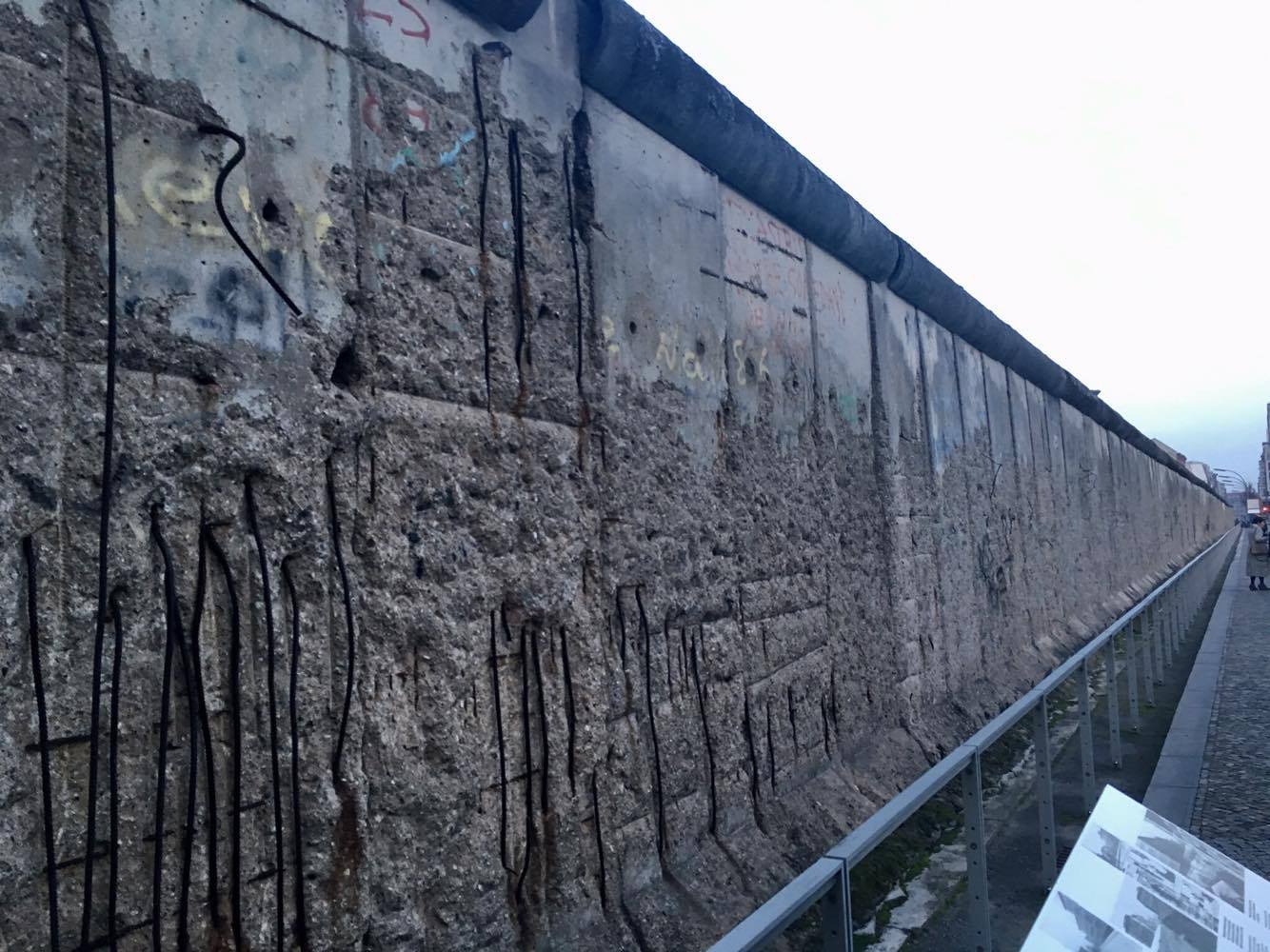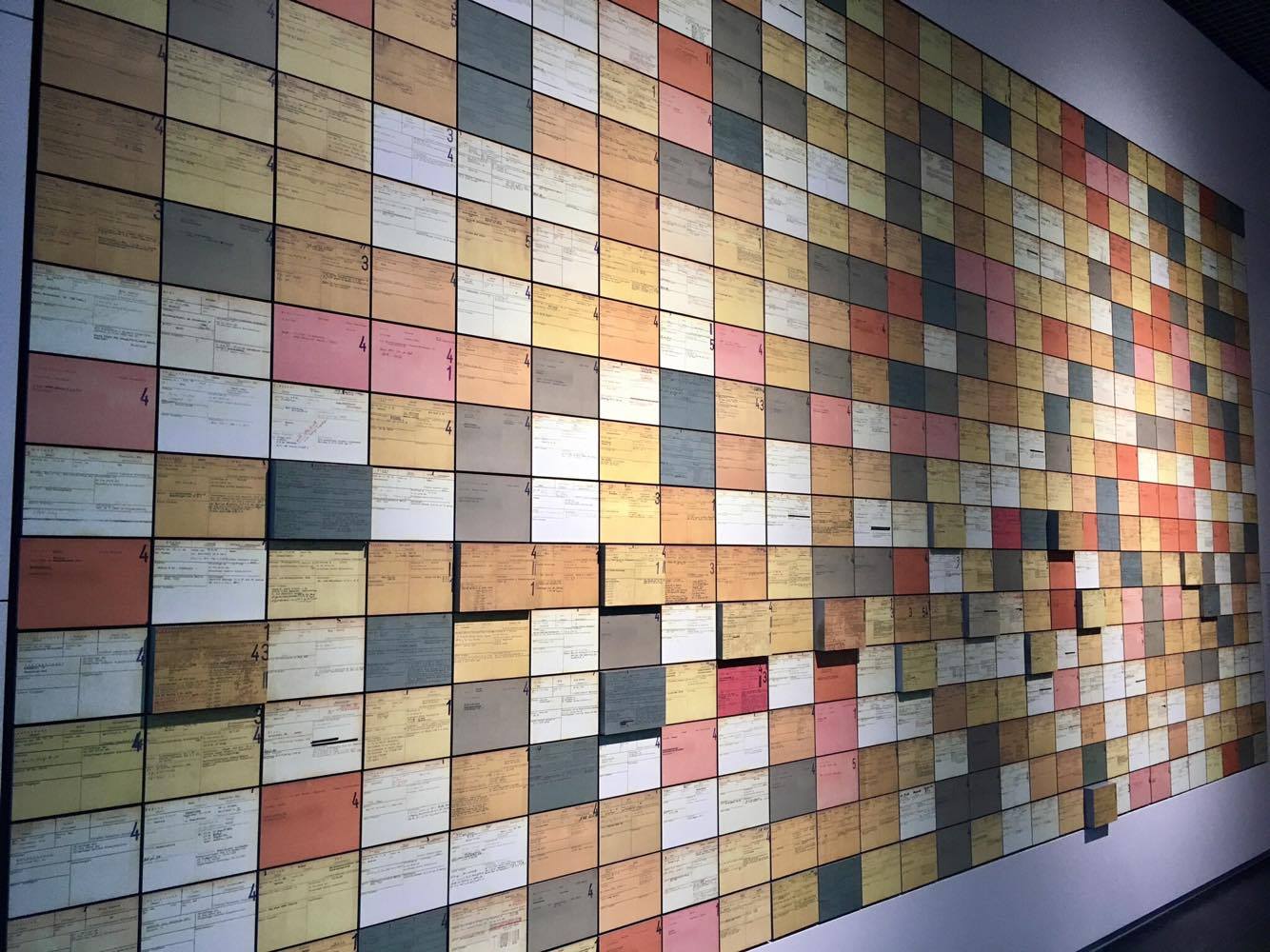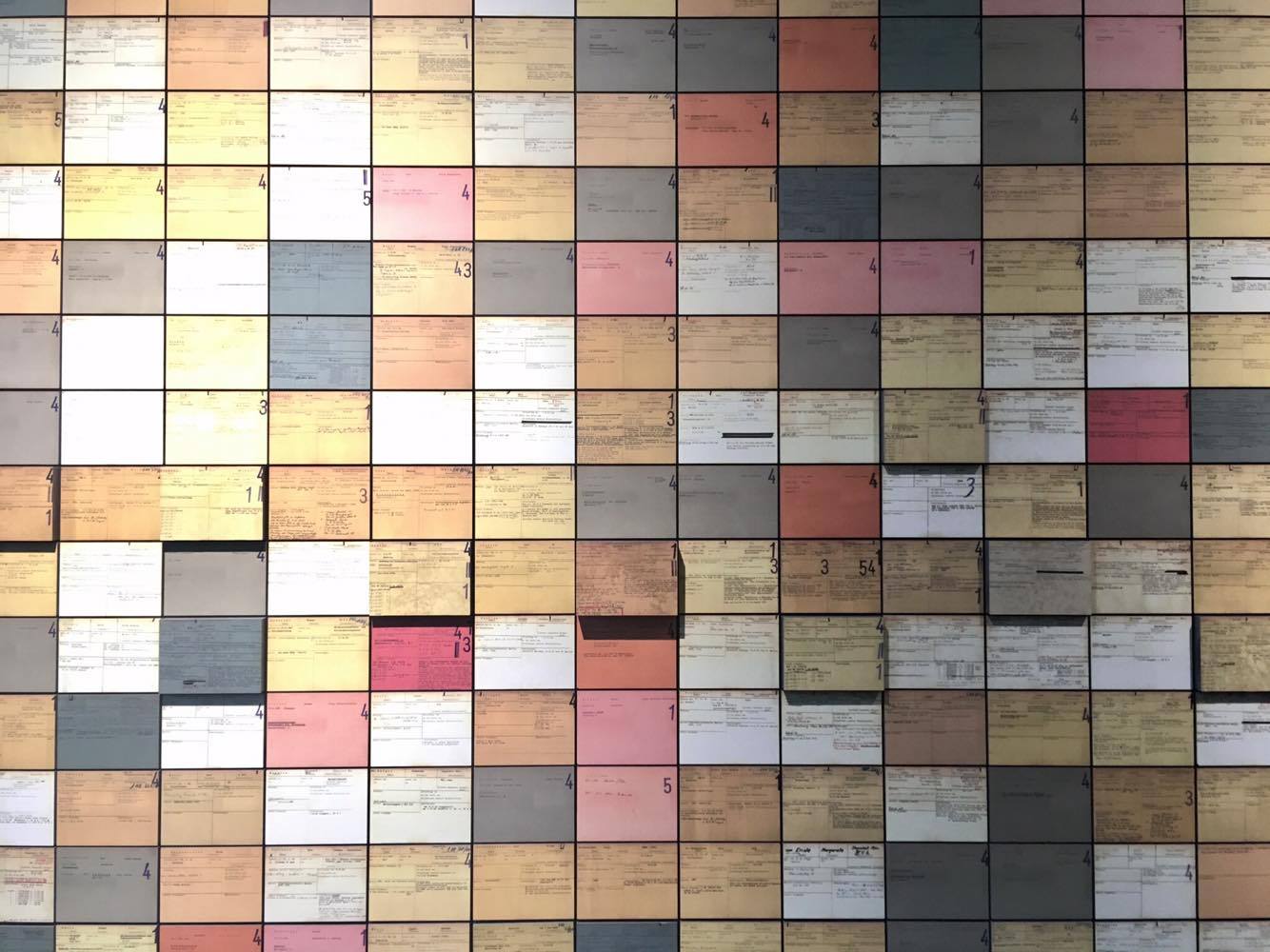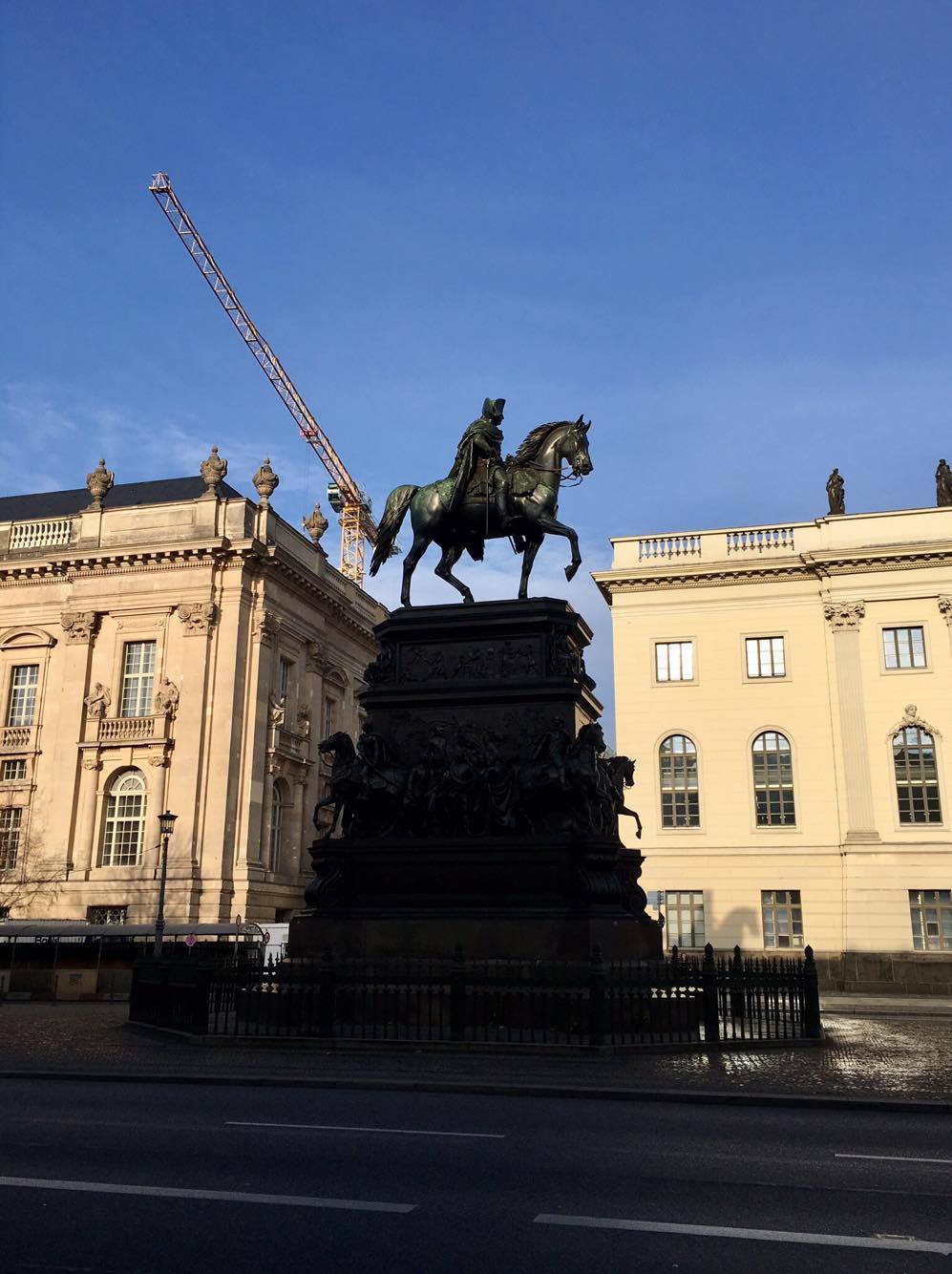Though much of Berlin was destroyed during WWII, the city impressed me with its respect of history, and the honesty with which the people, and the nation, acknowledges it. During my two days here, I browsed through endless exhibits within museum island, walked along the East-Side gallery, and had my fill of snacks unique to the city.
On my way to the Berliner Fernsehturm (Berlin TV Tower), I happened upon the Alexanderplatz Christmas Market. Having just gotten off the plane a few hours before and not yet eaten, and this being my first time in Germany, I was delighted to happen upon a place that had gathered traditional German treats in one location.
After some ambitious snacking, it was finally time to head to the Berliner Fernsehturm (TV Tower).
I spent my first afternoon in Berlin wandering around Museum Island, which as its name suggests, houses the various museums of the city. Unbeknownst to me, German was a very literal language. The Old Museum, the New Museum, The National Art Gallery, named for exactly what they housed, or in the order they were built.
My first stop was the Pergamon Museum, which houses the most visited exhibits and has an extensive collection of Egyptian Art. Parts of the museum were under extensive renovation, and as such I didn't take a comprehensive tour of the artifacts on display, but worth a visit if you're interested in the ancient Egyptian architecture, especially.
My next stop was the Neues Museum, most well known for housing the famed Bust of Nefertiti. Besides some of the most comprehensive collections of Egyptian artifacts, the museum exhibits were also a sight to behold in terms architecture and design. Reconstructed after WWII with the vision of David Chipperfield, I found many layout of the artifacts and the rooms that housed them nearly as intriguing as the relics themselves.
My final museum was the Alte Nationalgalerie, or The Old National Gallery of Art. Like I said, literal.
Also on Museum Island, the Berliner Dom (the Berlin Cathedral), which one can ascend for a few euros.
Two museums that I didn't have time for but would highly suggest are the Altes Museum (The Old Museum, pictured below), and the Bode Museum, at the northern end of the island.
I used the last few hours of daylight and the early evening to explore the neighborhood of Kreuzberg, bordering the Berlin Wall's East Side Gallery and epicenter of Berlin's counterculture.
Crossing the Oberbaum Bridge into the district:
Graffiti has been elevated to an art form around the world, but especially here as an outlet and way to express so much of what has happened in the once-divided metropolis.
As it was dark, I explored the area mostly through food. Typical, I'm afraid.
Currywurst is one of the city's favorite, and famous late-night, drunken, hungover, munchies snacks. A sausage that has been sliced, topped with a sweet and savory tomato sauce and curry powder concoction. It can be served with fries, which also come with a side of the curry tomato sauce, and also mayonnaise. For my tasting, I chose this location because, well, it had no lines.
Delicious.
Germany may be landlocked on many sides, but locals have a taste for salted herring (like the Dutch), and salmon. Wakame is also popular, though the taste is much sweeter than the Japanese counterpart.
Known for having one of the largest Turkish populations outside of Turkey, much of the neighborhood's taste is influenced as appropriate. Another local favorite, the Doner Kebab, makes for a hearty meal any time of day.
A delightful Turkish confectionary store offers up some of the most authentic sweets you can find outside of the country.
Finally, a Turkish coffee at the next-door cafe to finish off the night, and rescue me from food coma.
I finish my first day in the city with a resonate performance by the Venice Baroque Orchestra at the Berliner Philharmoniker. The concert hall is home to the Berlin Philharmonic, one of the most internationally acclaimed orchestras around the world. They were on tour during the nights I visited (ironically, in New York at the time), but that night's performance by the Venice Baroque Orchestra was truly moving. They finished the evening with not one, not two, but five encores encouraged by the audience in a town where even one was rarity.
Day 2
I begin my second day in the city with a morning stroll along the river Spree, which runs through the city and partitions many of its districts. Greeted by clear skies, the day was off to a brilliant start.
The back of the Berlin Cathedral, with its shadows set against the river Spree.
My walk continues down the Unter den Linde, a main avenue within Berlin that passes many historical landmarks, and ends at the famed Brandenburg Gate.
Brandenburg Gate is situated in Paris Plaza, resulting from the French stealing the bronze statue situated at the top of the gate during war. When German (then Prussian) troops eventually recovered their statue, the original goddess of Eirene in the chariot to Victoria, no longer holding an olive-branch, indeed.
Starting the morning off with a Berliner donut, essentially a jelly donut, which J.F. Kennedy famously referred to himself as once, and a coffee. Oh, and a pretzel, because I'm in Germany, and felt especially compelled to see if they tasted different at the origin.
A few interesting things I discovered around the city. The pedestrian signals around the city is a transplanted design from East Berlin, reminiscent of a Soviet worker on his way somewhere.
Stumbling stones can be found on the cobble-stoned pavement and pedestrian walkways not only around Germany, but also in neighboring countries such as Prague. These blocks are found in front of buildings where a Jewish person used to live or work, meant as a symbol to commemorate them. Purposefully placed so that people may stumble on them while walking to elicit closer inspection, they are also meant to provoke questions so that we may never forget the atrocities of history.
This hot-air balloon rises above Berlin at 15 minute intervals. One can purchase a ticket to board the ballon for a panoramic view of the city. The ballon is branded with a major news channel of the Berlin, and derives its name from the source.
As mentioned earlier, one of the things that most impressed me was the authenticity with which the city addressed the role it has played during World War II. Monuments to the various groups that had been targeted during that era can be found around the city. The most famous among these is likely the Memorial to the Murdered Jews of Europe.
The memorial was deisgined by Peter Eisenman, who purposefully did not reveal what the hundreds of grey, concrete blocks of various sizes were meant to represent. He hoped that each individual walking through the monument can experience and express for themselves what they believe the blocks meant, and how it made them feel.
And indeed, walking amongst the blocks, which increased in height and width as one got to the middle of the monument, I couldn't help but feel somehow overwhelmed by the bleakness of the structures around me. I imagine at least part of the monotoned monument was meant to inspire the despair and grief that countless victims of the Holocaust must've felt during Hitter's reign of terror.
Taking a brief break from walking around the city, I coincidently happened upon another Christmas market. Oh, the joy (my tastebuds) felt in that moment. This particular market was WeihnachtsZauber at the Gendarmenmarkt, one of the most popular ones in the city, such that it even charged an one euro entrance fee.
Framed by the Französischer Dom, the Konzerthaus and the Deutscher Dom, the tents in the middle of the plaza created a wonderland of food, music, and festive cheer.
The best thing to keep you warm during winter? I discovered here that its not a coat, but Glühwein (mulled wine). Warms the heart and soul, I'm telling you.
Finally, the first and only sausage I consumed upon entering German territory. So very satisfying, and much, much better than your average hot-dog on the street. Mainly, notice it's the bread to sausage ratio.
I was told I must've leave the market without trying this Christmas staple: Gebrannte Mandeln. Essentially Germany's answer to candied almonds, they are coated by burning the sugar that's used to coat them, giving them that beautiful mocha glaze. So very sweet, though!
Oh, and they do sell things other than food at Christmas markets, in case you were wondering. I just happened to have a, let's say, particular (read: food-oriented), focus.
My second to last stop: the East-Side Gallery, again, so I can walk down its length in the hour before sunset.
Today the sections of the wall have mostly been filled. Artists of the originals return from time to time to re-do, polish, and touch-up their murals to fix vandalism and natural fading.
Perhaps the most famous (and certainly most photographed) mural along the wall, 'The Kiss' depicts an actual occurrence between Brezhnev and Honecker. Fraternal, indeed.
Finally, two of my personal favorites.
My final stop in the city was a historical one. The Topography of Terror is a vast documentation center and museum of the Holocaust era. To its left, the only remaining Nazi structure remains standing. Constructed in a certain style, it seemed decidedly bleak, as if symbolic of the death and destruction it had brought upon millions.
Another section of the Berlin Wall that remains in this area. Unbeknownst to many, the wall itself was actually constructed of more than one layer, with a 'death zone' in the center that trespassers were likely to be shot dead in.
The exterior of the museum itself:
Within the museum, rows upon rows of informational billboards document the Nazi party's rise to power, their role during WWII, and the aftermath of the atrocities committed.
A wall of letters written by victims of the Holocaust.
My time in Berlin had come to an end, on somewhat of a bleak note, I'm afraid. For a city that has undergone so much, and played such a critical part in modern history, the spirit of the city and its people are something to behold.
I end with a photo of the Statue of Frederick the Great, the longest reigning king of Prussia.
